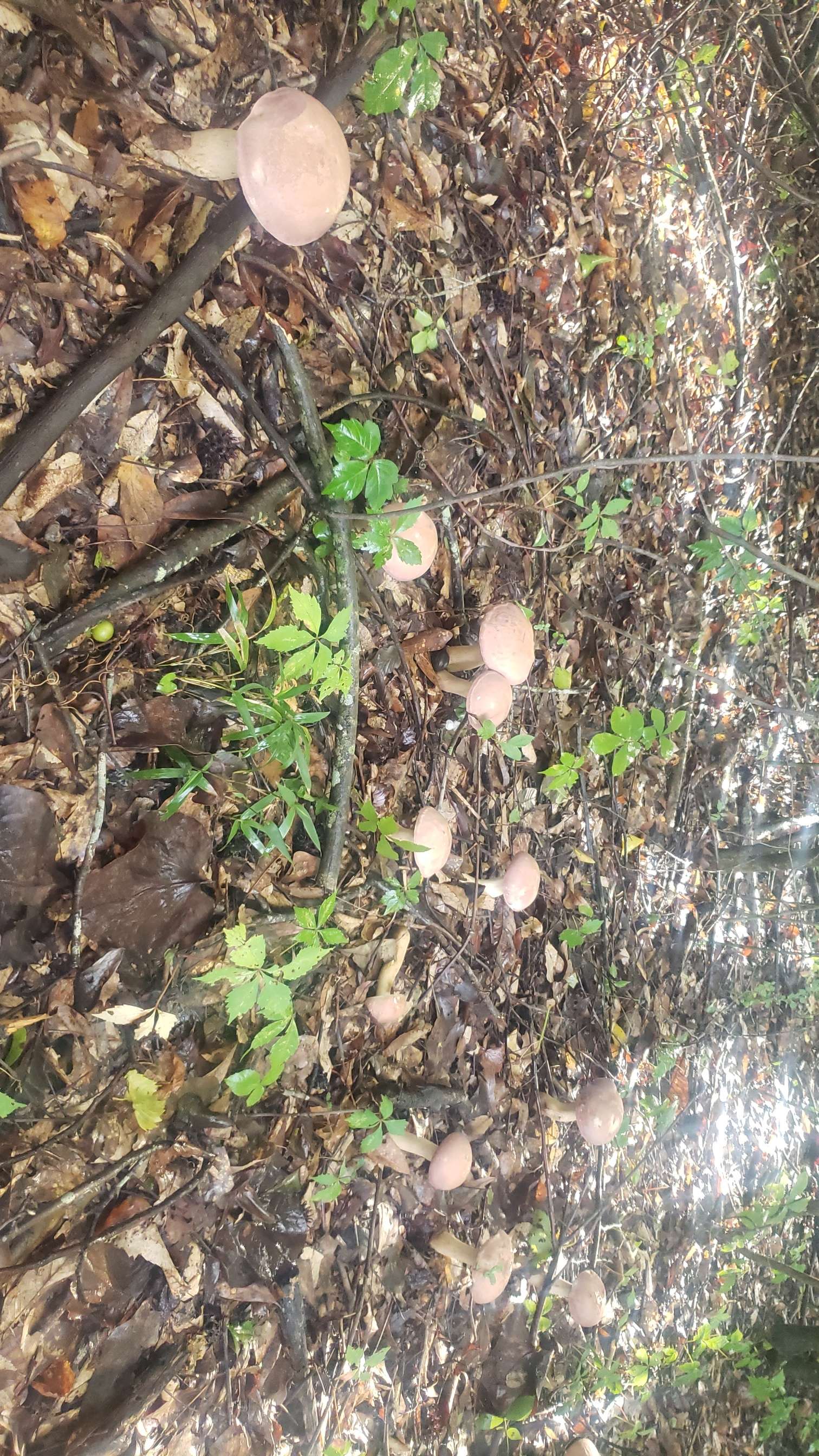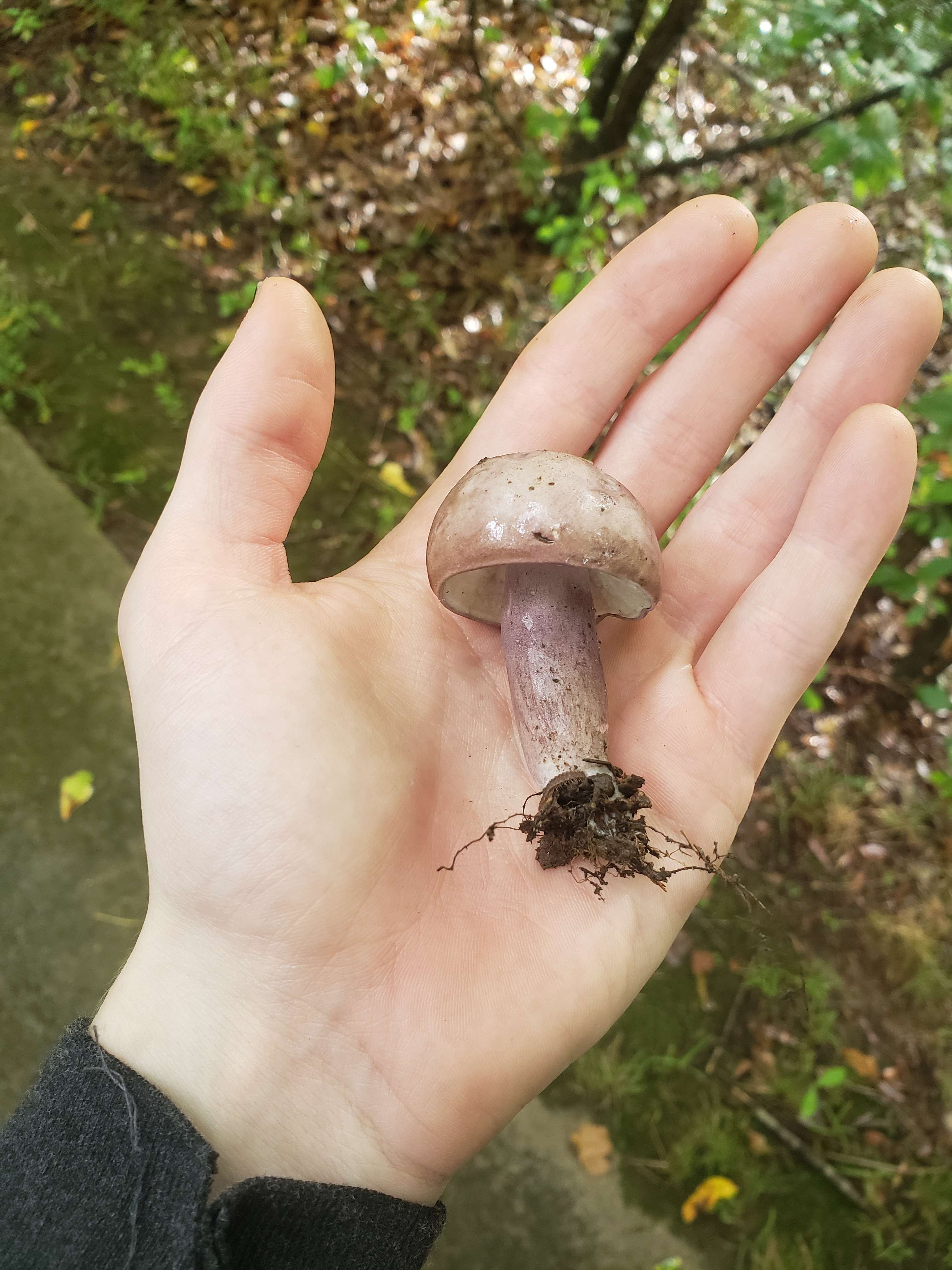Snow fungus or tremella fuciformis is a jelly like mushroom. Its slimey, small, and delicate but can bend a little without being damaged. This mushroom was one of the first truly strange and otherworldly mushrooms I'd ever observed in the wild. Apparently edible, but I've never tried or seen enough to be worth harvesting.
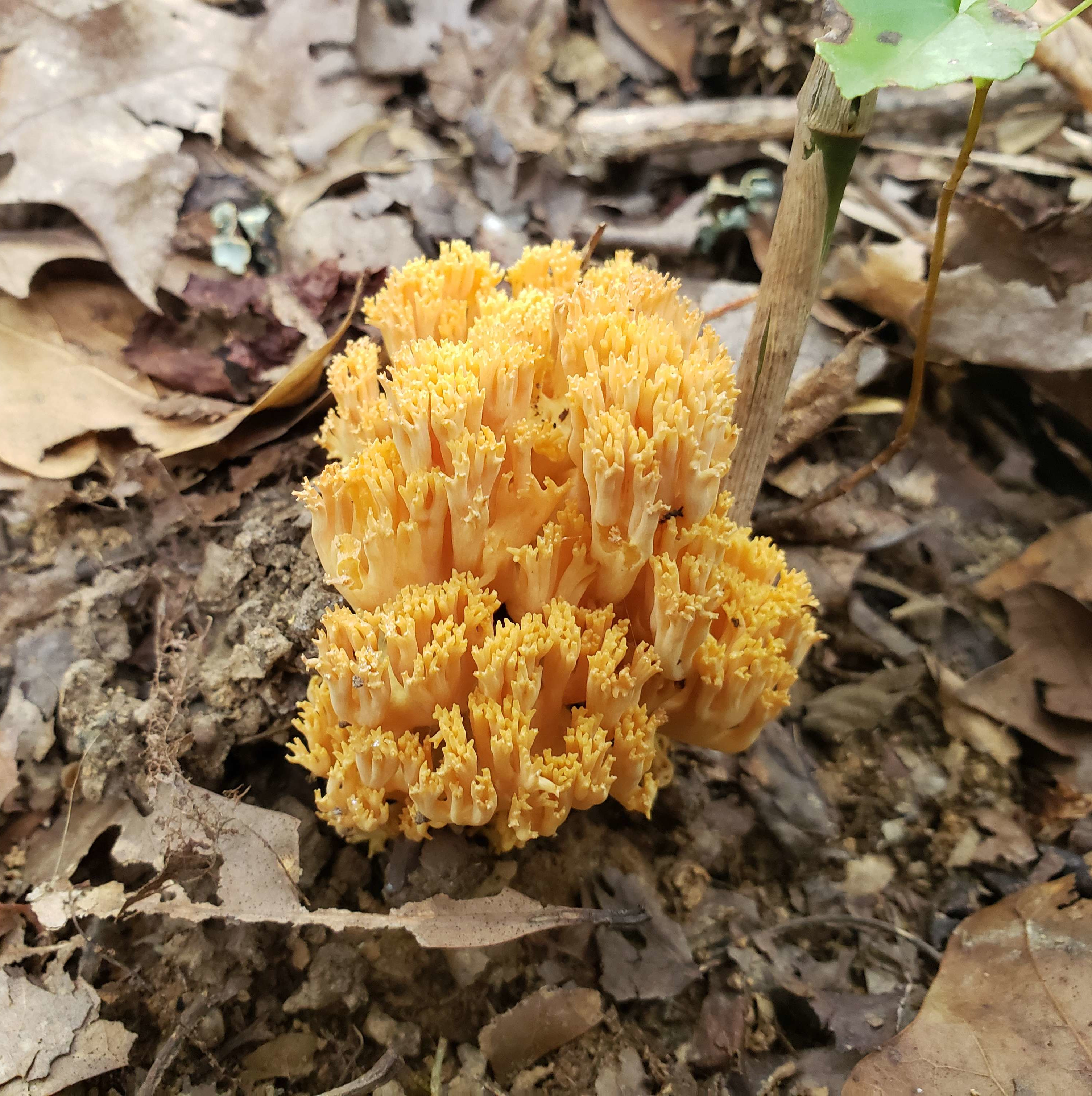
Another otherworldly mushroom, this time like a fairy tale castle. This is ramaria aurea. I always imagine myself as a tiny creature squatting inside one of these like an abandoned castle long after all the kings have gone. They can be about 6 inches long, 4 wide and grow by themselves or in clusters. They are pretty breakable but a little flexible. Other known coral mushrooms like this can be different colors like white or pale, orange and purple. Some sources on the internet say this is edible, my guide book says it is not. I haven't tried though. Such is the struggle of mycologists everywhere.
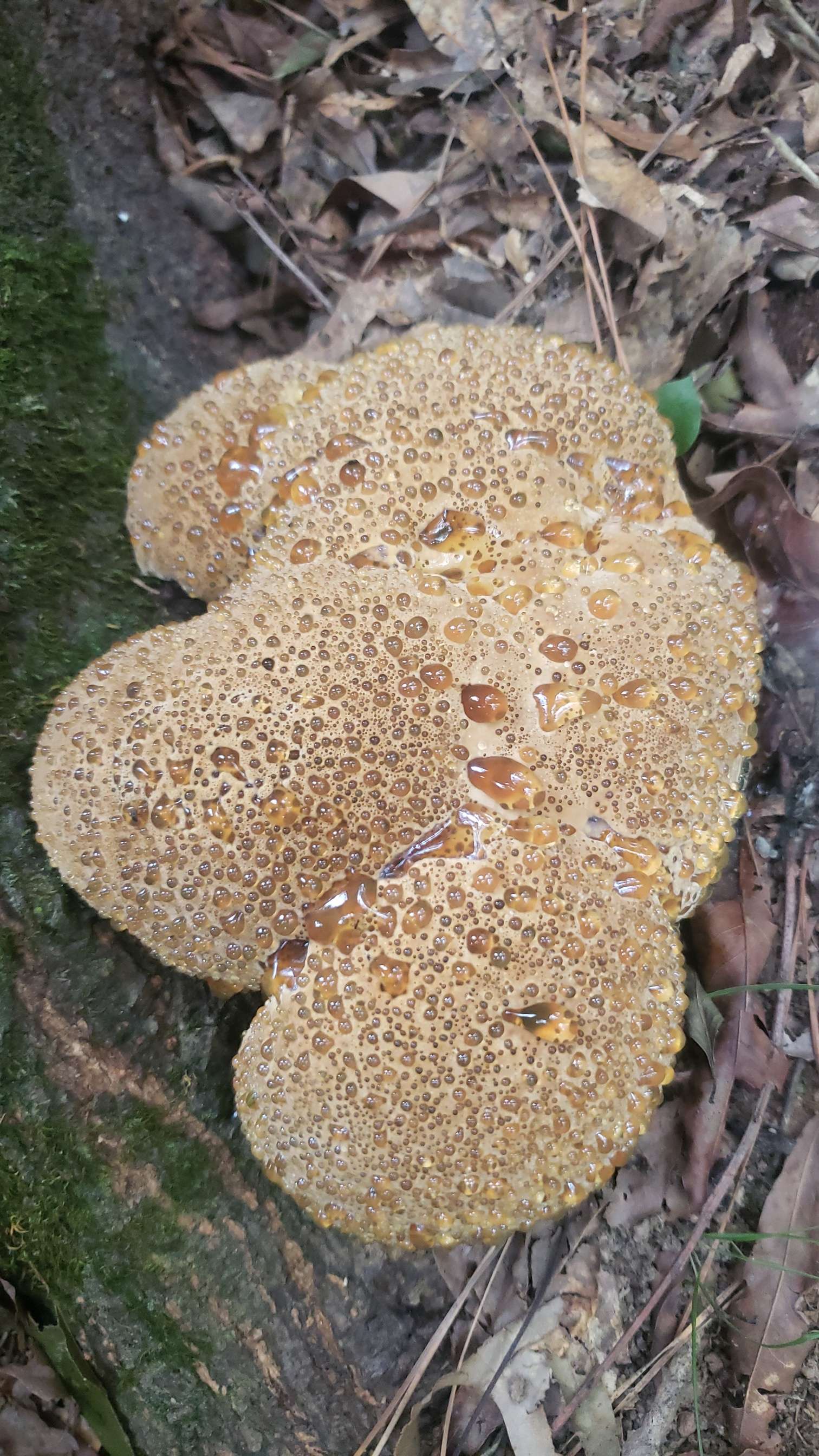
The weeping oak bracket is a parasitic fungi that consumes wood. It causes white rot. There is a wikipedia entry on white rot thats pretty dense. Some mushrooms grow on non living things, some grow with other organisms to better the lives of each other and there are some that grow like vampires on their hosts. Oak bracket is firmly attached to what its growing on. Where its not wet with this mysterious amber fluid thats pooling on top of it, its strangely soft and fuzzy like fabric or moss on top of a rock. They grow at the base of trees and can get pretty big.

Amanita vaginata or the grisette is a very pretty mushroom to me. It's grey cap with striation running up and down looks sort of similar to reptile skin or fish scales. Note its long creamy textureless stem. This is edible however I haven't eat one. This amanita is part of a complex, or as far as I understand it; its one specific mushroom that has a family of very similar but genetically distinct members. How dangerous does that make it? I don't really know. The amanita genius is not still very understood to modern scientists but there are some experts out there. But it should be mentioned that the amanita genus contains some of the deadliest poisons known.
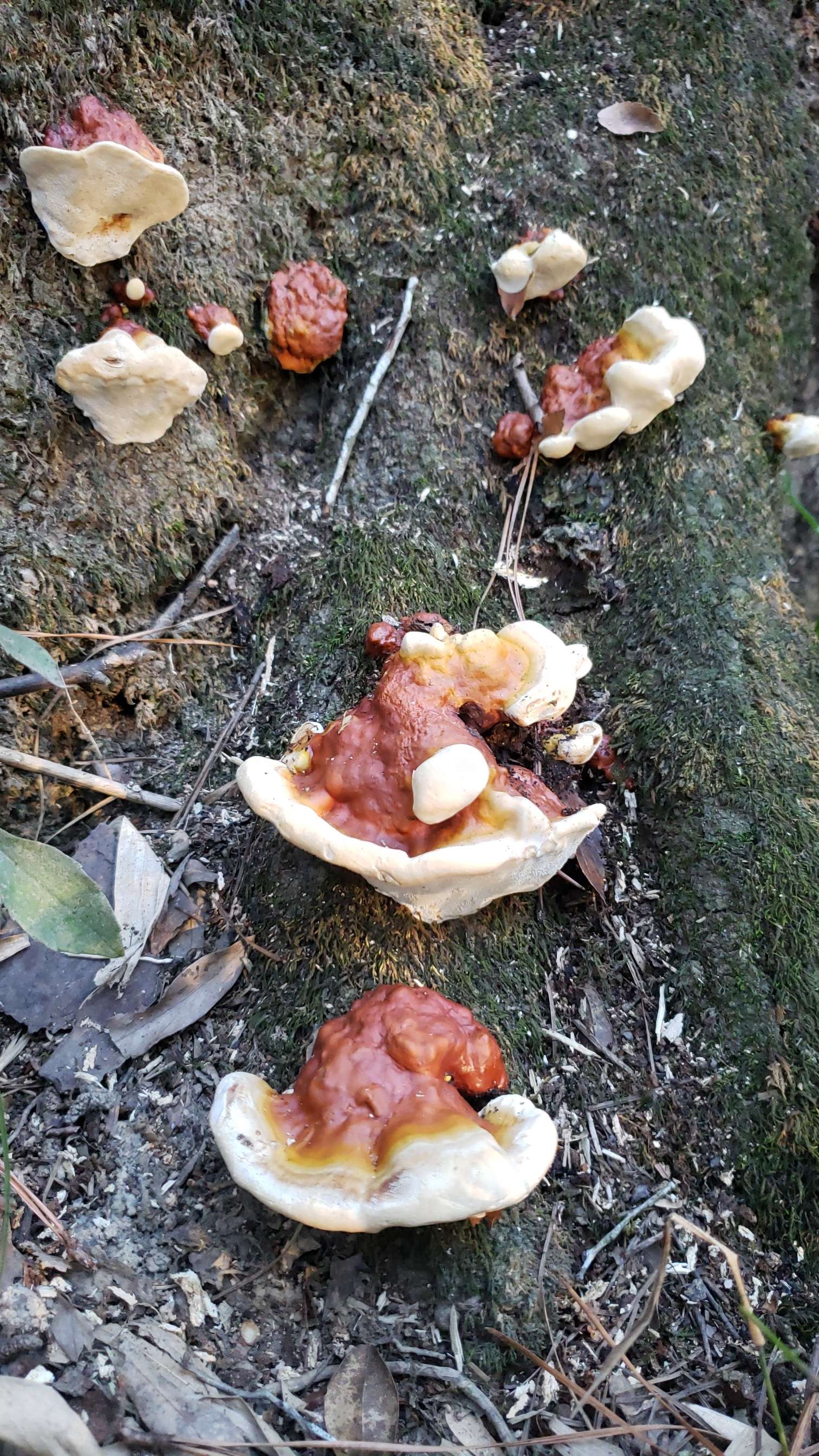
Ganoderma tsugae or the hemlock varnish shelf is colloquially a type of reishi mushroom. Reishi mushrooms may have a long history, 4000 years maybe as a medicinal mushroom used around the world. It is too hard to eat so instead it is made into an extract or steeped in tea. Even modern science seems to show it may have anti inflammatory properties, anti cancer properties and might even prevent cognitive impairment. Its something to contemplate how much knowledge from the past and our connection to the wild around us has been lost. As you may notice this mushroom does not have gills. It is a polypore. Up close it looks like many many holes have poked on the under side of the mushroom but no that is just how it has evolved to reproduce. Many people unfamilliar with mushrooms are suprised to learn they can be like this too.
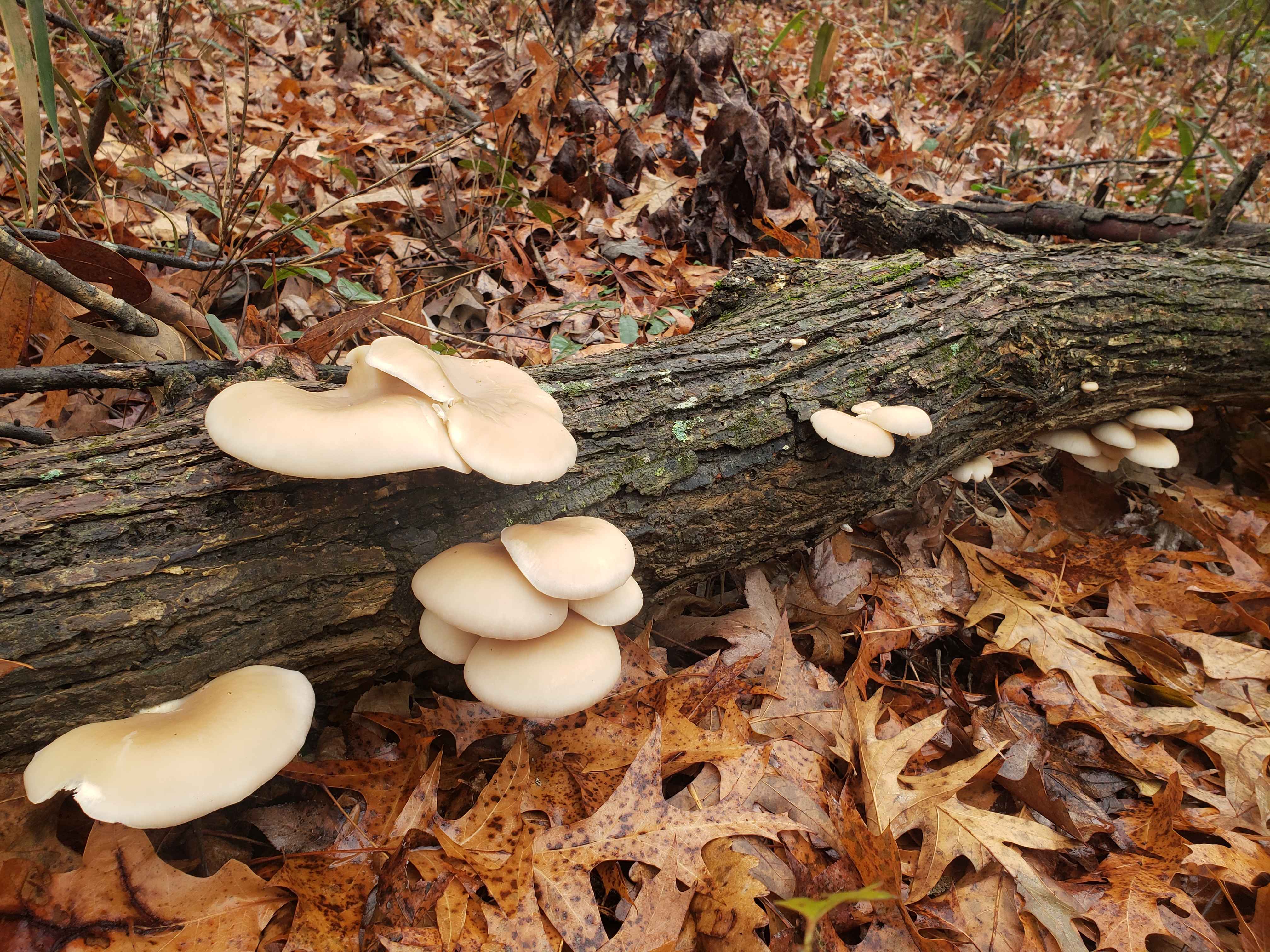
Oyster mushrooms, pleurotus ostreatus are another very popular edible and cultivated mushroom around the world. They can grow up to 12 inches long in a fan, or shell shape and frequently grow in overlapping clusters. As their name implies they do in fact taste and smell fishy. It has sort of a rubbery firm feeling and grows out from a short stalk on its substrate which can be wood, hay or more absurd things like coffee grounds, corn cobs, and out of books. They are quite good when cooked properly, kind of gross when not. I enjoy them cooked with ginger, garlic, sesame seeds, soy sauce and put in seafood soups.
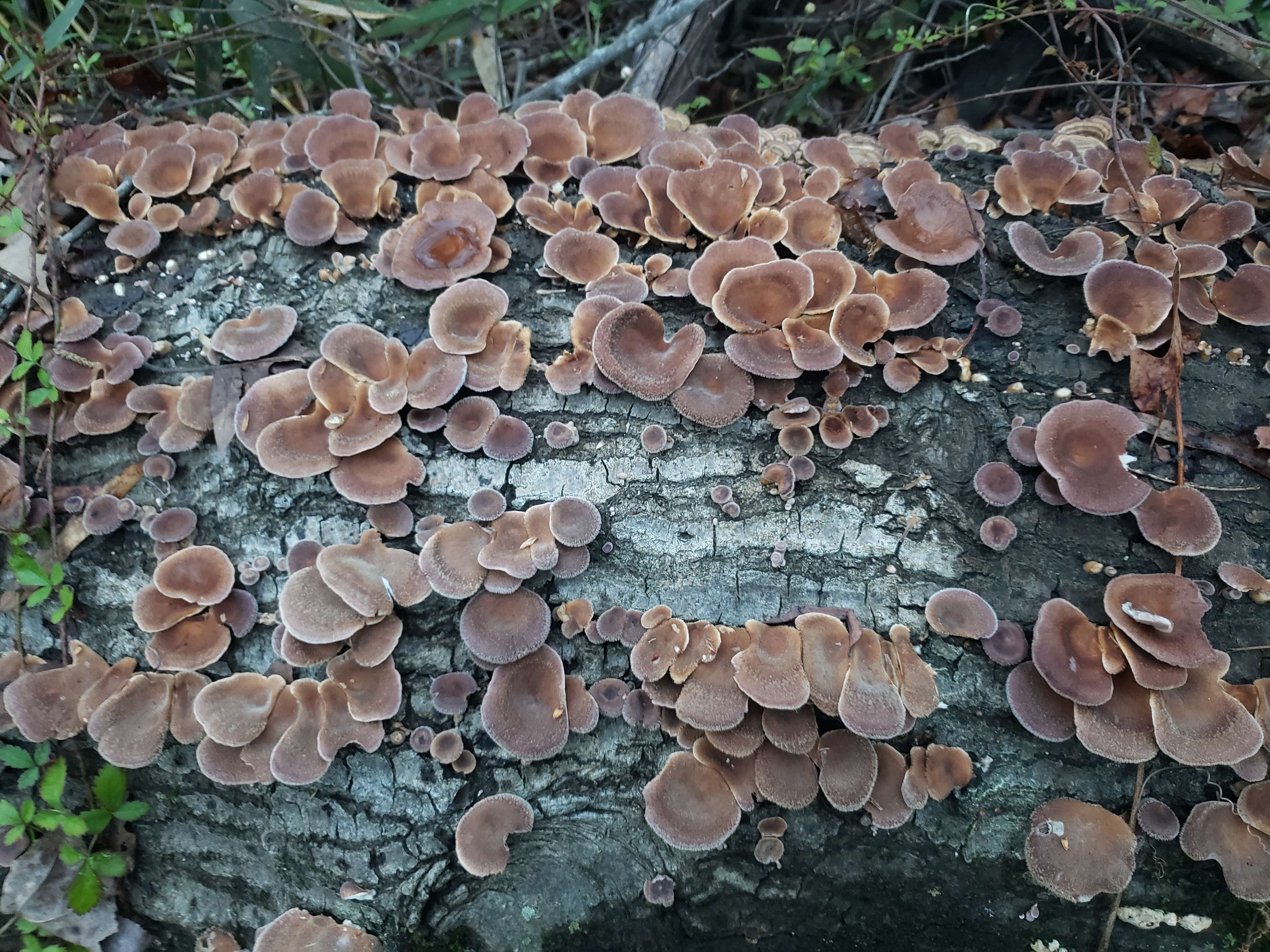
Don't laugh okay this mushroom is called the hairy panus. It grows on hardwood. I said don't laugh. I mean hardwood thats died recently. It has white, slightly brown gills but might actually be a polypore mushroom depending on your definition. There is an article called 'What, If Anything, Is a Gilled Mushroom?' that explains how some mushrooms genetically are closer to other polypore mushrooms but have carried genes that now express themselves through gills independently from their reproductive neccessity. It highlights a bit of the absurdity of we find ourselves in by trying to land on definite answers.
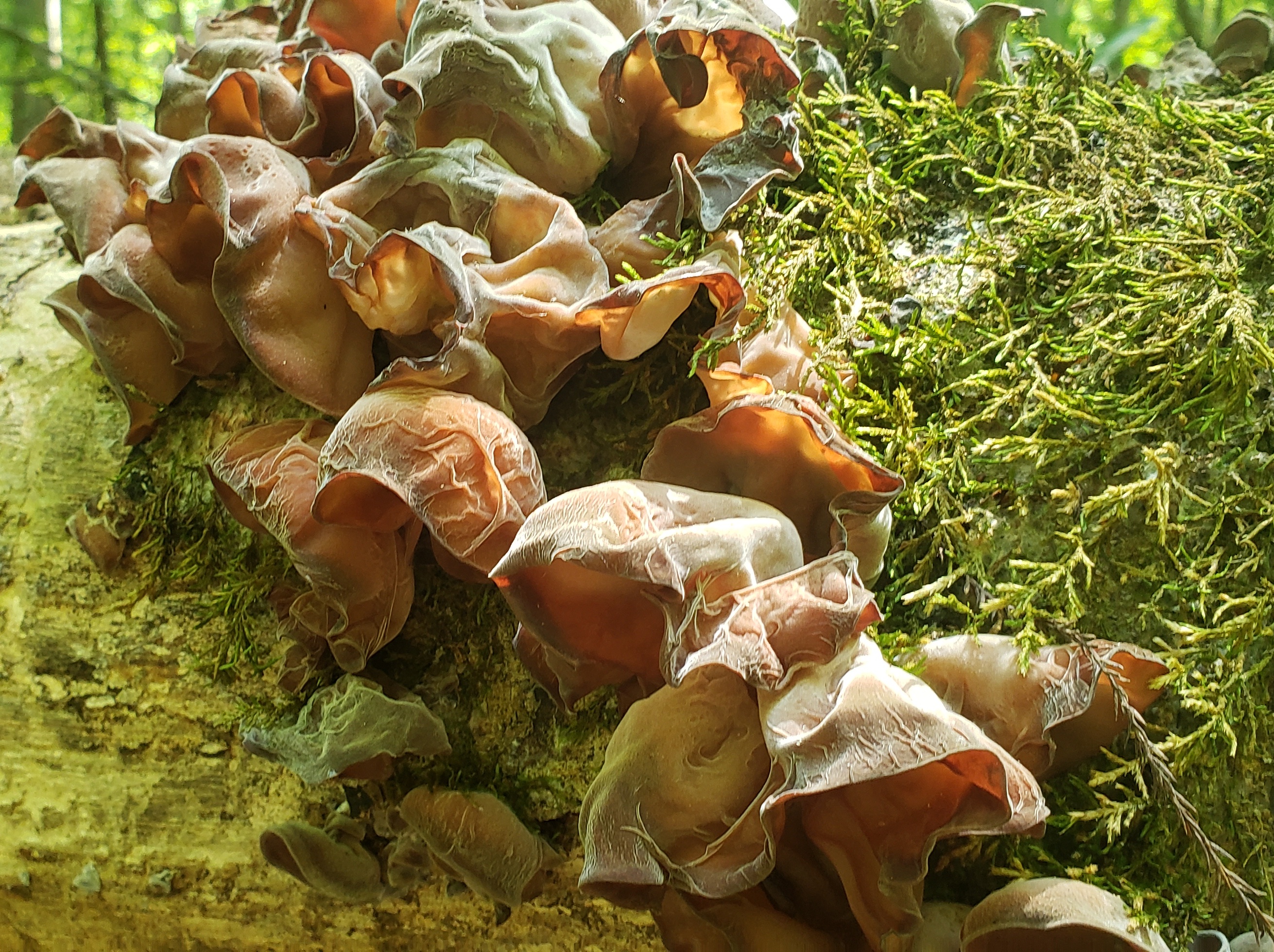
Jelly ear or wood ear or auricularia angiospermarum is another edible wild mushroom. Its very flexible and quickly bounces back to perfect shape after squeezing it in your hand. Its very mild in taste and mostly serves to absorb the flavors of whats cooked with it. Its texture is very nice though. Has a nice soft crunch. It's very good in eastern soups. Like many mushrooms it is more popularly eaten in other countries around the world. I find these in very humid and mostly shaded environments during spring and summer.
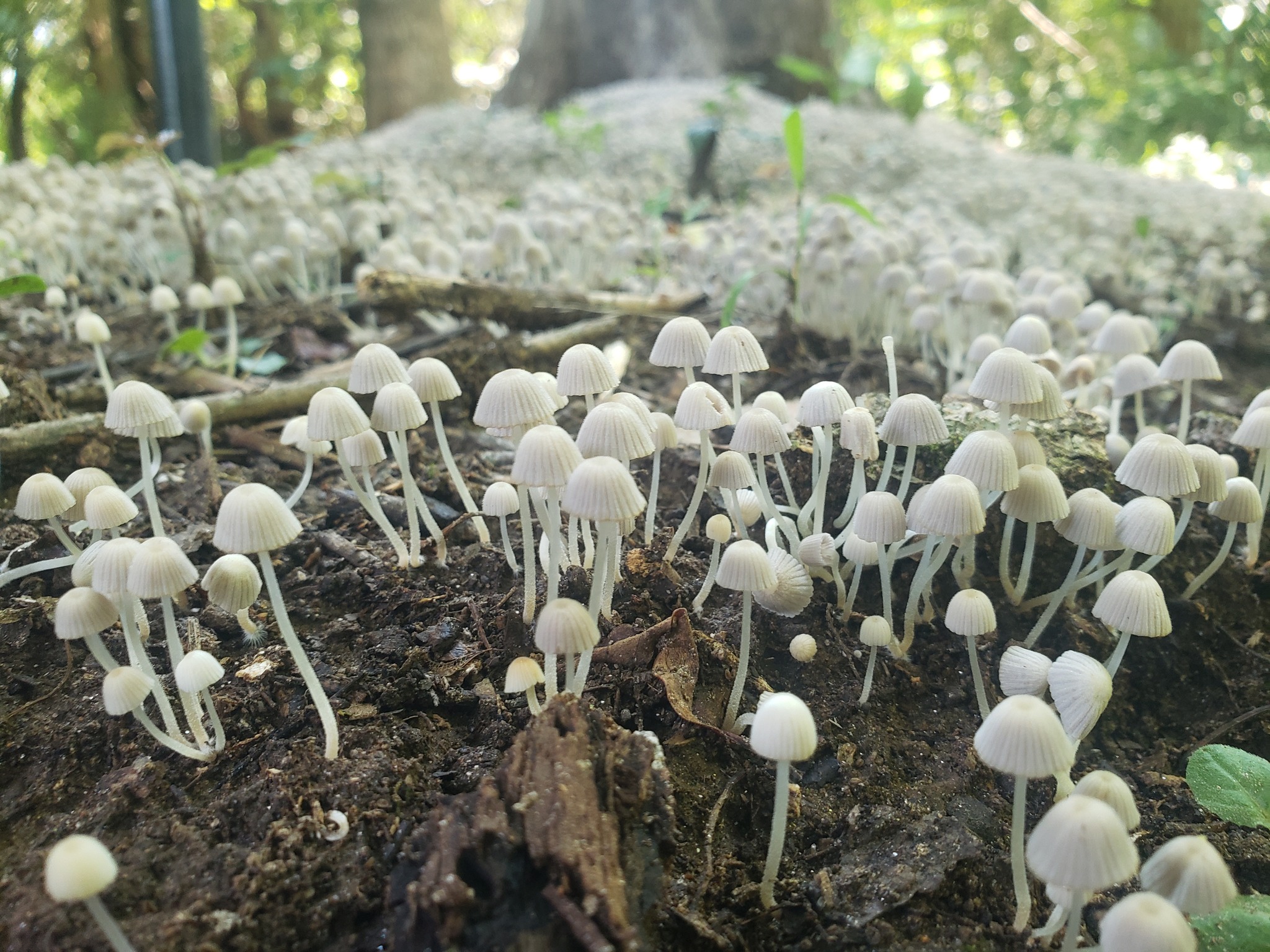
Coprinellus disseminatus is the fairy ink cap. Hundreds of these fragile little mushrooms fruit and disappear in just two to three days. If you're ever lucky enough to see a couple in the woods growing around the stump of a dead tree be sure to remember the spot and come back after it rains. Finding this mushroom fills me with joy. How could one not smile at such a sight? Apparently edible but not very good or worth eating (too cute).
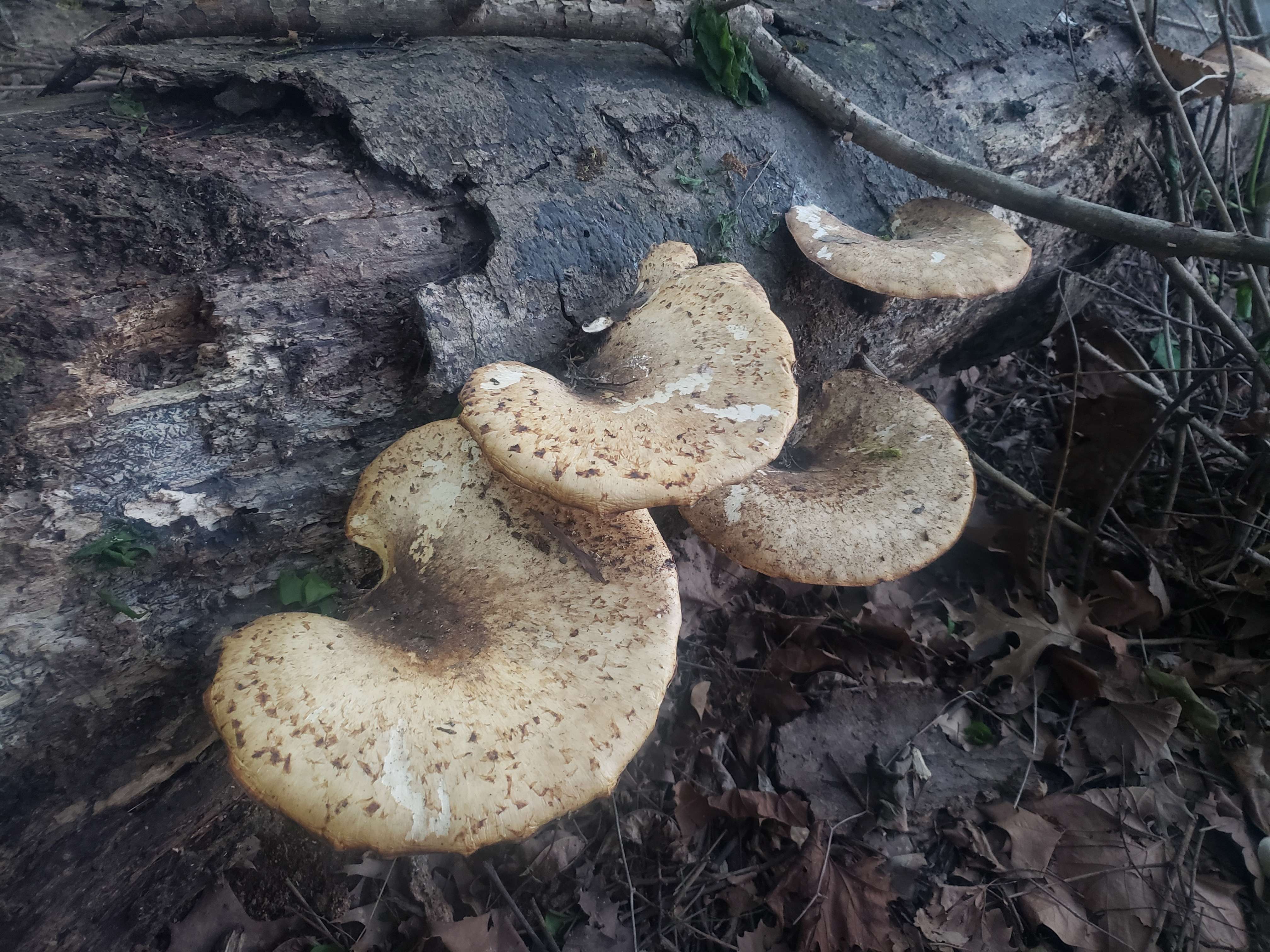
I saw these pheasant back mushrooms from my bike after the first big rain of the year. Unfortunately for me by the time I had found them so had the bugs. Since then I've found a couple spots where these fruit in the spring. The pores underneath are large and angular. The stem is thick and firmly attached to the wood it grows from. On the top of the mushrooms grow a brown tail feather like pattern. These are edible and very tasty. Underrated even. They are very firm so its reccomended to only take the outer perimeter of the fruiting body or if it's small enough it's okay to take it all. They smell like cucumbers or even more accurately like watermelon rind. Cooking them makes this smell very strong.
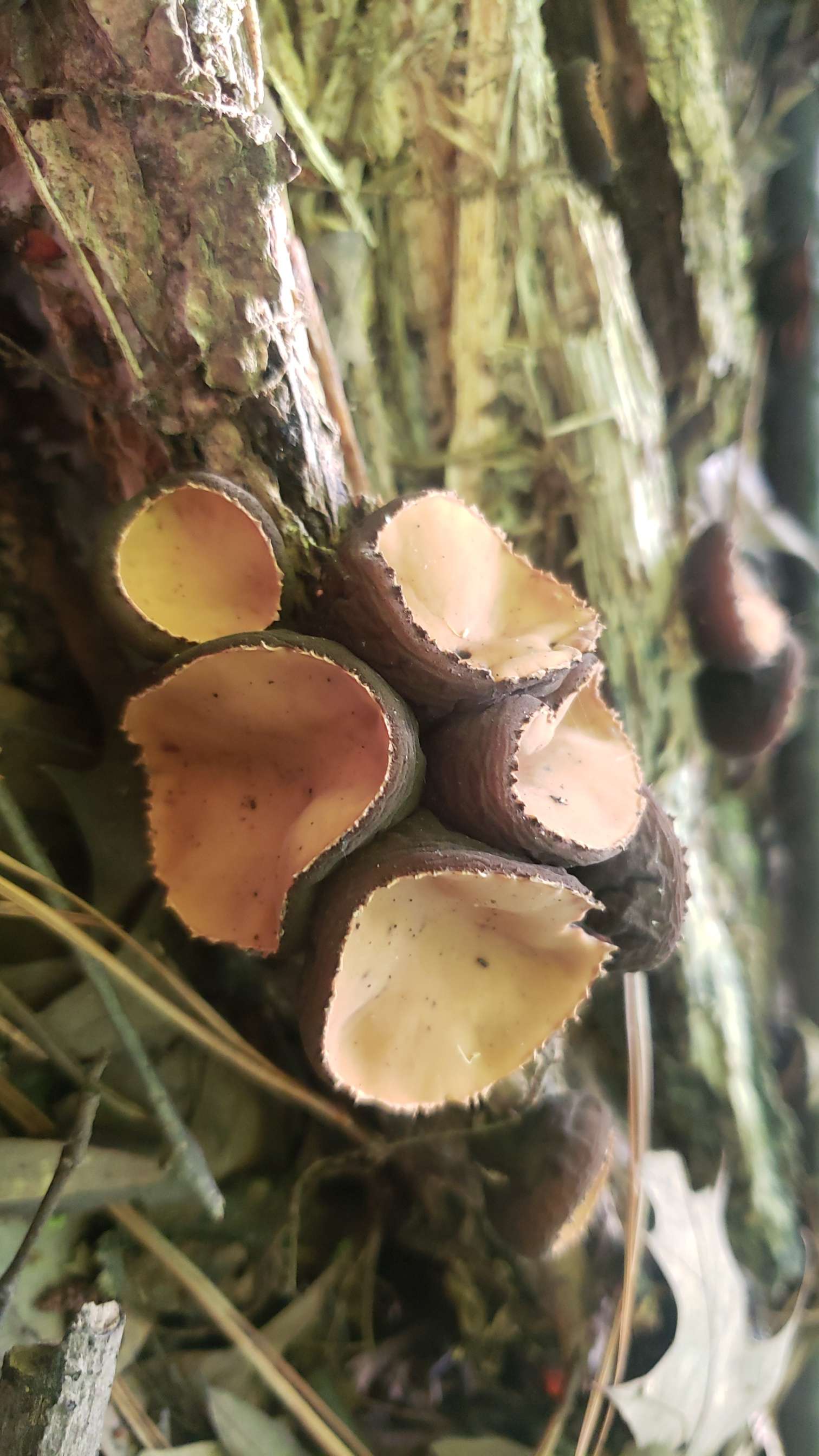
Galiella rufa is the peanut butter cup mushroom. Theyre rubby and the outside chocolate layer is a little hairy too. My guide book says they are inedible but there are a number of posts online saying theyre okay if you like the texture and that theyre commonly eaten in other parts of the world. Whose to say? Not me or my website. But it does make you wonder who is right and what else does might our culture not know?
Amanita Jacksonii, the Caesar mushroom is a very tasty mushroom that beginner foragers should be cautious about eating. Some amanita mushrooms are deadly with just one bite. These to me don't look very much like the other ones that will kill you but you need to be aware of them and to be sure of your identification abilities. Its beautiful shiny red colors really pop out of the woods and make them easy to spot. The edges of the caps have striation lines going down them. The gills underneath are lemon skin yellow and so is the ring around its stem. Its stem will be white orangey yellow and will have little fibers sticking out all over it. If you cut the stem in half it will be hollow inside, often with webby fibers there too, but always definitely hollow. The entire mushroom will grow from the ground out of an egg like structure that feels very soft like cotton or tissue paper. Its taste is something in the family of cucumber or a fancy cheese. Its very subtle, light and good. A little olive oil and salt is all you'll want with it. Its enjoyably crunchy. Its one of the very few mushrooms that you can actually and should eat without cooking it. This mushroom is also part of a complex and there are many varieties around. I myself have seen very similar mushrooms with only different coloring on the caps, or have warts, or differnt colored gills, no egg at the bottom, non hollow stems, and ones that look just like these but smaller and with no egg. I strongly recommend you avoid eating these until you have spent a considerable amount of time learning to forage. There are bold mycologists and there are old mycologists. But there are no bold and old mycologists.
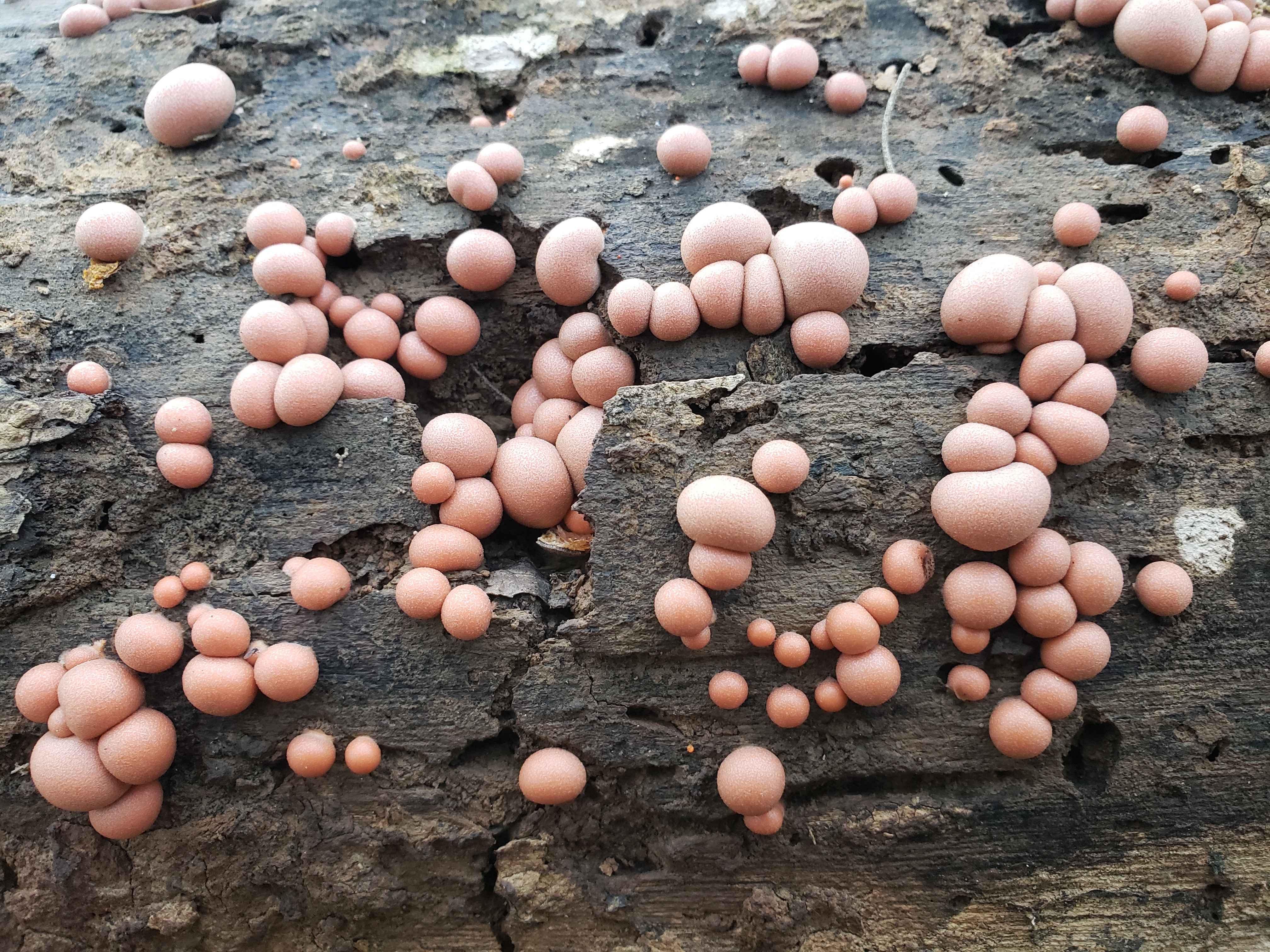
Wolfs milk is technically not a mushroom but a very cool slime mold. If you poke this round blister like thing a brightly colored pastel orangey pink pudding will ooze out from inside of it. Ive never tasted it and probably shouldnt but I do really want to. Everywhere I look says this isn't edible even if it is very cool. It is one of natures forbidden gushers I suppose.
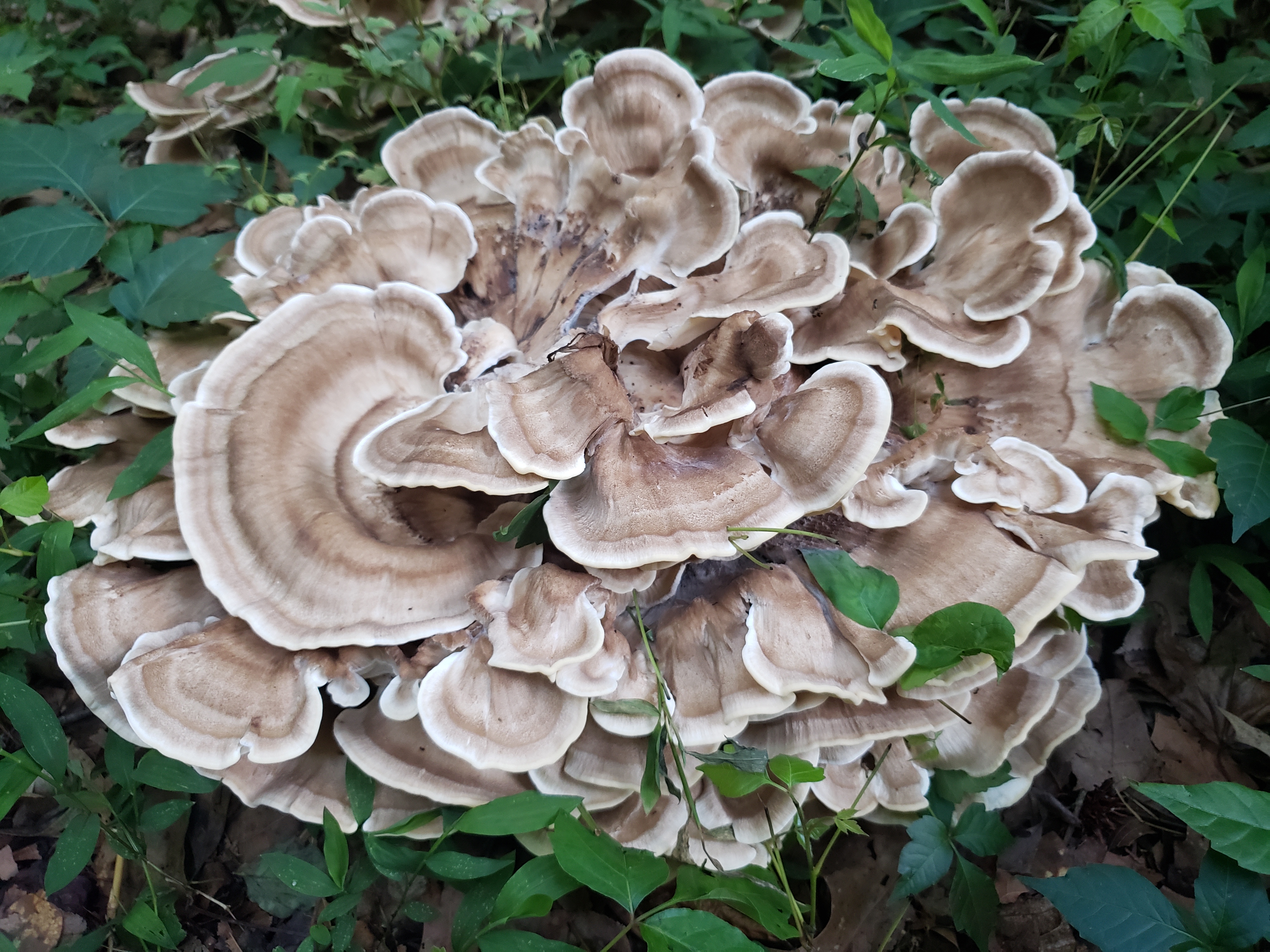
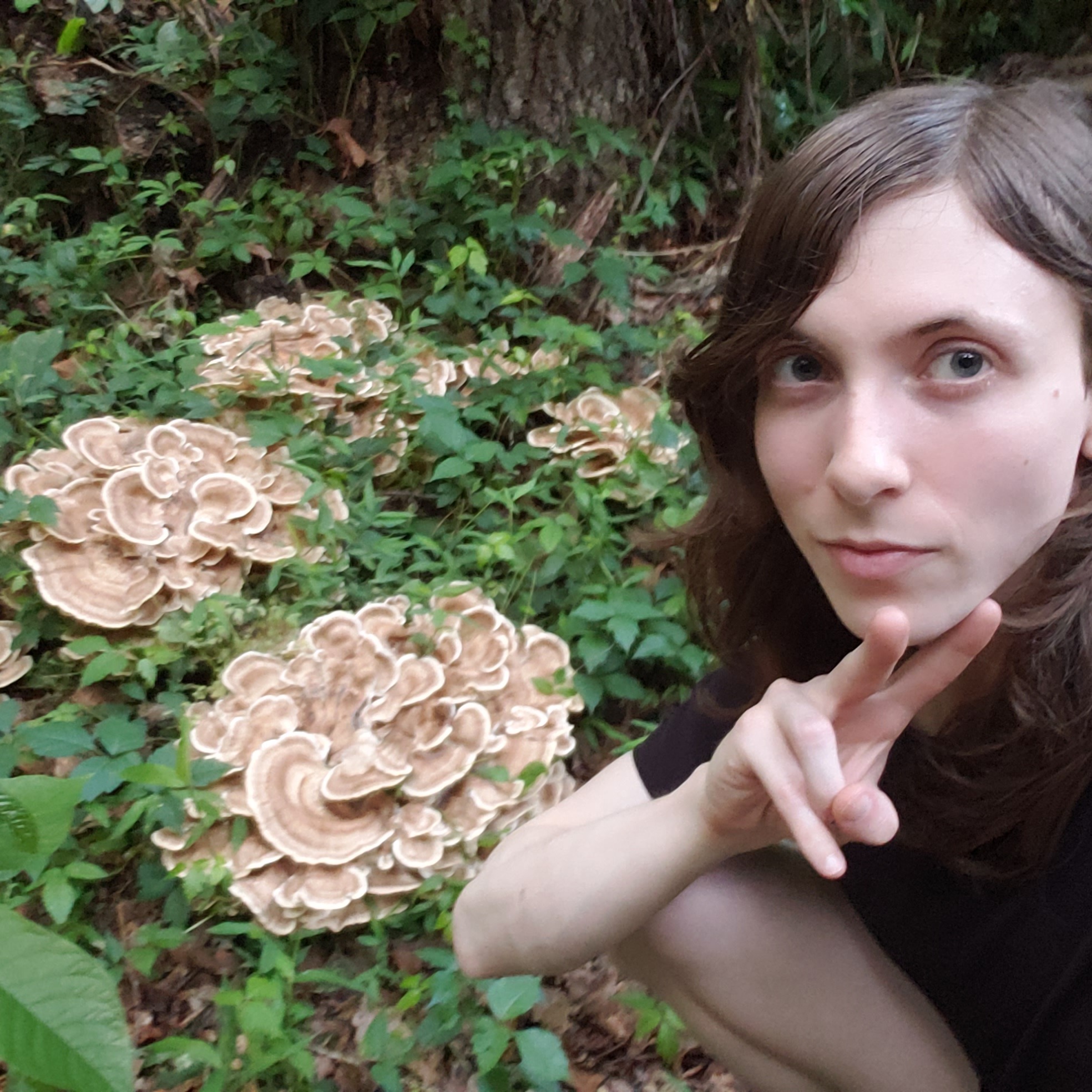
This big boy is meripilus sumstinei or the black staining polypore. When its damaged after about 20 or so minutes it will have developed dark stains on its injuries. This is a parasitic and edible mushroom but not a very popular one. Its best eaten when it's still very small as when its allowed to grow it is quite fiberous and tough to chew through. Its flavor is pretty unremarkable but mushroomy. Most people prefer to make jerky with it but throwing it in a stew or soup works fine too. The water its cooked in will also turn a blackish color. If left alone they can grow to impressive sizes of up to a foot and a half in diameter. They tend to grow in clusters under deciduous trees and will reappear in the same place every year until theyve exhausted their resources.
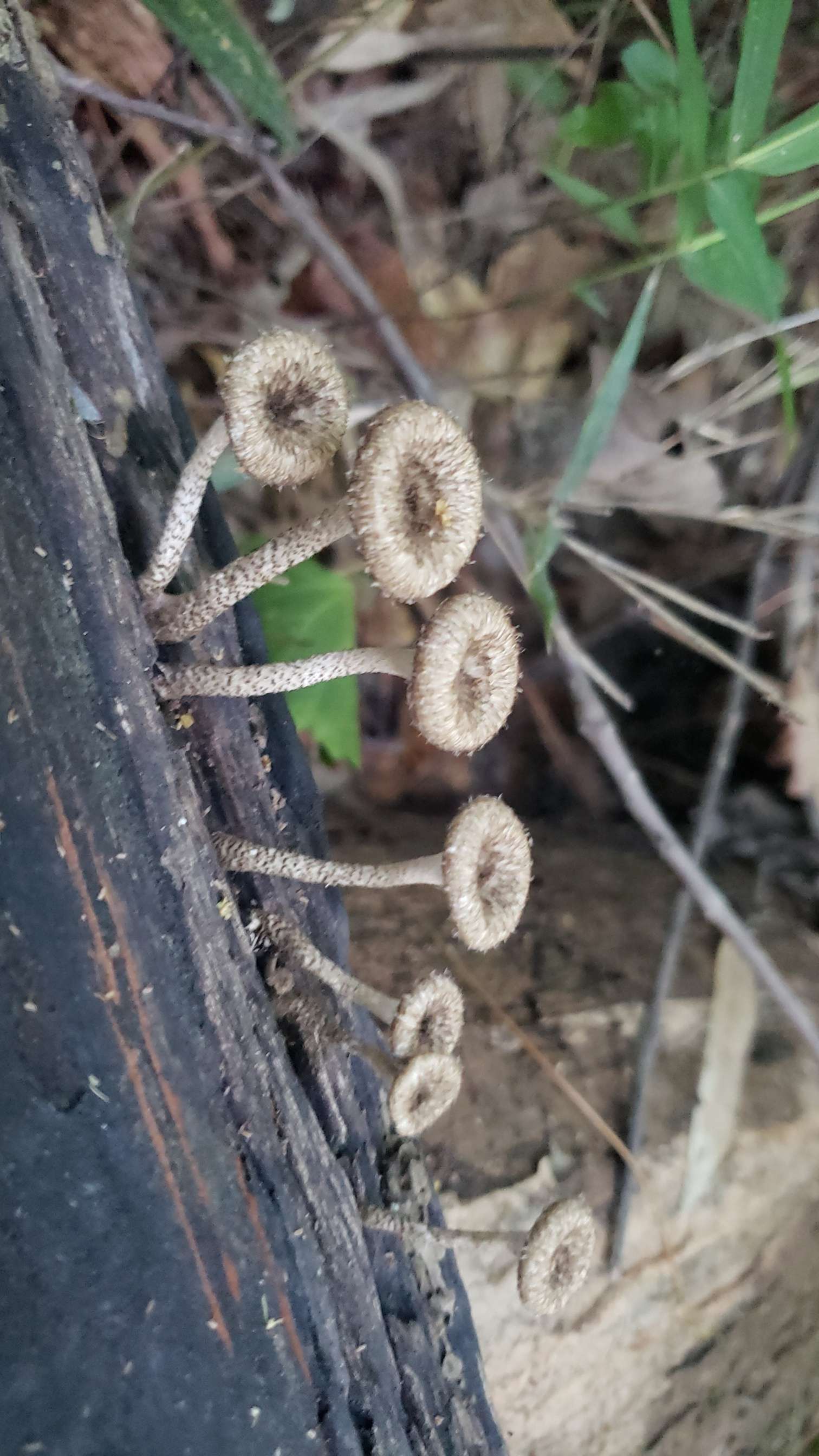
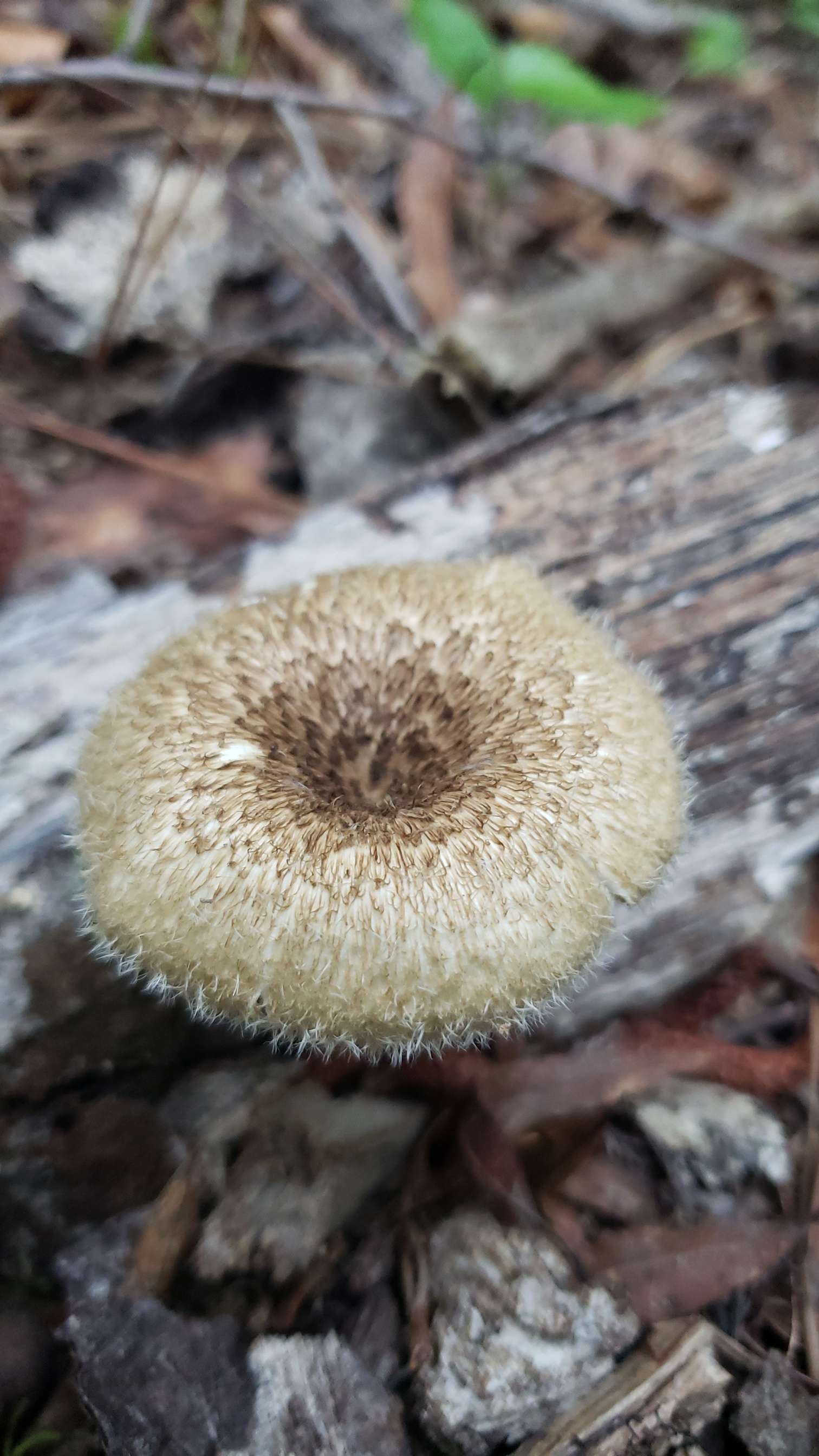
Lentinus tigrinus is a fuzzy mushroom that grows out of wood. The fuzz grows in a sort of scaley pattern on the surface of the cap that funnels down slightly at the center. There are often a couple of them all closer to each other. It is a gilled polypore. I've read that it is a very good medicinal mushroom but there is not a lot of information about it that I've found.
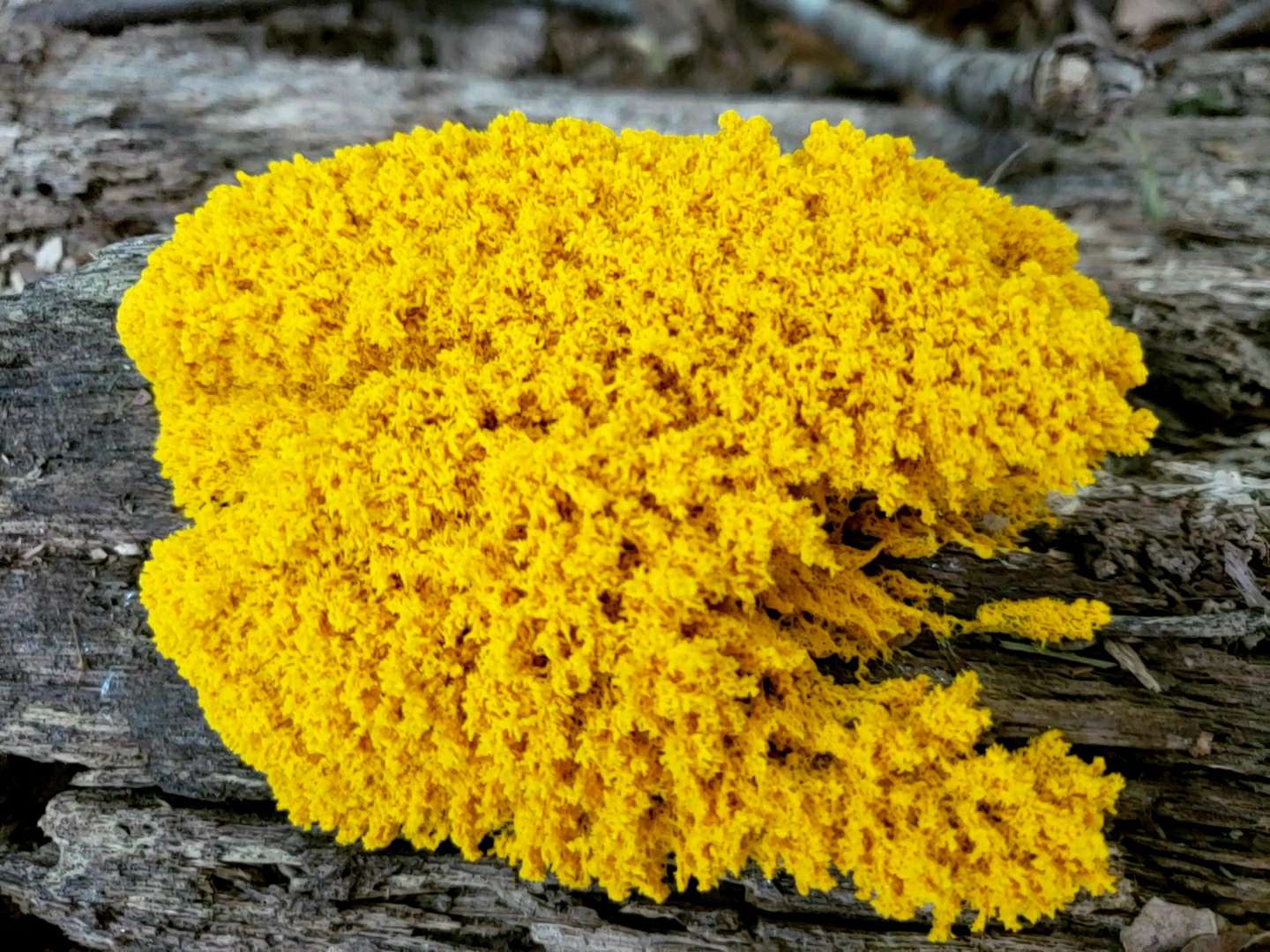
Dog vomit slime mold is a good but cruel name for this strange creature. If your a nerd Fuligo Septica is good. It is technically a protist which is a class of organisms more closely related to amoebas and certain seaweeds than fungi. It does not have cell walls. Its just a bunch of nuclei growing in a big gross foamy scarmabled egg mess. Not edible, but too strange to eat anyway.

Lactarius indigo or the indigo milk cap is an absolute favorite mushroom of mine. Its amazing mushrooms can be such a unique color like this. The gills are also a deep blue color. When you damage the mushroom a densely pigmented blue liquid oozes out of it. You can use it to paint on your body and face as it comes off easliy with water. When its small it is very button like in appearance but as it grows the center funnels in slightly and the gills open higher. It also has little bands of differing blue colors where it had spurts of growth. Its exceptionally pretty. The mushroom is also edible and somewhat tasty. Ive had some that tasted good and some that tasted bad. There are other lactarius russulas I've found that are white and ooze white liquid, orange ones that ooze orange. Inedible lactarius mushrooms have a peppery hot and bitter taste. By the way it is safe to taste the colored liquid that comes out of these mushrooms just dont swallow it to be safe.
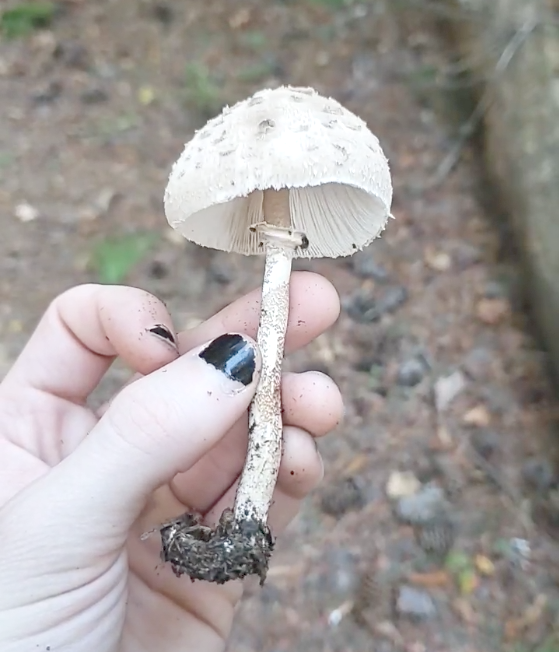
This is the only macrolepiota procera, parasol mushroom I've ever found. It was in the fall deep in the woods growing all by itself between two pines that had been blown over a few years ago. It has a scaley grey textured pattern on the top. Beautiful long white gills. The ring around is not attached to the stem and you can move it up and down even. It smells like almonds and is reportedly very delicious. I did take it home with me but I didn't eat it. I still have it dried though.
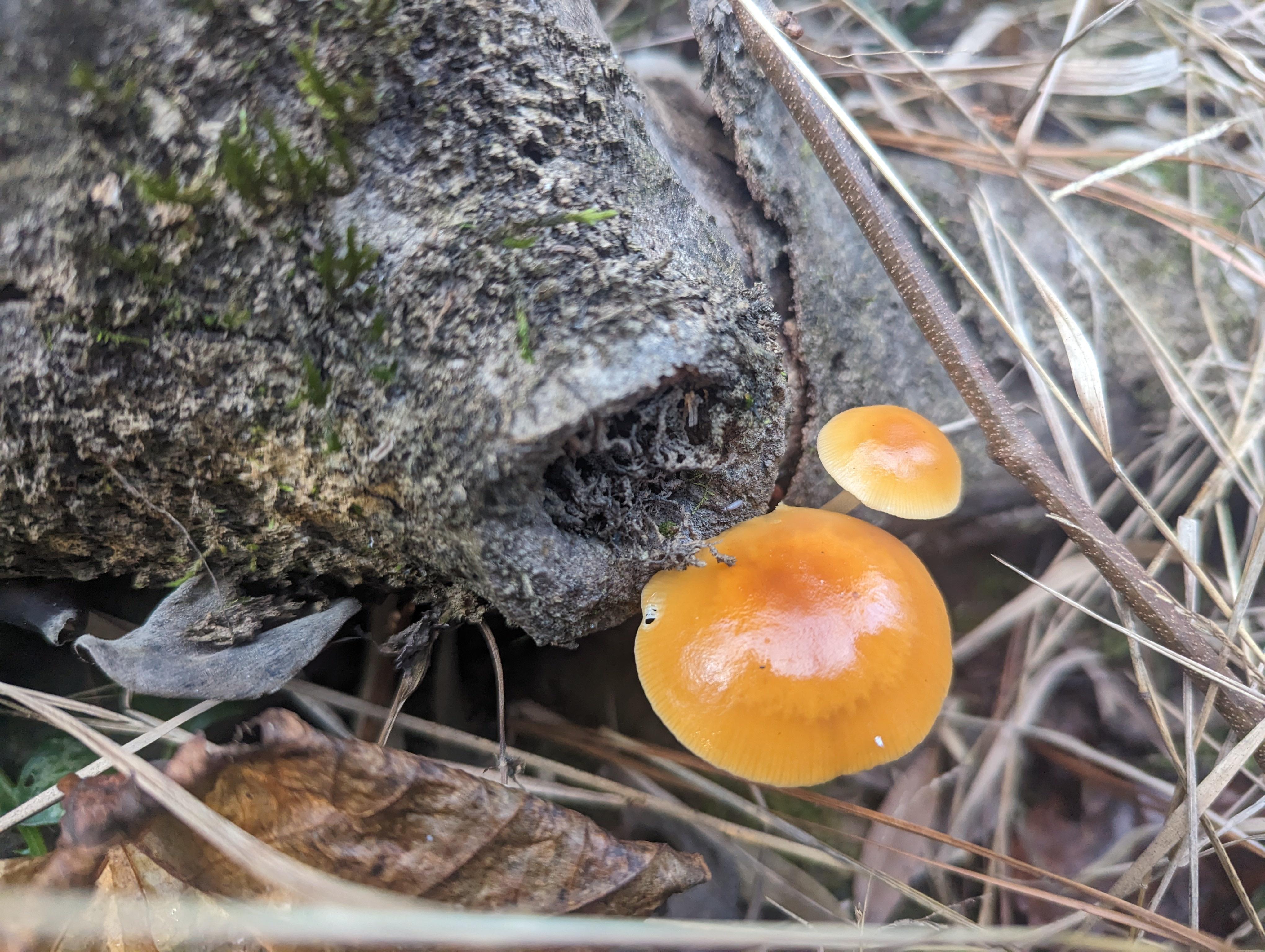
This is the enoki mushroom or flammulina velutipes (very fun to say). Some fans of eastern cuisine may recognize the name but will notice its appearance is very different than what they are familiar with. The cultivated form of this mushroom is grown in a special environment that causes it to grow in long white strands. I think they do this by growing them in the dark and strecting rubber bands around them. The wild version is much different. It's also known as velvet foot because the way the base of its stem feels. Its stem also commonly gradients to a blackish color. The caps are also very sticky and slimey which is a distinctive feature for it. Its gills are white to whiteish yellow. Spore print white. This mushroom does NOT have a ring on its stem. I mention many specifics of this mushroom because there is a very similar looking mushroom called the deadly galerina. The deadly galerina mushroom will kill you (of course) as it has the same amatoxins as some of the most poisonious mushrooms in the world. I strongly recommend to avoid this mushroom and simply enjoy it from grocery stores and restaurants but its wild form is very fun to poke and play with. It has a very satisfying crunch and tastes pretty good.
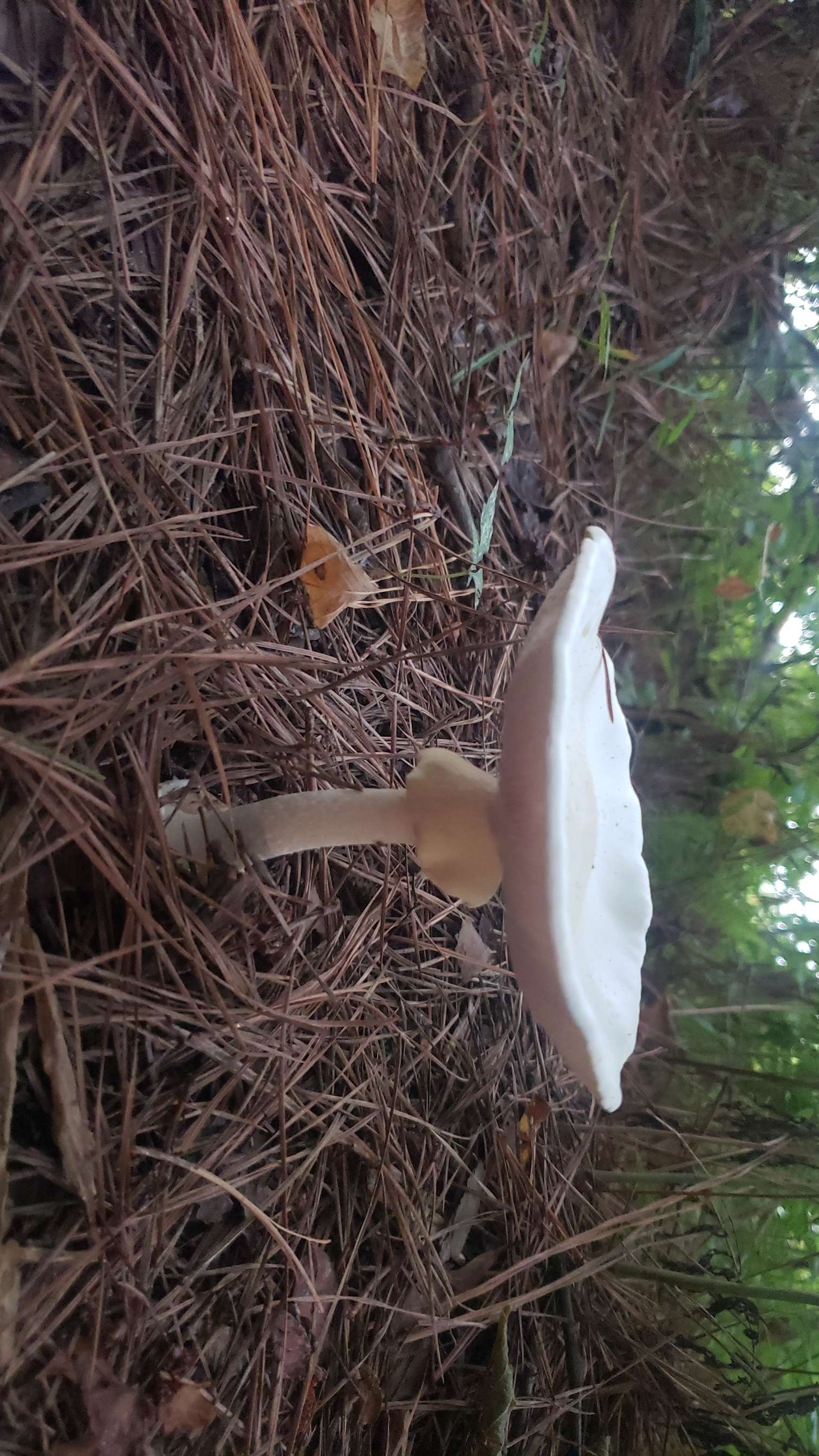
While we are on the subject of deadly mushrooms I shall introduce to you what is perhaps the most deadly mushroom in the world. This is the destroying angel, amanita bisporigera. Its beauty is quiet poetic isnt it? Its European cousin is amanita virosa but they are more or less the same for our purposes of identification. They are pure white. White cap, gills, stem, skirt. They are mostly accidentally eaten by beginner or amatuer mushroom hunters that mistake them for puff balls or other similar mushrooms when they are still very small, but occasionally even experienced hunters accidentally consume them. As you can see they like to grow around pines and mostly show up in spring and summer. They contain amatoxins which bind to proteins in your body and essentially -how its been described- they melt your liver. You won't notice sickness until hours or the day after you've eaten the mushroom and by then its compounds have already been absorbed into your body and may already be too late to save you. It is however safe to touch and to smell. But under no circumstances should this mushroom be put inside your mouth. If interested I recommend this article titled "I survived the destroying angel"
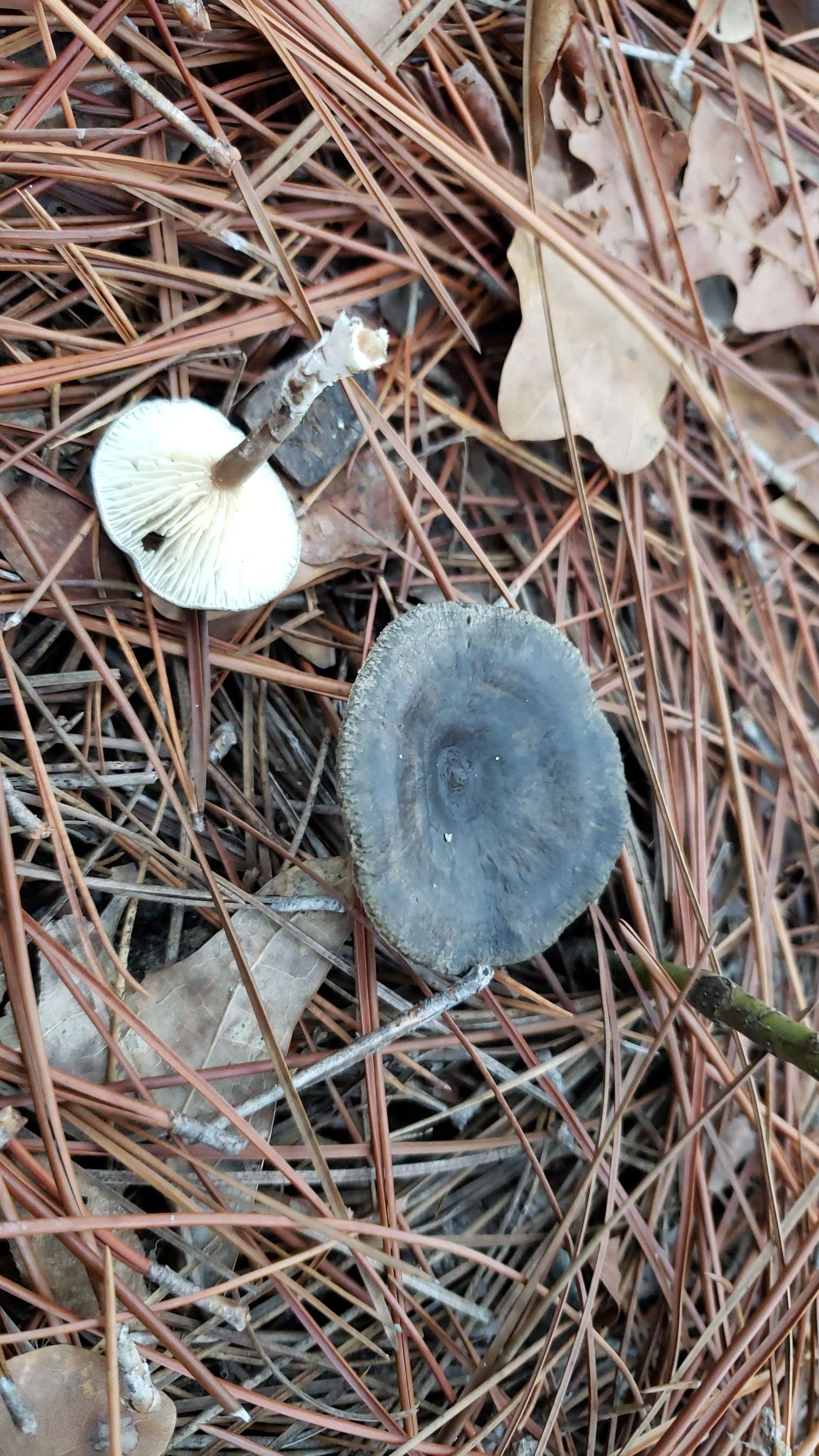
This beautiful goth mushroom is called Cantharellula Umbonata, the greyling. My guide book says that its edible and quite tasty but I cant confirm this for you. This photo is the only time I've ever found this mushroom as its quiet hard to find due to its color and relatively small size. Its cap is a beautiful blackish funnel shape with a small nipple in the center, and its gills in a beautiful contrast are white. I do remember that it was in the winter when I discovered this while walking with a friend and it was growing in a mostly pine area of the forest as you can see.
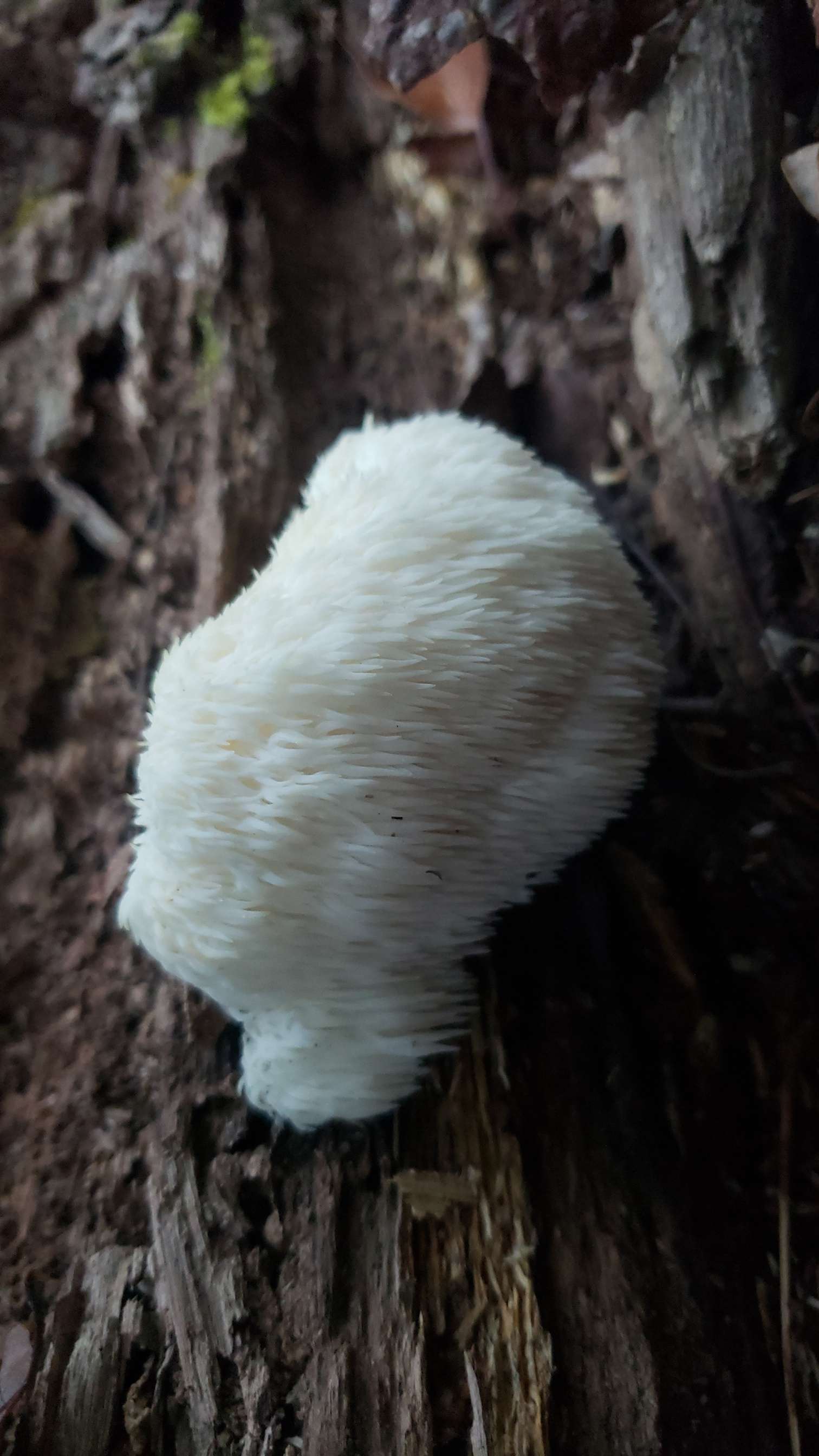
Lions mane or Hericium Erinaceus is perhaps one of the more famous mushrooms out there for its incredibly unique and otherworldly appearance. Mycologists by hobby and profession call these kinds of mushrooms tooth mushrooms. You may have already heard that this one is edible and I can confirm that and will add that it's one of the most delicious mushrooms I've tried. Its texture and taste is very similar to crab meat. I am a big fan. There is also very promising research to suggest this mushroom has excellent brain health properties. In the winters when there is not much else around even finding a small lions mane mushroom is a great delight. Look in moist environments on both living and decaying logs nearby rivers. They are also commonly found growing high up in trees, too high to reach without ladders or equipment to cut them free. I always think of a story a friend told me where he found a lions mane mushroom with an arrow shot into it -imagining a clueless hunter practicing his shot on an unknown bright white target in the forest.
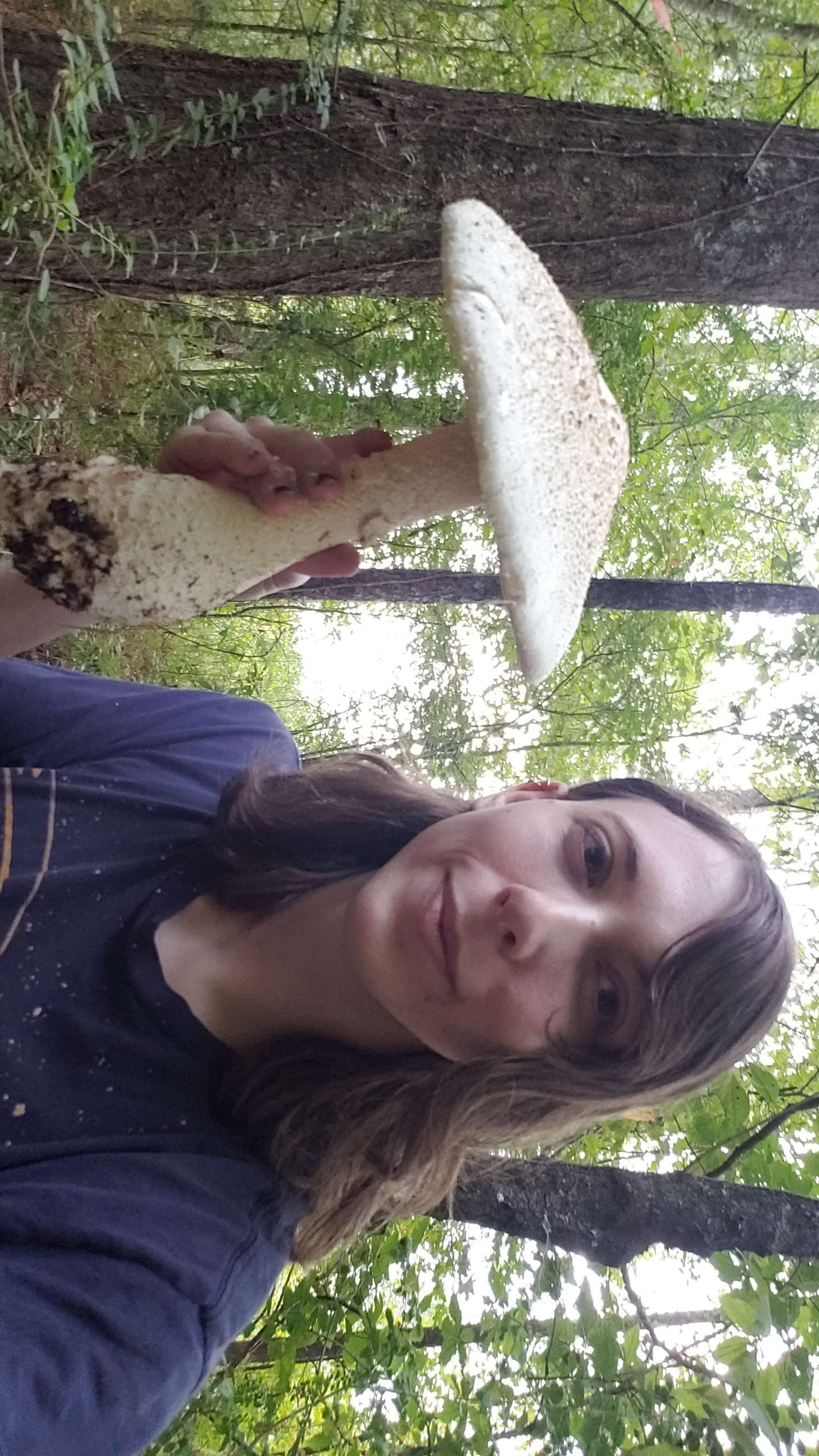
This enormous mushroom as you can see was an absolute joy to find and serves us into a lesson of what is an unfortunate truth for us mycologists -they are sometimes very difficult to solidly identify. This may be amanita abrupta, or amanita ravenelii. Amanita mushrooms are really a study of their own and there are only a handful of experts in the whole world. I am not one of them but I can say with some help from the internet and my guide book its pretty likely its one of these two. Its just ridiculously large. Warty cap. White gills. Stinks like chlorine. I wouldn't dare eat it, just look at the dang thing. Edibility unkown and lets keep it that way. I found it in an area of the woods that has both leafy and piney trees so it makes my identifying it all that more difficult but you don't have to understand something to enjoy it.
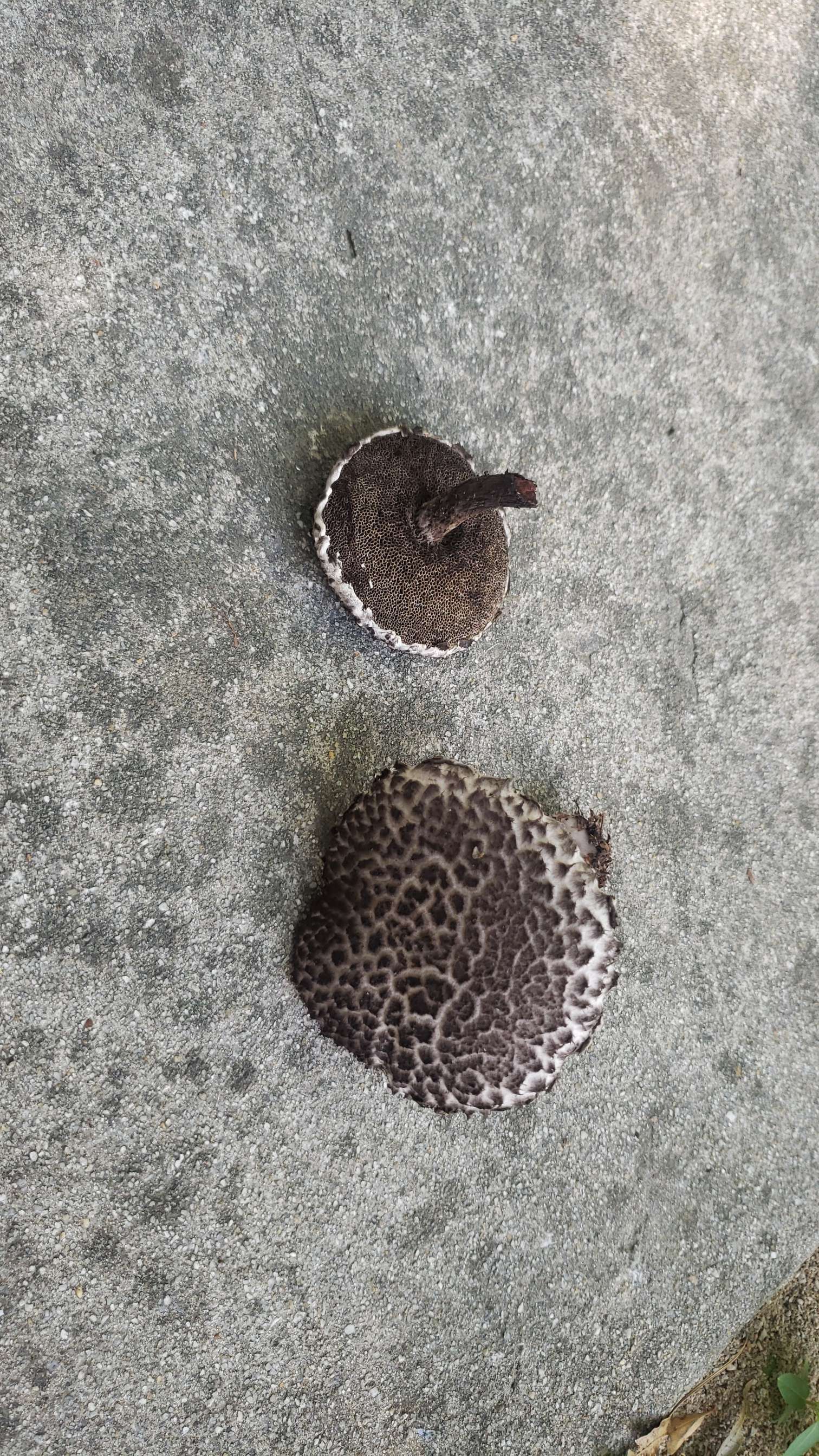
The Old man of the woods, strobilomyces strobilaseus, is a very handsome mushroom. On his cap are dark brown cottony scales that form a mountain like pattern around and out from the center. The cap appears whiter as you move toward its edges and on its underside are many tiny brown black pores. Like some other polypores this one bruises when damaged going from orangey red to black. I found these in a particularly mushroomy area where I tend to find many different kinds growing close to one another. This is edible but I havent tried it. Reportly not remarkable in taste.
Hymenopellis radicata. The beech root(er) mushroom. This one may seem familar if you're browsed my website a little (free mushroom hunt simulation) as its a species I photographed and never could find out what it is. Years later on a hunt with a friend we came across the mushroom in all its glory much bigger and white gills wide open. I was astounded and he said calmly 'yeah thats a beech rooter'. Turns out hes eaten a couple before and they're quite good. I havent tried it still but the next one is mine. The top is very sticky and its stem very long and pretty easy to break and slender. This one is as long as my arm, at least 14 inches.
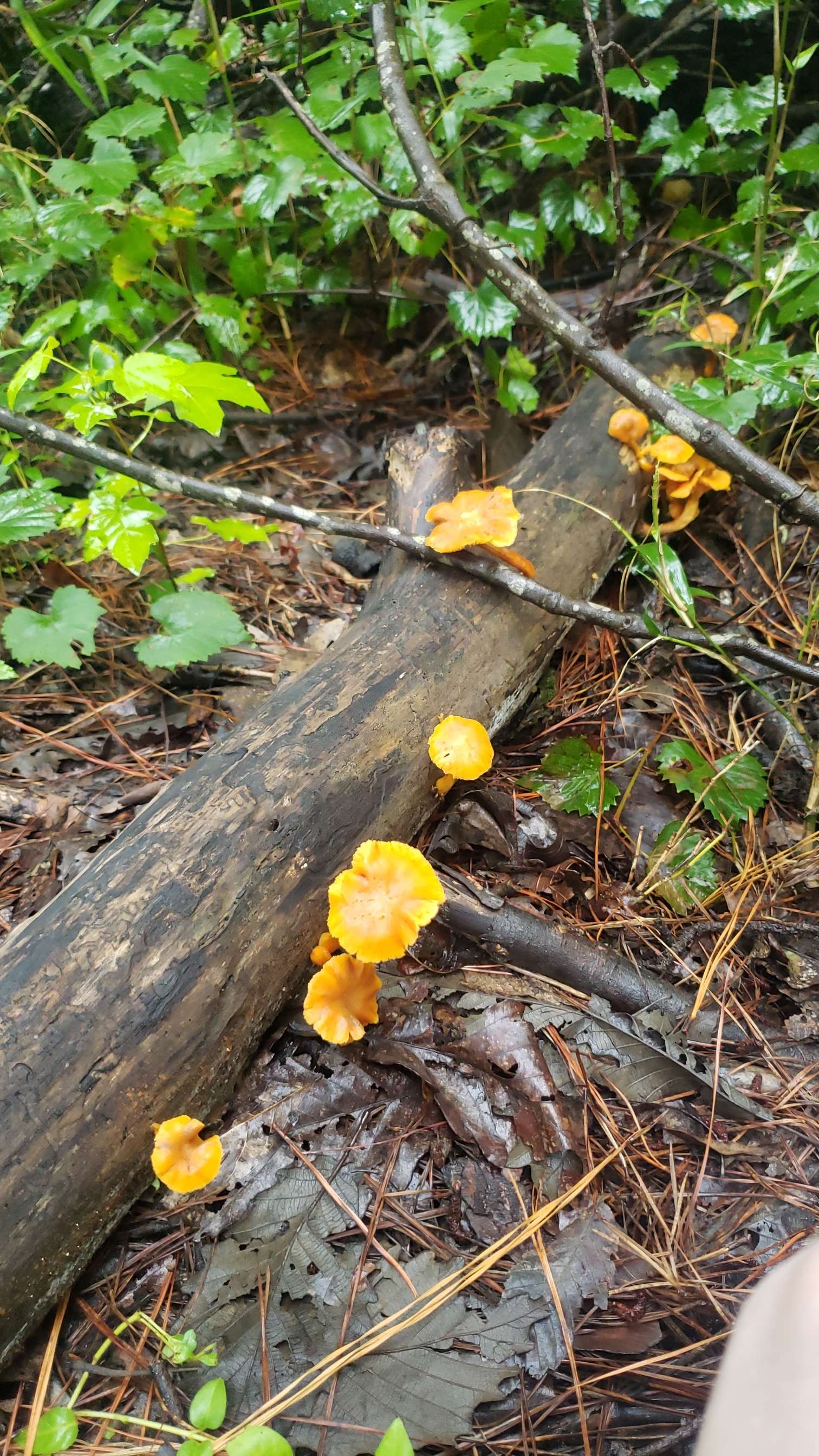
Omphalotus illudens tricks many new and bold mushroom foragers into a night of sickness. Its a harsh lesson but luckily not one that will kill you. They look pretty similar to chanterelles but there are big differences to be aware of. First, these will only grow on wood, as opposed to chanterelles that will only grow from the ground. That can sometimes be confusing because they will grow from wood that has been buried and can appear on the grounds surface. Take note of any nearby decaying logs. They will also have gills under the cap and not ridges. They grow in large clusters sometimes attached to each other which is not a very common thing for chanterelles to do. And lastly the inside of the mushroom is an orange color, as opposed to chanterelles which are sort of a chickeny white. A cool property of these is that they glow in the dark! We think this is a reproductive adaptation to encourage insects to visit and spread its spores.

This funky guy is dyers polypore, phaeolus schweinitzii. I've only ever seen it growing under conifers and they tend to grow around and encase pine needles, grass and plant leafs in their fruiting body. Dyers polypore is not concerned with these things and will grow to a healthy 10 inches in diameter about the size of a basketball. Its not edible but can be boiled to extract a densely pigmented gold yellow dye.

Tremella mesenterica or witches butter is another jelly like fungi. More often it grows in decent size clusters overtaking tree branches and can be around 3 inches big. Its mildly translucent, slimey jiggly and apparently edible but doesn't taste like much.
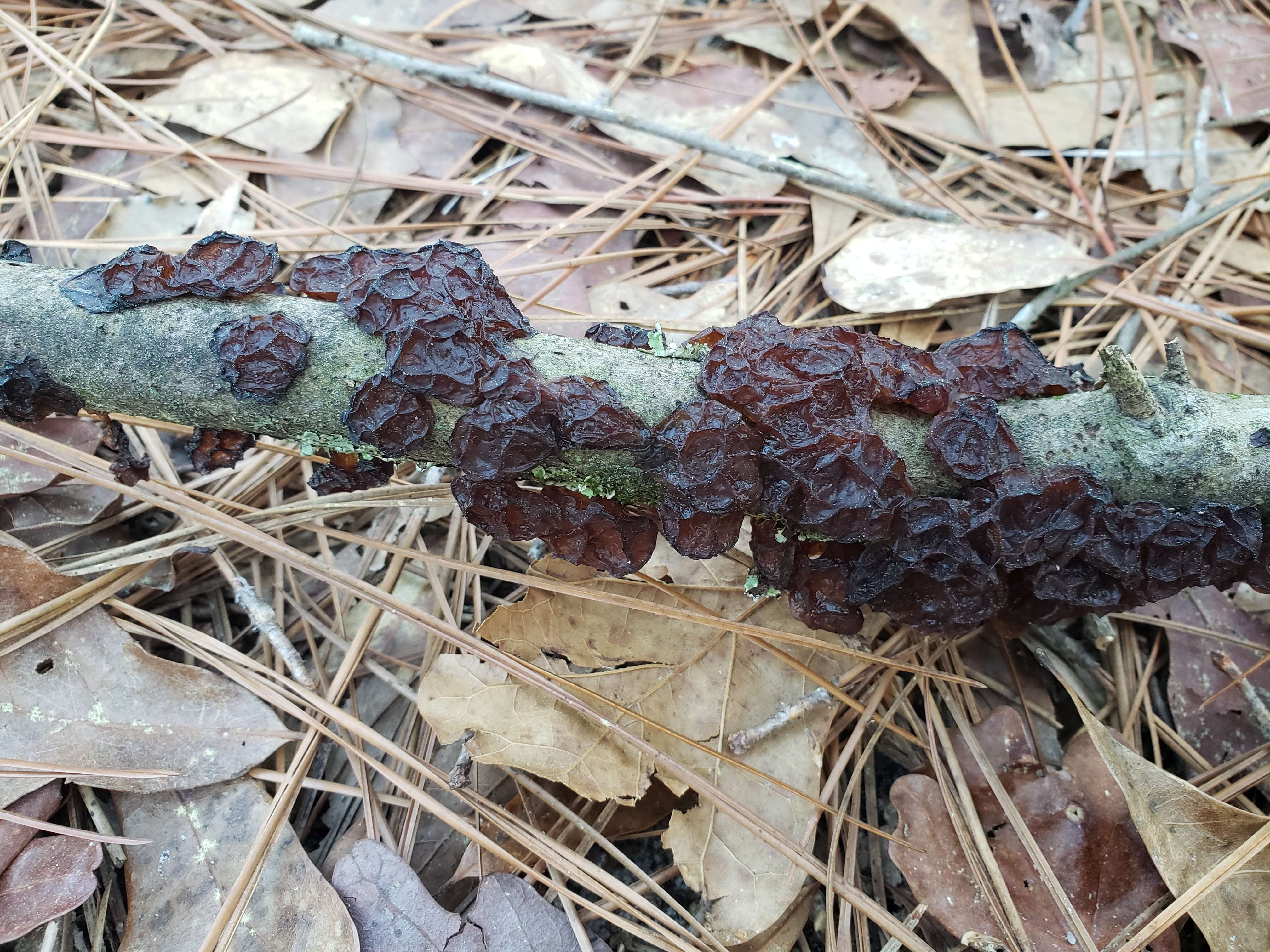
Have another jelly fungi on the house. Amber jelly roll, or exidia crenata is another edible mushroom that I unfortunately havent tried myself. It said to be pretty unremarkable though much like many of the other jelly fungi are. I found this in the winter I think early January, on a fallen branch. The photo doesnt do it justice. They were completely covering the branch and densely packed together. To me they looked much like raisins do. They are not so big individually, about the same size as the other jelly fungi I have listed here. The only large jelly fungi I'm aware of are the wood ears.
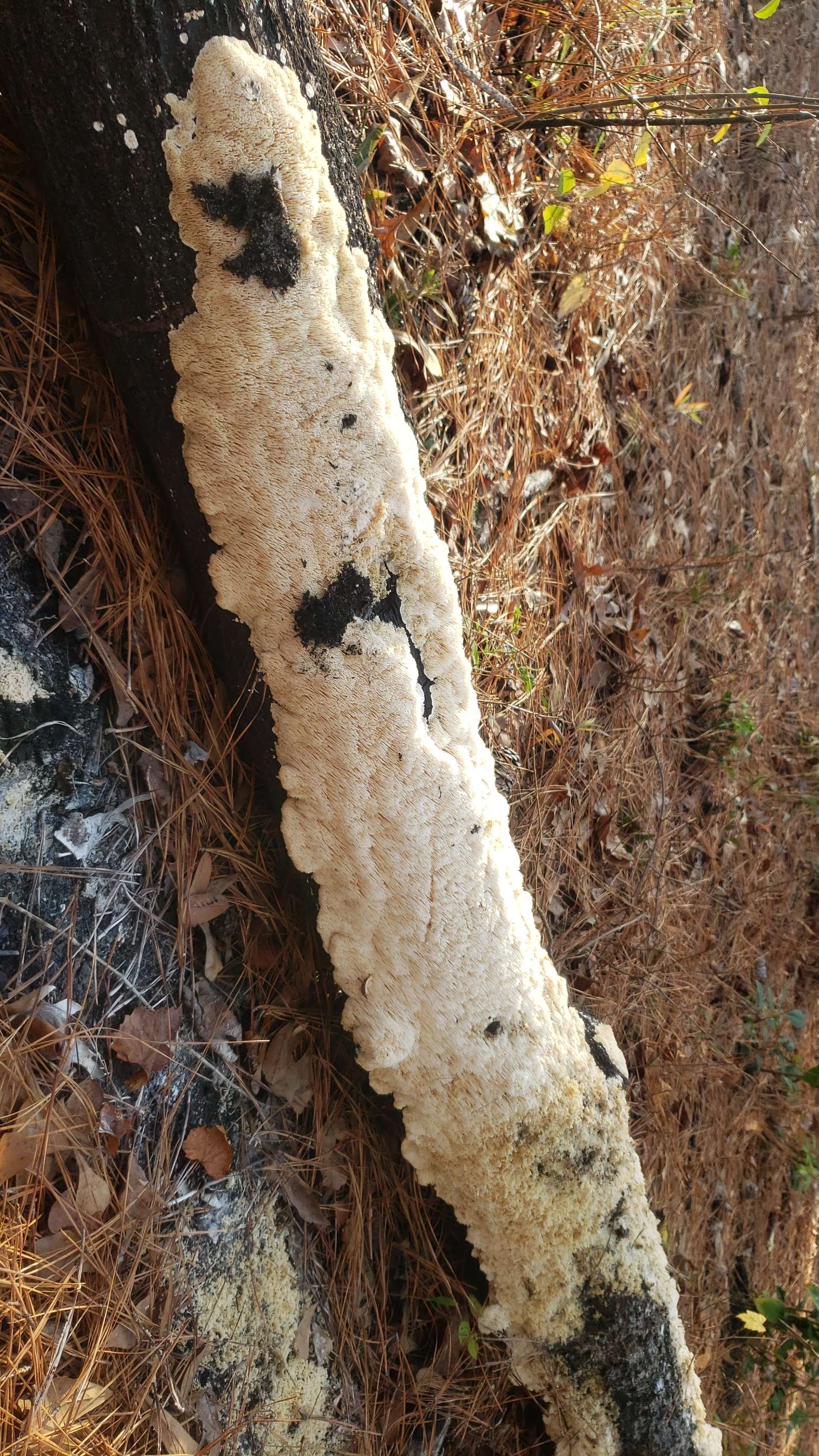
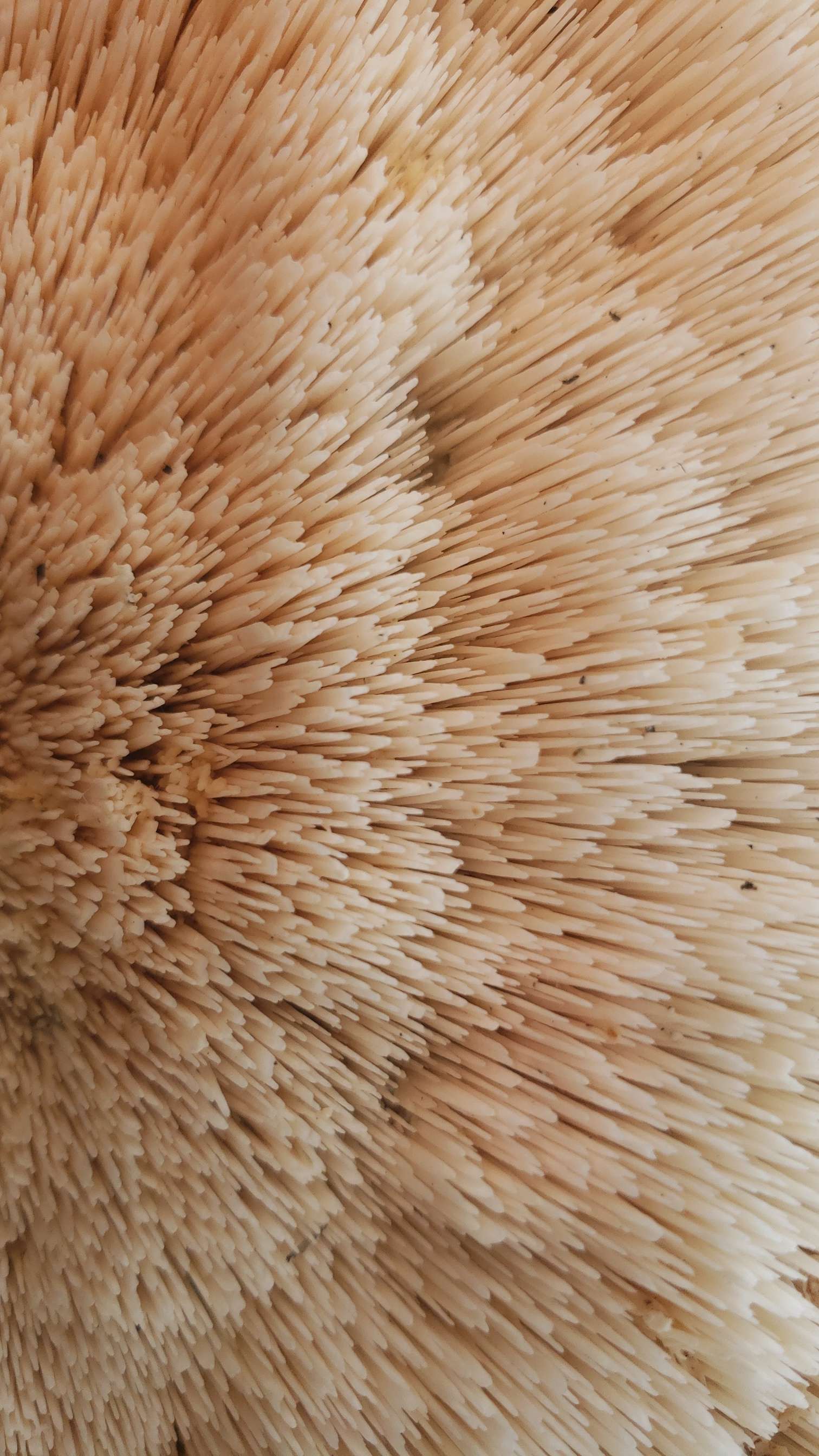
Radulomyces copelandii or the asian beauty fungus is native to the eastern parts of the world and has only recently made its way to the Americas. In fact the oldest documented sighting of this mushroom in our region of the world was recorded only in 2011. It feels pretty surreal to think about how the world changes in just a life time and the luck to have even found this. I was with a friend when we found it and at first we were astonished that we had maybe found an enormous cluster of lions lane but it felt so wrong and we were rightfully very cautious to identify it as such. Firstly the way it was growing was highly suspicious. Lions mane grows in a more globular kind of way. The tendrils were more firm and removing it from the tree it peeled off like a crust. Its not soft and squishy like lions mane is. We took a sample home to study it more and eventually confirmed its identity. It is said to be inedible but I'm not sure if its poisious. I suspect in the future foraging books will be forced to mention this mushroom as a lions mane lookalike. It almost fooled us but we are a little more wise than beginners and we are trying to be old mycologists, not bold mycologists.
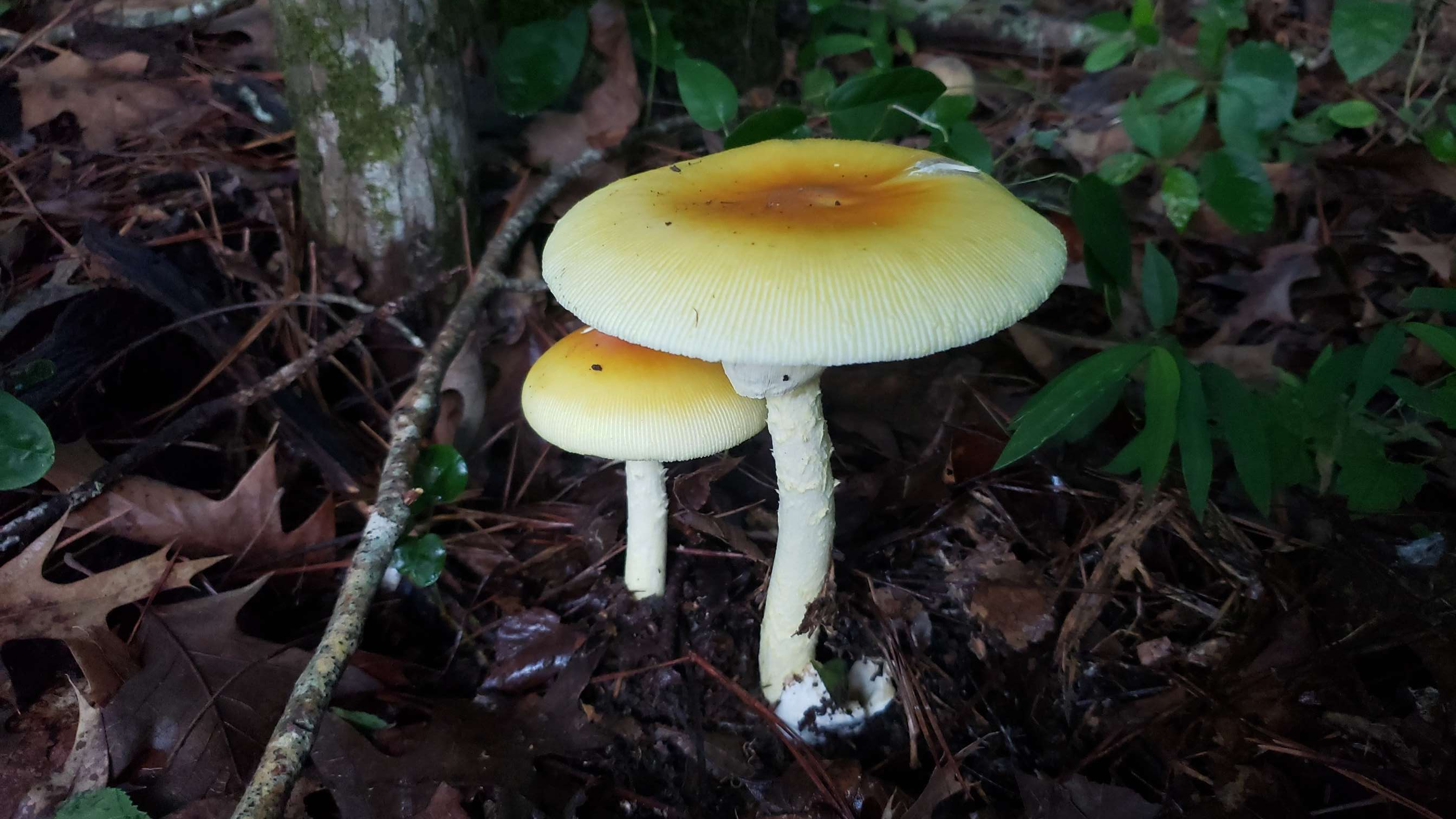
Amanita banningiana (bannon-gee-ahna) is another summer and early fall amanita that appears at the same time the caesars do. Actually they tend to grow very close to each other. These mushrooms look almost just like the edible bright red caesar mushrooms so it is very important to contain your excitement and observe the difference in color on the caps and stems as they are much more yellow and pale in appearance. There are some reports on the net of people eating these but with these obscure amanita mushrooms it is better to just leave them be than to take such a big risk.
.jpg)
This mushroom is quite famous. Very celebrated and studied for its medicinal properties some would be surprised to find out it's common enough to be growing in their backyards right now. Turkey tails, Trametes Versicolor are smallish polypores that are too hard to eat so instead they are ground into a powders to be made into supplements. They grow out in overlapping fans or shelves and are flexible enough to play like a washboard if you wanted to. The pores are very small and have a white to cream color. The tops come in a variety of colors of browns, blacks, blues, oranges, and whites. Always growing in this distinct color band pattern and always a little fuzzy feeling.
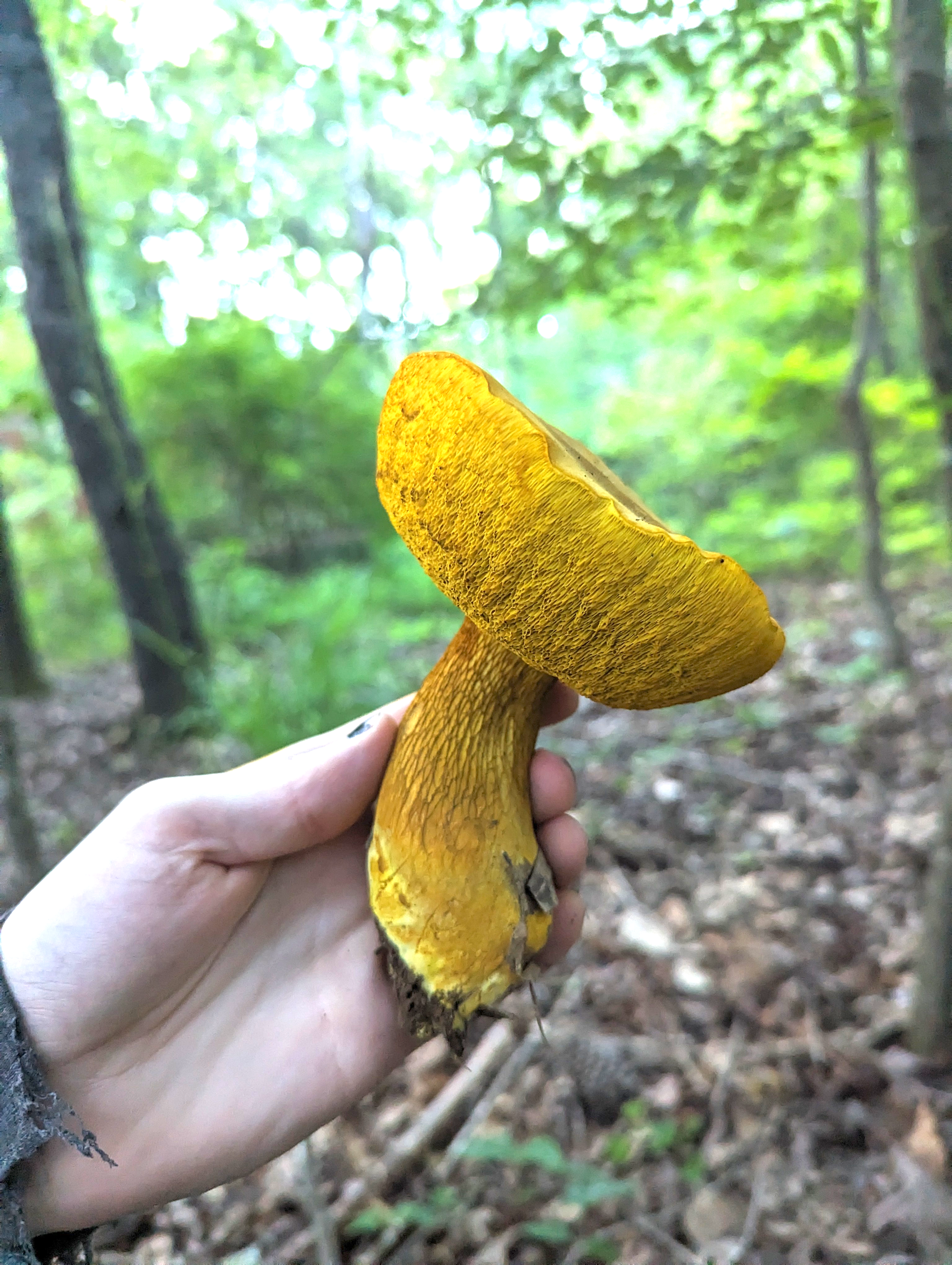
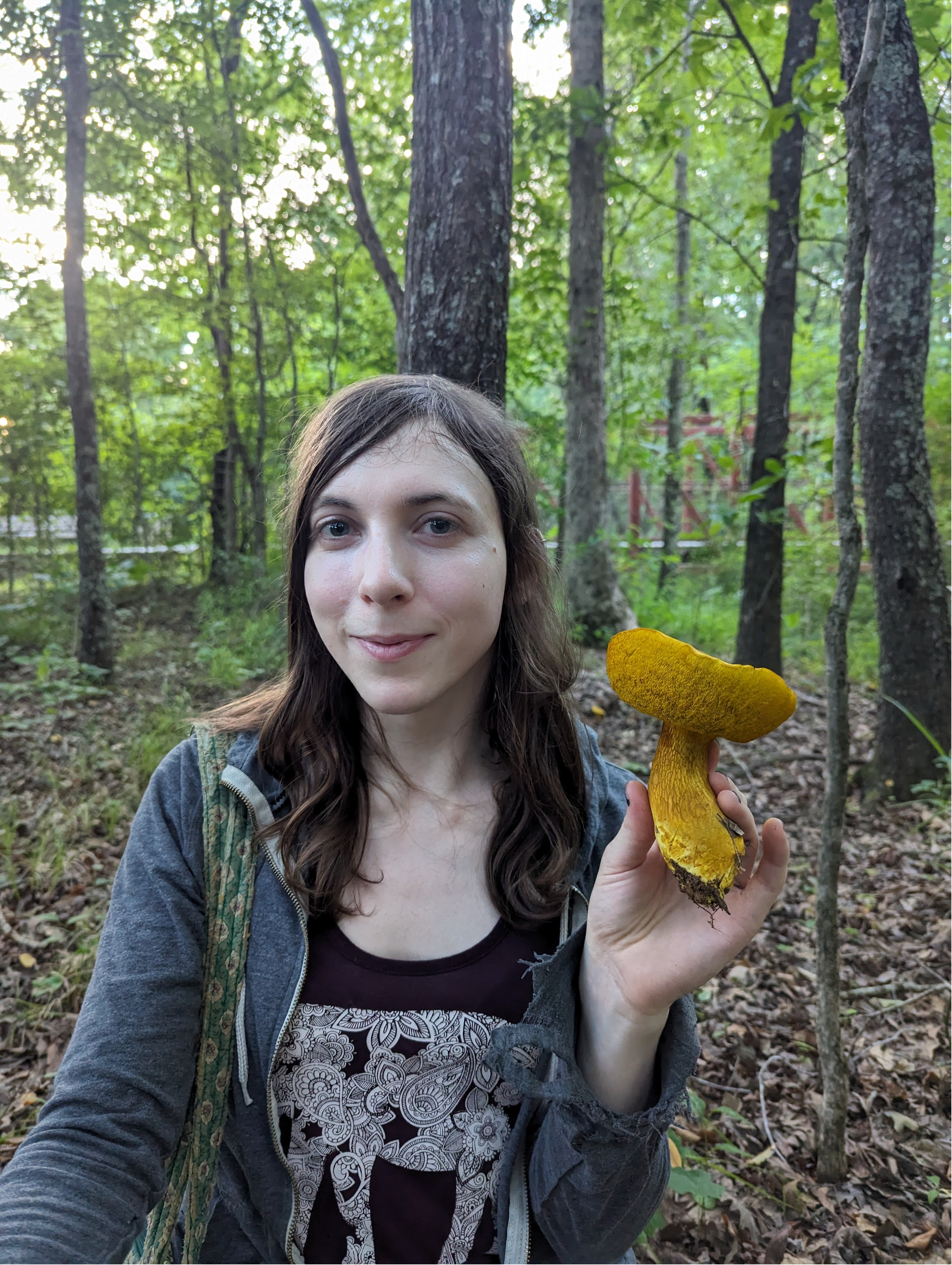
This magnificently golden colored Retiboletus Ornatipes (ornate stemmed bolete) always comes up in the spring at the start of mushroom season. I find them under big and old trees at the edge of the trail where destroying angels and caesars are also growing. The soil must be very healthy and teeming with mycelium in that little micro environment. Touching these mushrooms will leave a golden residue on your hands and fingers that comes off easily with water. In some guides they are listed as edible, some they are listed as too bitter. I haven't tried them though.
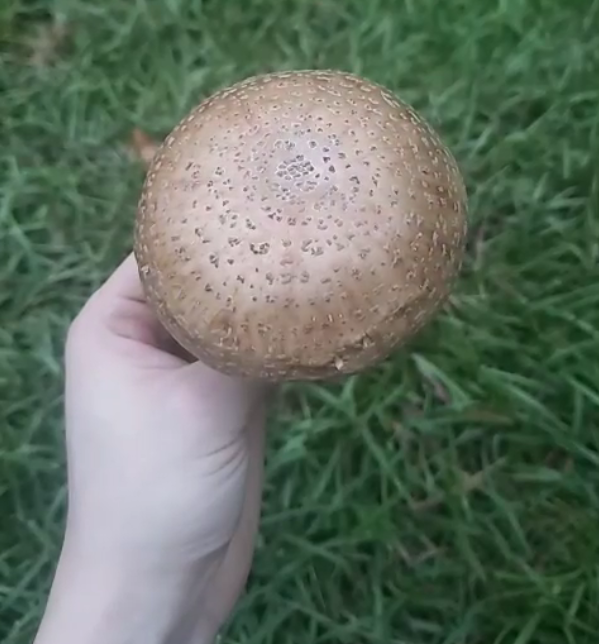
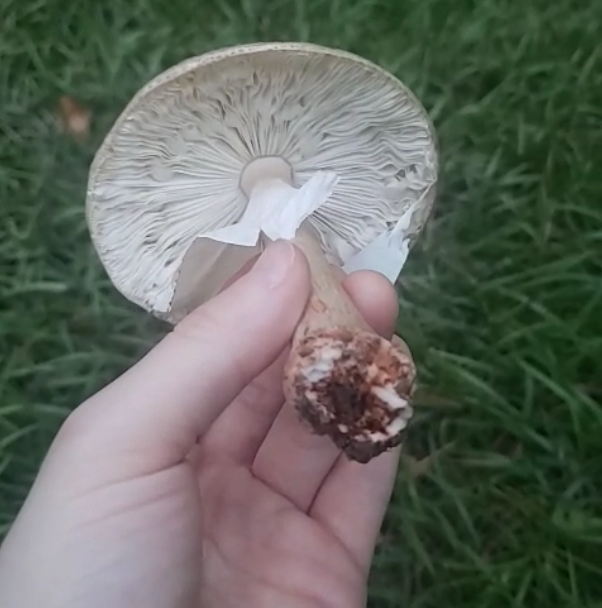
After two years of mostly waiting but sometimes seeing this mushroom grow in only one spot in the woods I think I'm ready to call it a Blusher, Amanita amerirubescens. It's growing on the riverbank in sandyish brown soil under mixed woods with oaks and pines. Some chanterelles grow around here too. They are brownish and stubby shaped. A bit shorter than the other amanitas I see. Club-like base. Warts on the cap. Stains red on damaged parts. No distinct smell. Apparently edible and good. Will this be the year I try? I need to consult my guides a few dozen more times to be sure.
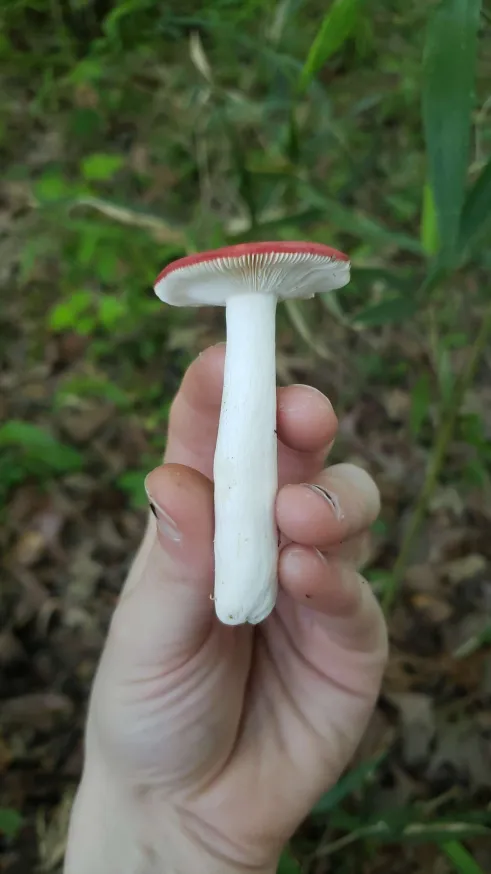
A very common mushroom in my area. Russula emetica. I recently learned the medical word emetic which is for a substance that enduces vomiting. That makes sense because every guide I've ever come across says eating this mushroom will do that to you. No thank you. Quite pretty though and where theres one russula there are usually more nearby. Like all russulas they sort of crumble easily when damaged or even explode into many pieces when you throw them into trees or at your friends during a game of mushroom tag.
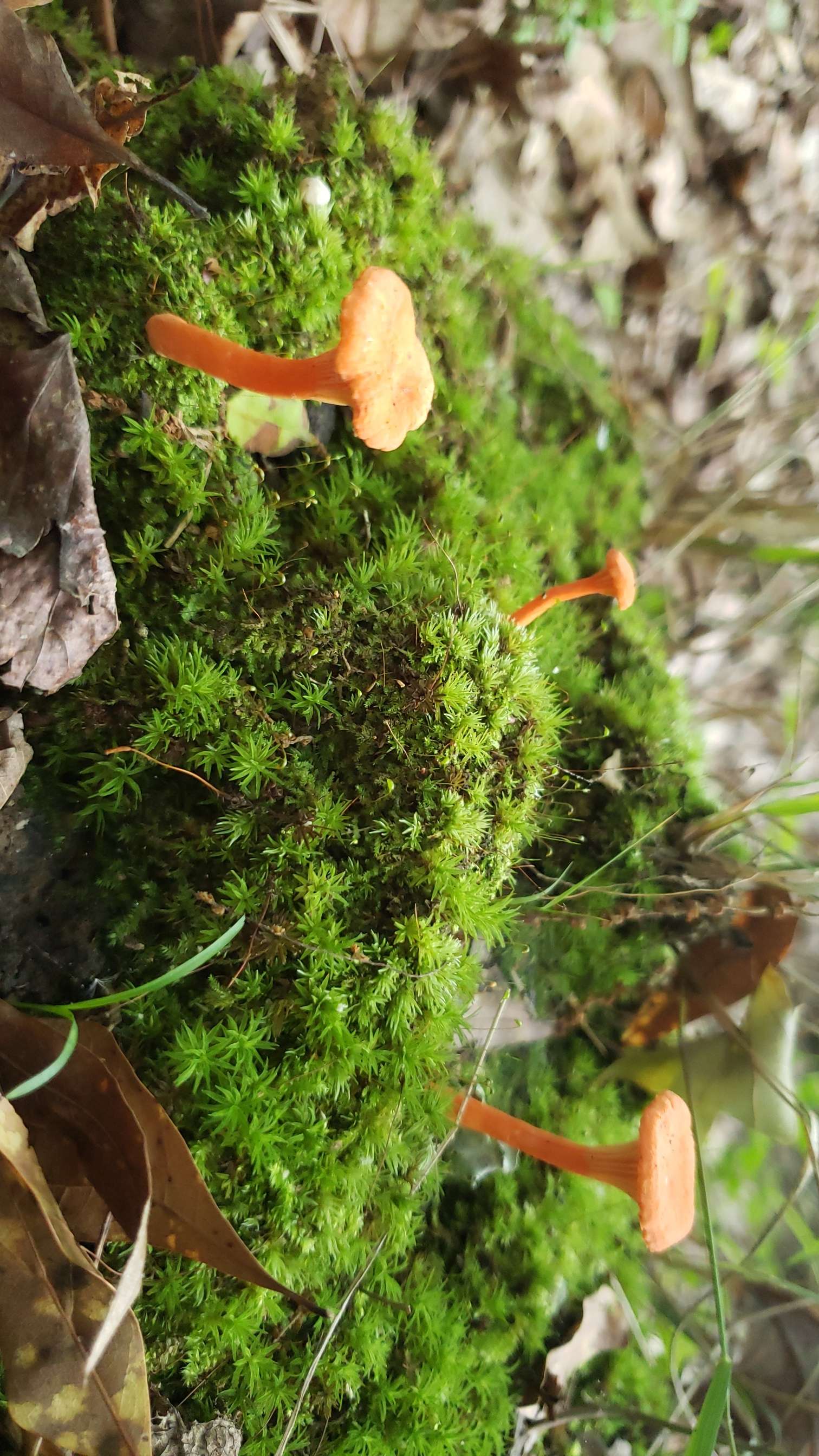
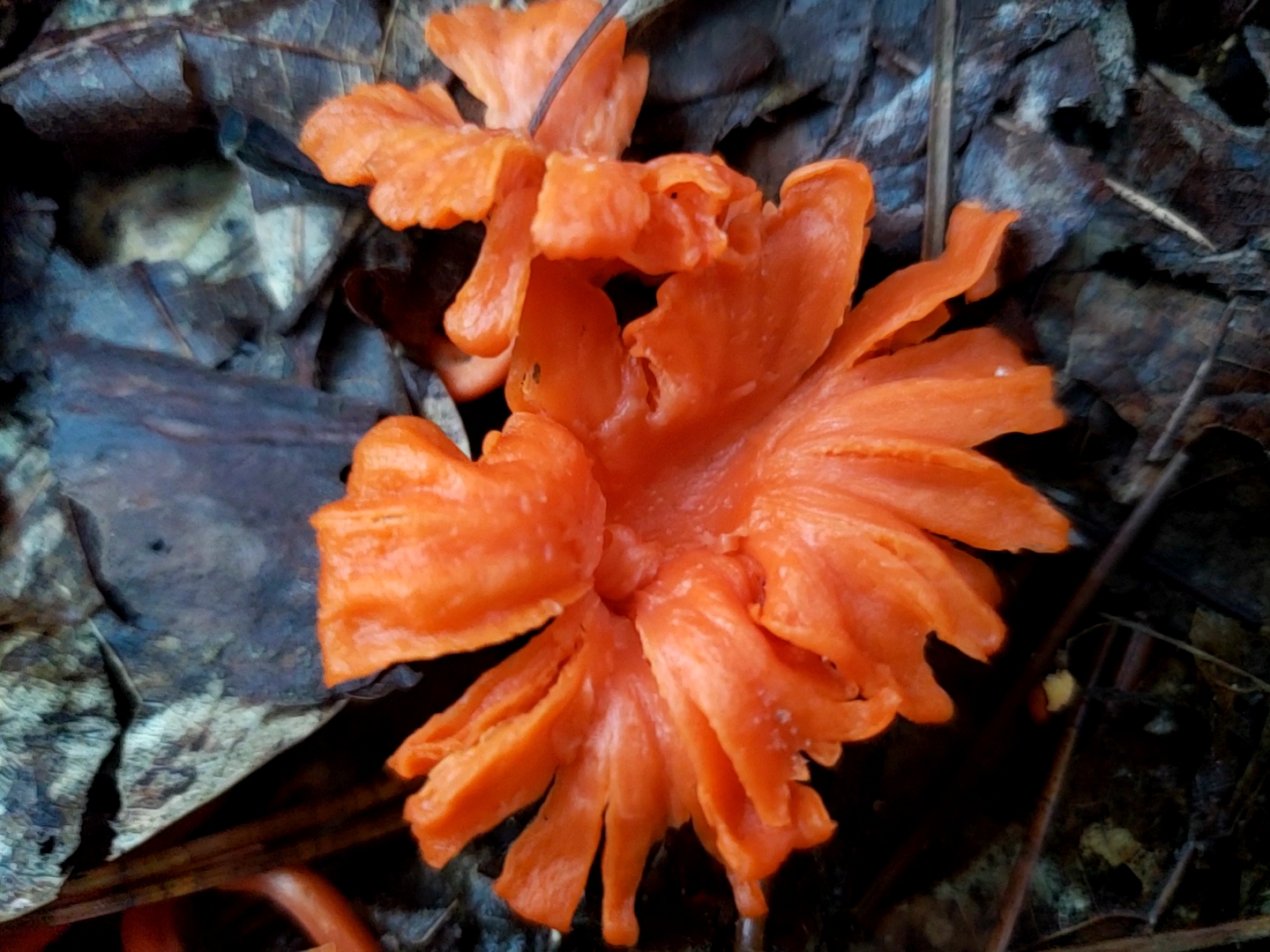
Cinnabar chanterelles are one of the first signs of mushroom season starting in my area. They always come up early in the foraging season and leave too soon. How shy. They are very small mushrooms and aren't very prolific growers either. For these reasons they are best to just be looked at but if you are curious yes they are edible and do taste just like the orange chanterelles do. They very flimsy and like to grow on moss or along the sides of trails. Often the caps tend to break apart and make the mushrooms look like little flames on the forest floor.
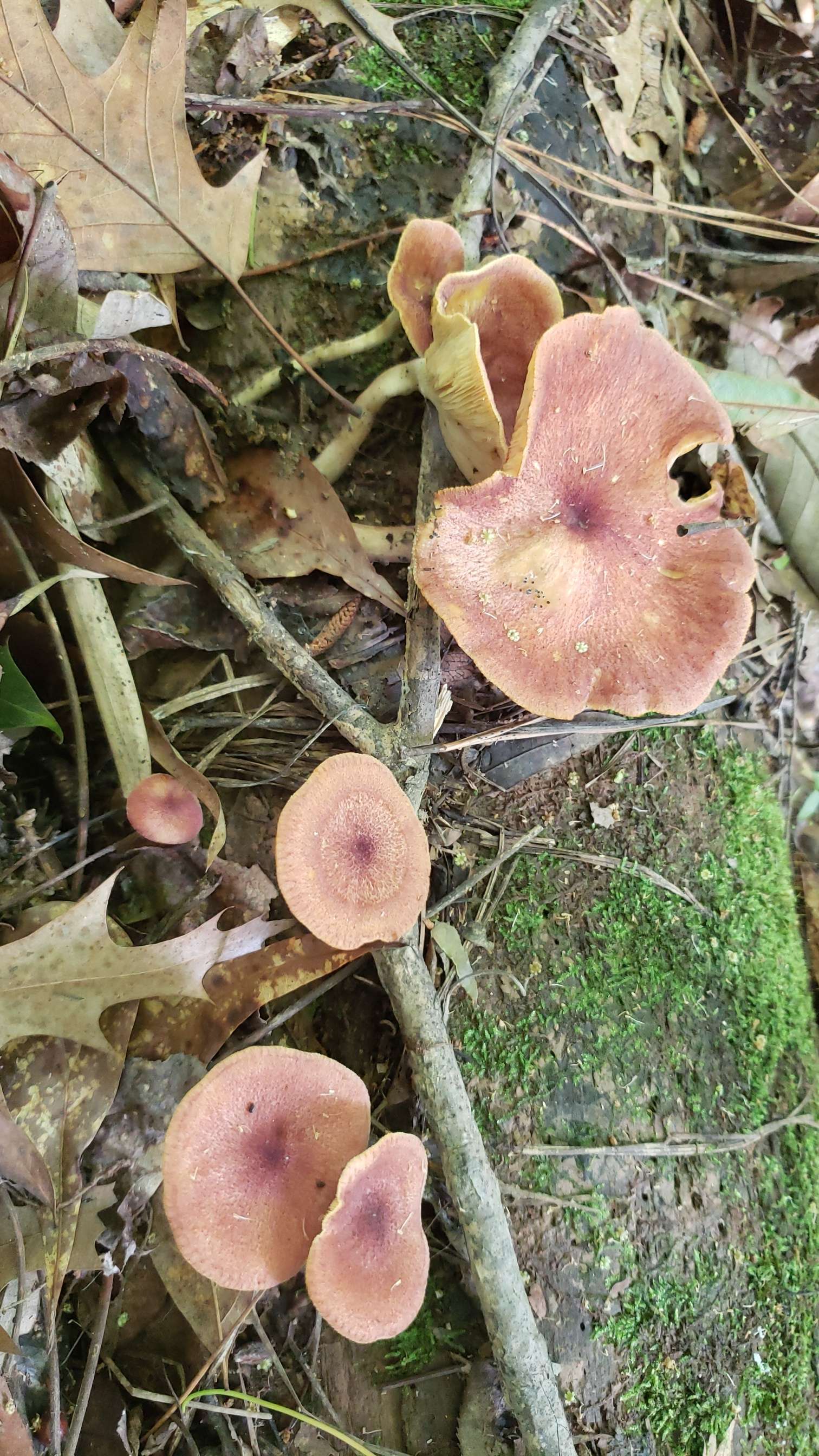

Plums and custard is a very nice name for this mushroom because most people can't remember that some nerd first called them Tricholomopsis Rutilans. This is only my second time seeing these mushrooms. As the name implies the tops are a little bit fuzzy and gills are a lemony custard yellow. No distinct smell. Grows on wood in a very wet and overgrown section on the trail where a big tree some time ago fell and had to be cut in half. Apparently edible and good.
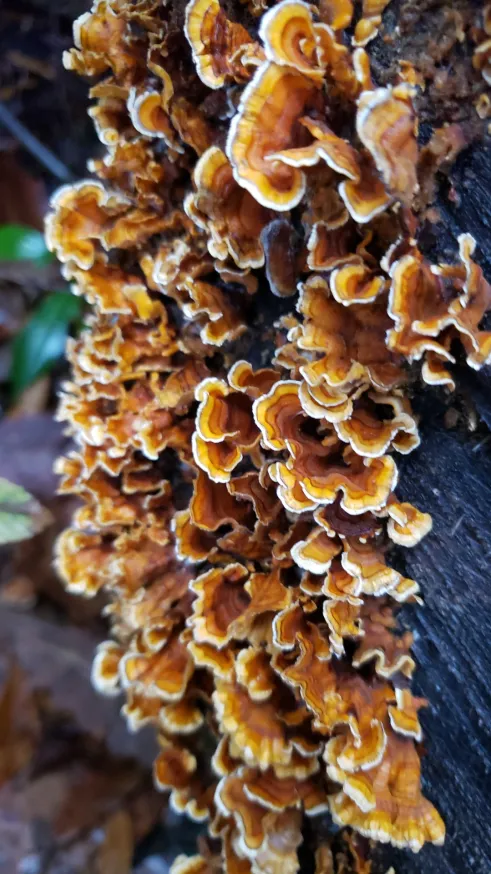
Crowded parchment (Stereum complicatum) is a prolific fruiter that takes over entire logs. They are very common where I live. My photo is not a good representation of their size because they are very small. These tiny mushrooms show up in the hundreds or maybe evens thousands and look a bit like turkey tails to new mushroomers but these have no known uses to us therians medicinal or otherwise. A lot of the mushrooms in the stereum genus look similar to turkeys also. There is also another that looks just like these ones but they bleed red when you damage them.
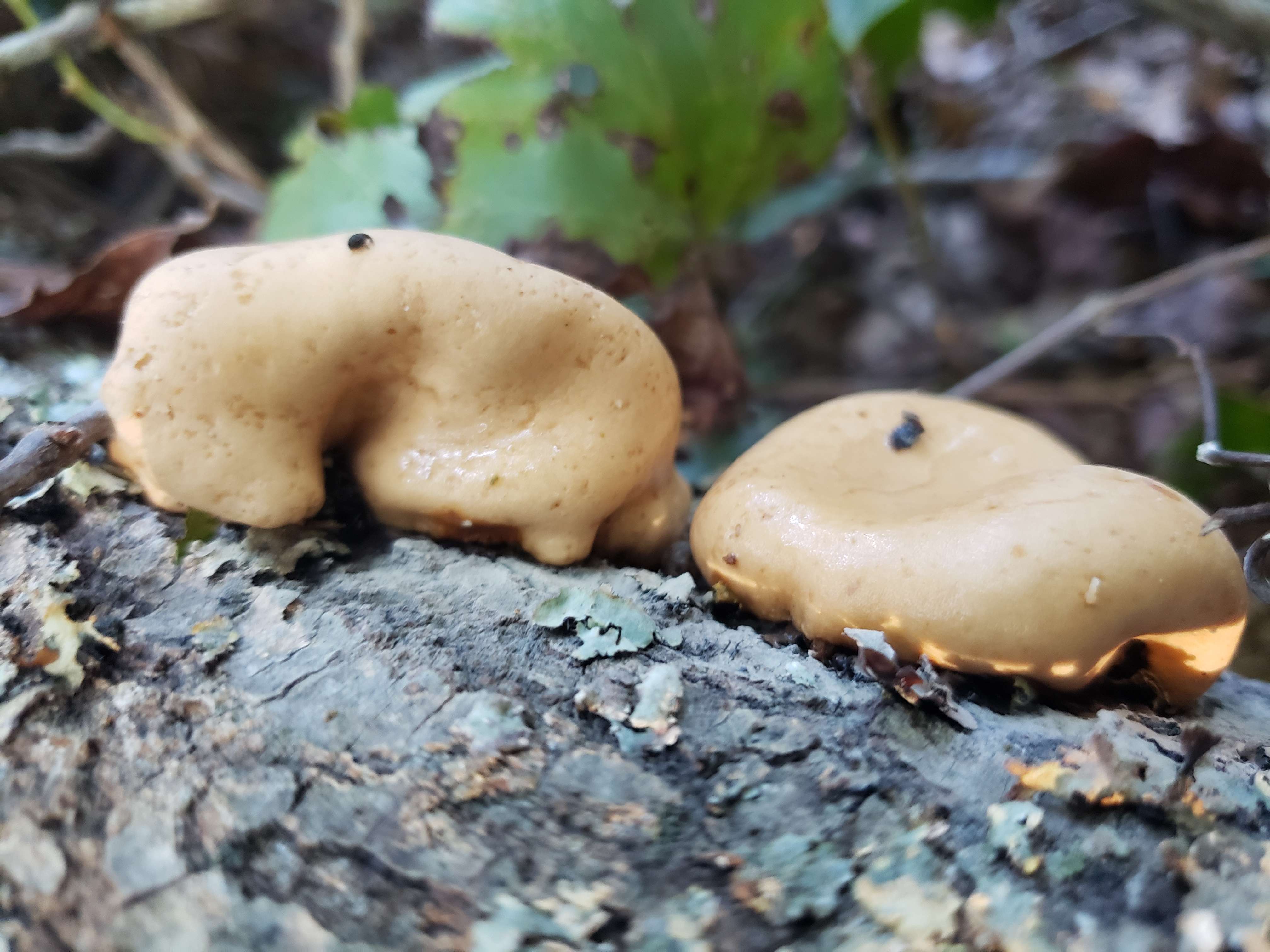
This mysterious and bulbous mushroom is smooth and looks like rolled up orange popsicle flavored dough. Its rough and leathery on its top side and i was very surprised when I saw it was a polypore. I think it is Trichoderma Peltatum. I found it on a grounded lone broken branch at the top of the riverbank. Looks strangely brain like. I thought it was something plastic when I first spotted it. My guide book says that this species thrives at bodily temperatures and has been found in a human lung. So smelling and tasting is not recommended.
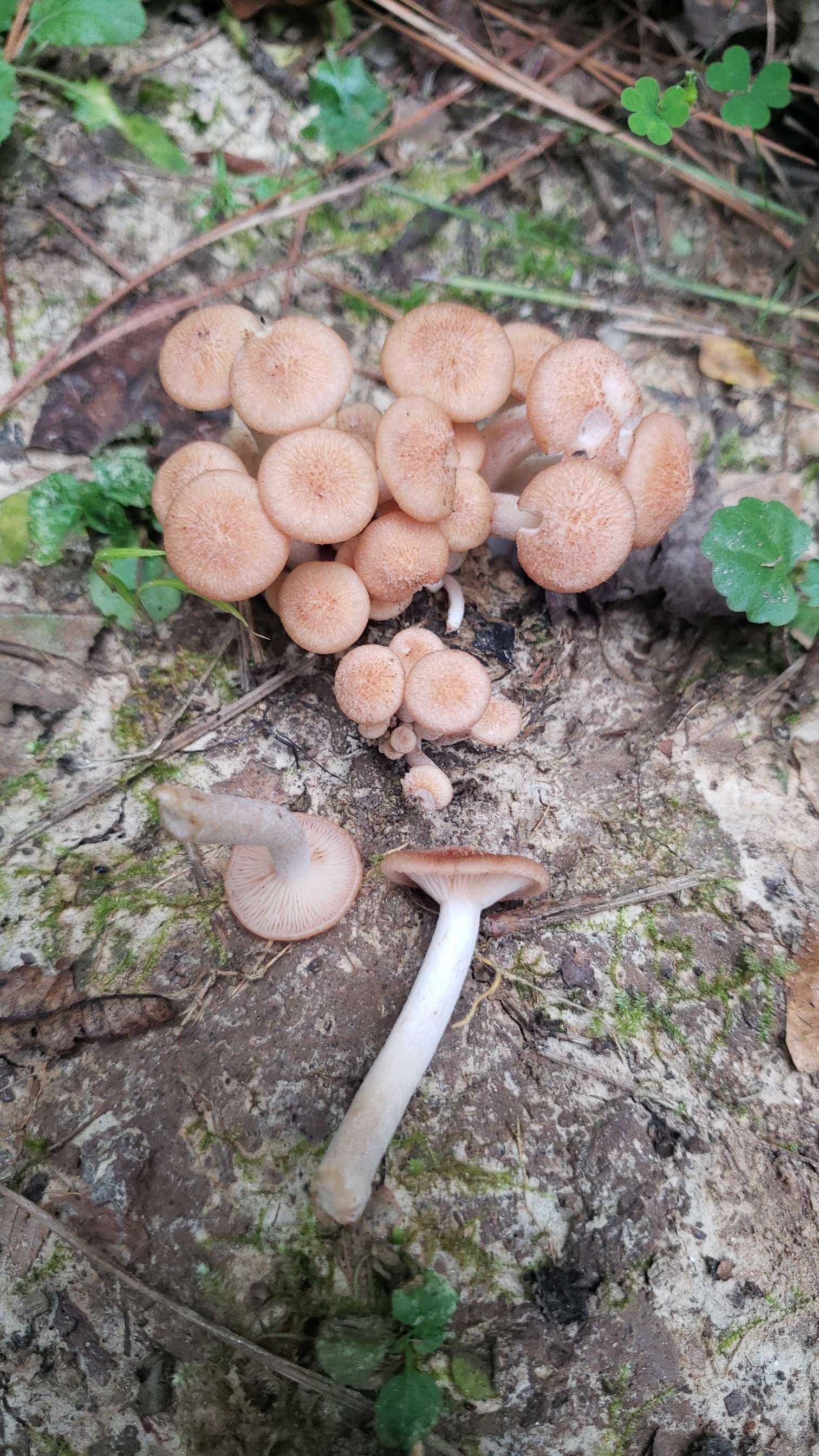
Desarmillaria tabescens, the ringless honey mushroom is a tasty edible mushroom with a quick life cycle. You have to get to them fast because bugs certainly try to also. They grow in these big clusters at the base of trees. The mycelium network is actually going through the ground and is attached to the host tree that it is eating. They are parasitic and very agggressive spreaders, so they are a good indicator for which trees are dying and or already dead. They are somewhat pinkish brown, pinkish gills and slightly fuzzy on the caps. They taste pretty similar to pork and are pretty good but a lot of people report tummy issues after eating them. Fun party fact; one honey mushrooms mycelium in the western united states is identified as the largest living organism in the world.
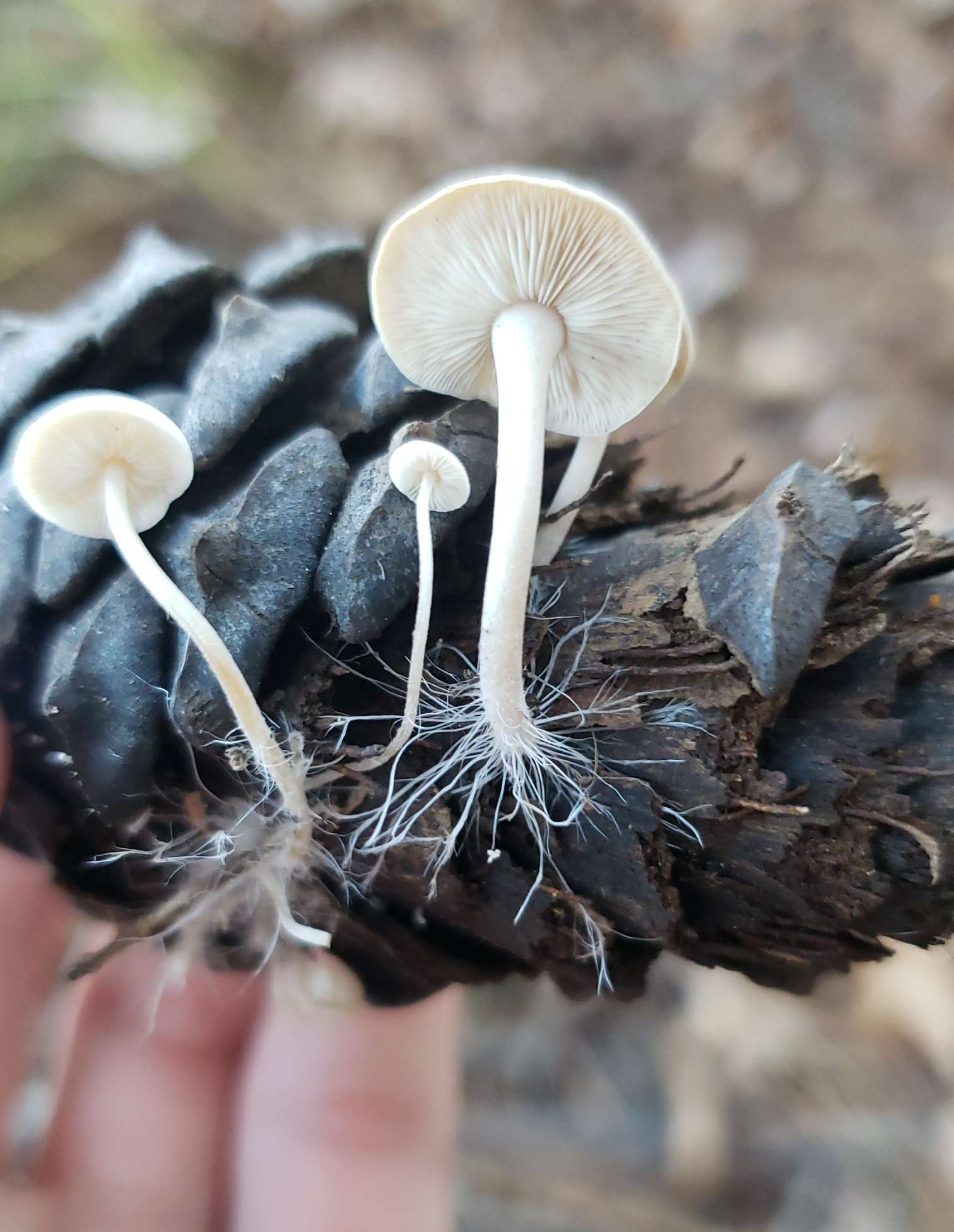
Next time youre in a cursed pine forest (they are all cursed actually) take a look around and see if you can find this tiny mushroom, the conifercone cap (Baeospora Myosura). Absolutely gorgeous mycelium on these guys. They are a fall and winter mushroom. Unknown edibly.
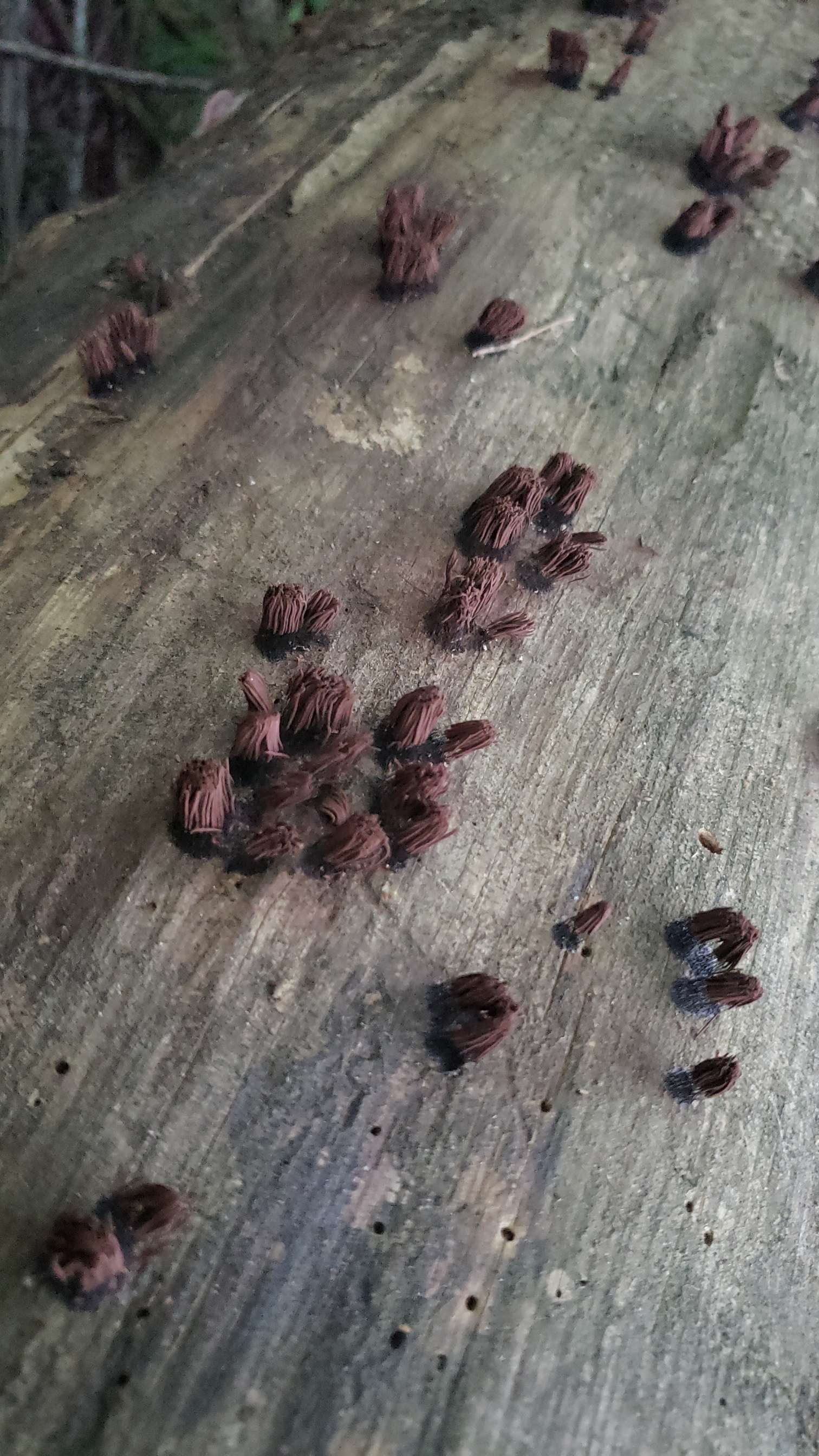
Stemonitis splendens is the chocolate tube slime mold. Not techincally a mushroom but it is something youre bound to see eventually as it is a little bit common here in the states. These are very small and grow out of dead logs. The little tendrils grow in clusters and are soft and bend easily. When flicked they release little clouds of chocolate spores. There is not a whole lot of information about this organism that is easily found but wikipedia says there are estimated to be maybe 18 unique species of this slime mold. Its been observaed that Philomycus slugs like to eat it. Just makes me want a warm chocolate drink and a cozy fire.
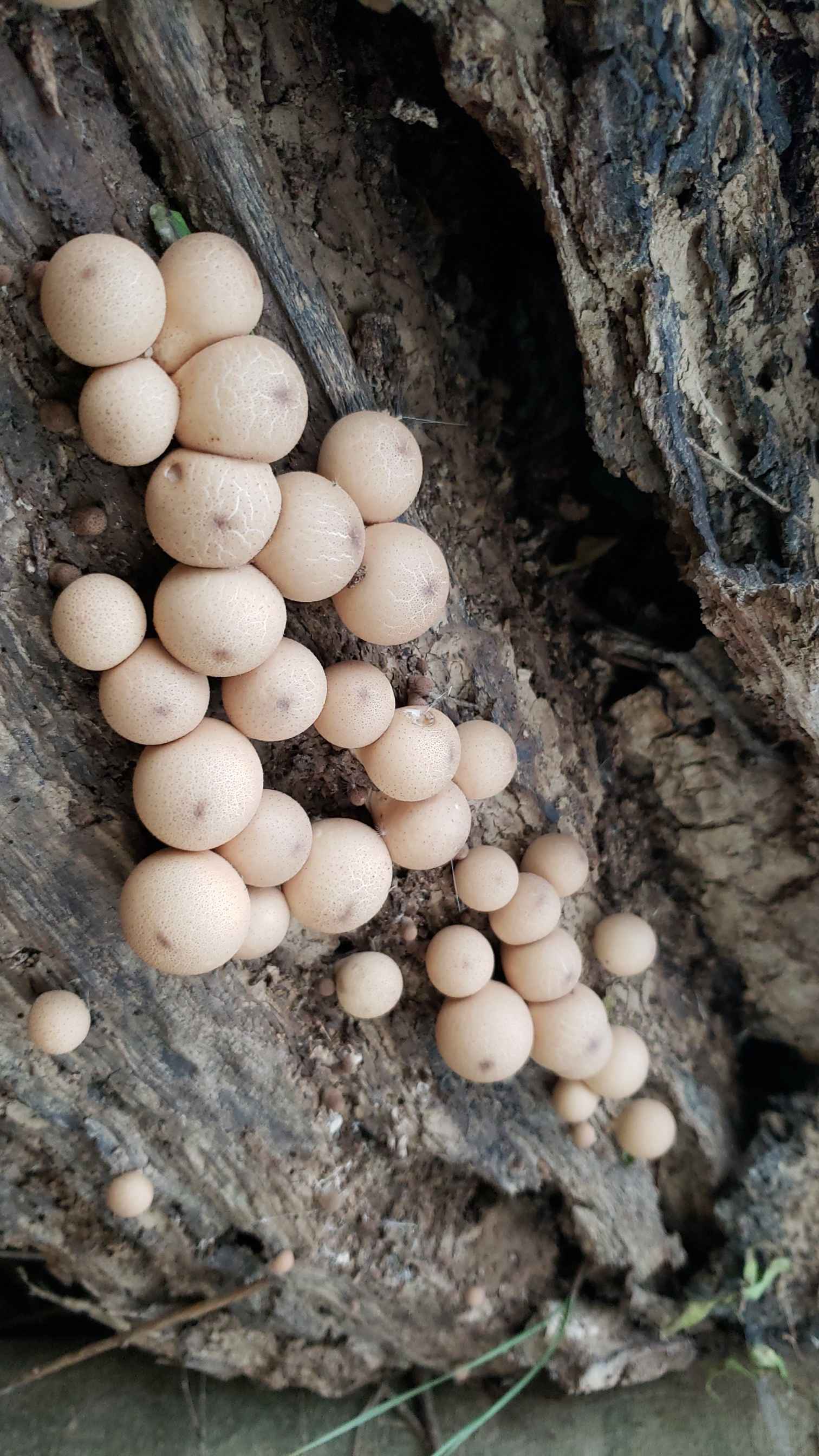
Lycoperdon pyriforme is the pear shaped puffball. For the most part I find them in the colder months of the year. They can completely take over their host log. On their surfaces there are little colored speckles. When cut in half and fresh the mushroom is purely white inside. It is firm but spongey also. Theres sort of a layer between the inside and out part of the mushroom which feels a little leathery maybe. If you find these when they are too old to eat (they are edible and good) the tops of them will have opened little holes where the spores shoot out. They are one of my absolute favorite mushrooms to physically abuse, like the russulas, because if you slap them millions of spores will shoot out in a dark olive green cloud.
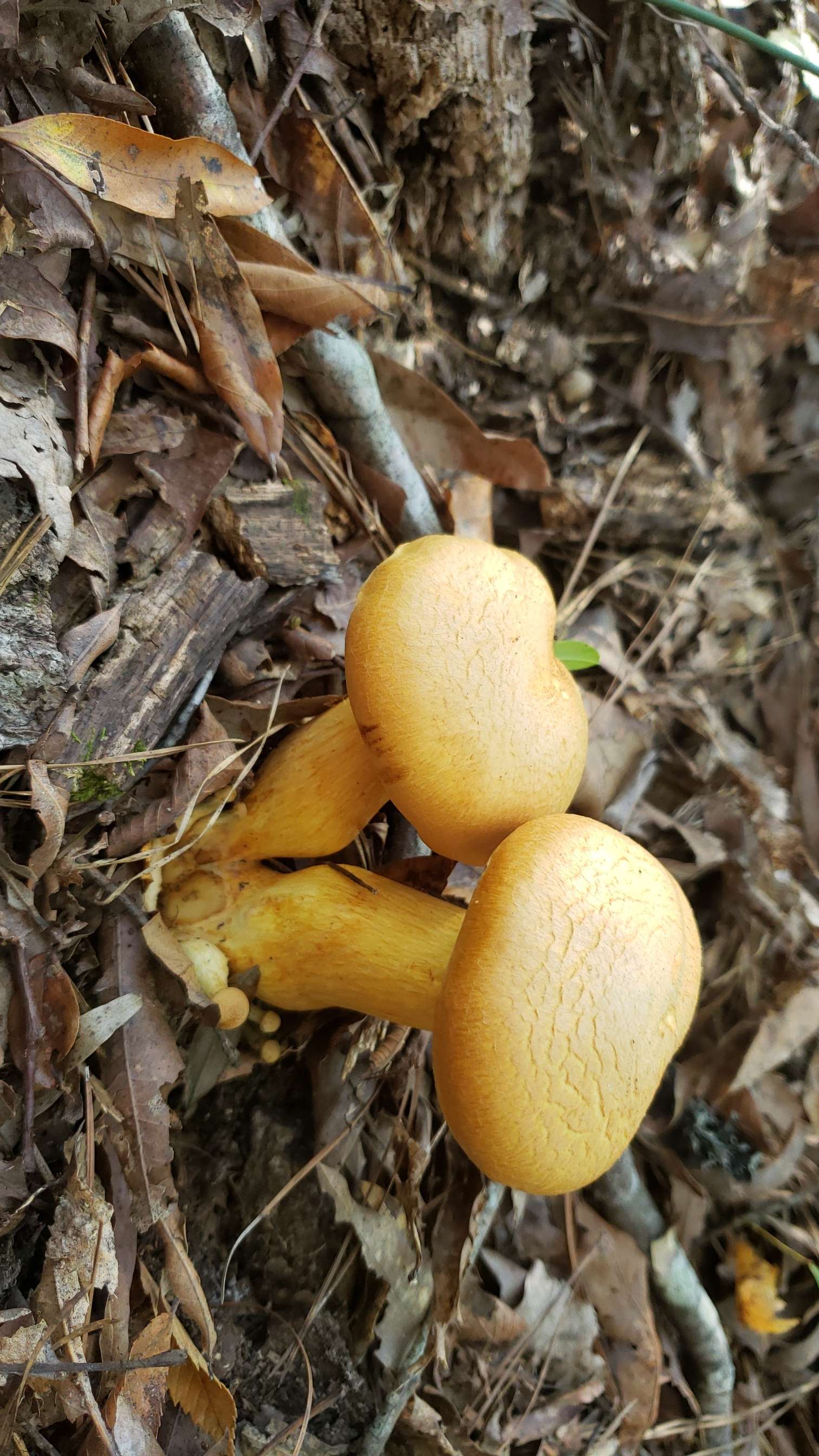
Gymnopilus validipes or the laughing gym is a wonderful somewhat chanterelle look a like with a secret. This group of mushrooms has weak psychadelic properties. However they are also too bitter to eat and cause nausea and are not worth consuming. What is worth considering though is the reclassification of all psychedelic substances. Go out there and organize a group of your smelliest friends and start a local movement to get your government to consider decriminalizing these substances. These orange creatures grow on wood, sometimes appearing on the ground but actually eating buried wood. They're somewhat chunky. Yellow gills. They drop brown rusty colored spores. Thin tissuey ring fused around the stalk.
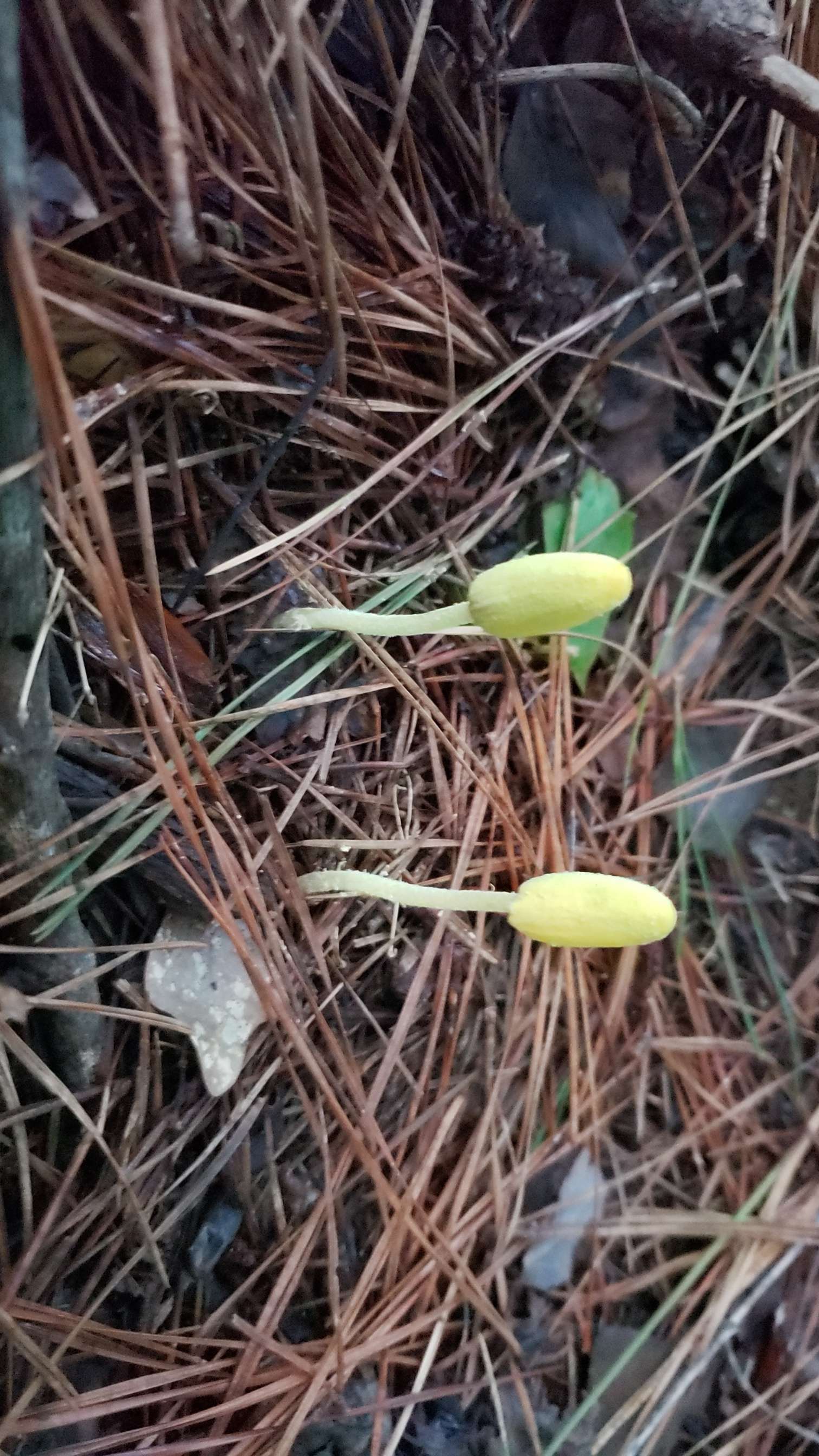
I found these two Microglossum Rufum, Orange Earth Tongues by themselves off to the side of the trail just before the slope down to the river. Although very tiny I was surprised I had never seen them before or since because its an area I pass very often on my walks. Very elusive little guys even with their bright colors. Unknown edibility. Too small to eat even. My photo shows them growing on the ground, perhaps some wood under the surface among pines, but my guide shows them on wood with leafs around. Maybe different species, but for our purposes and without proper equipment this is a useful identification.
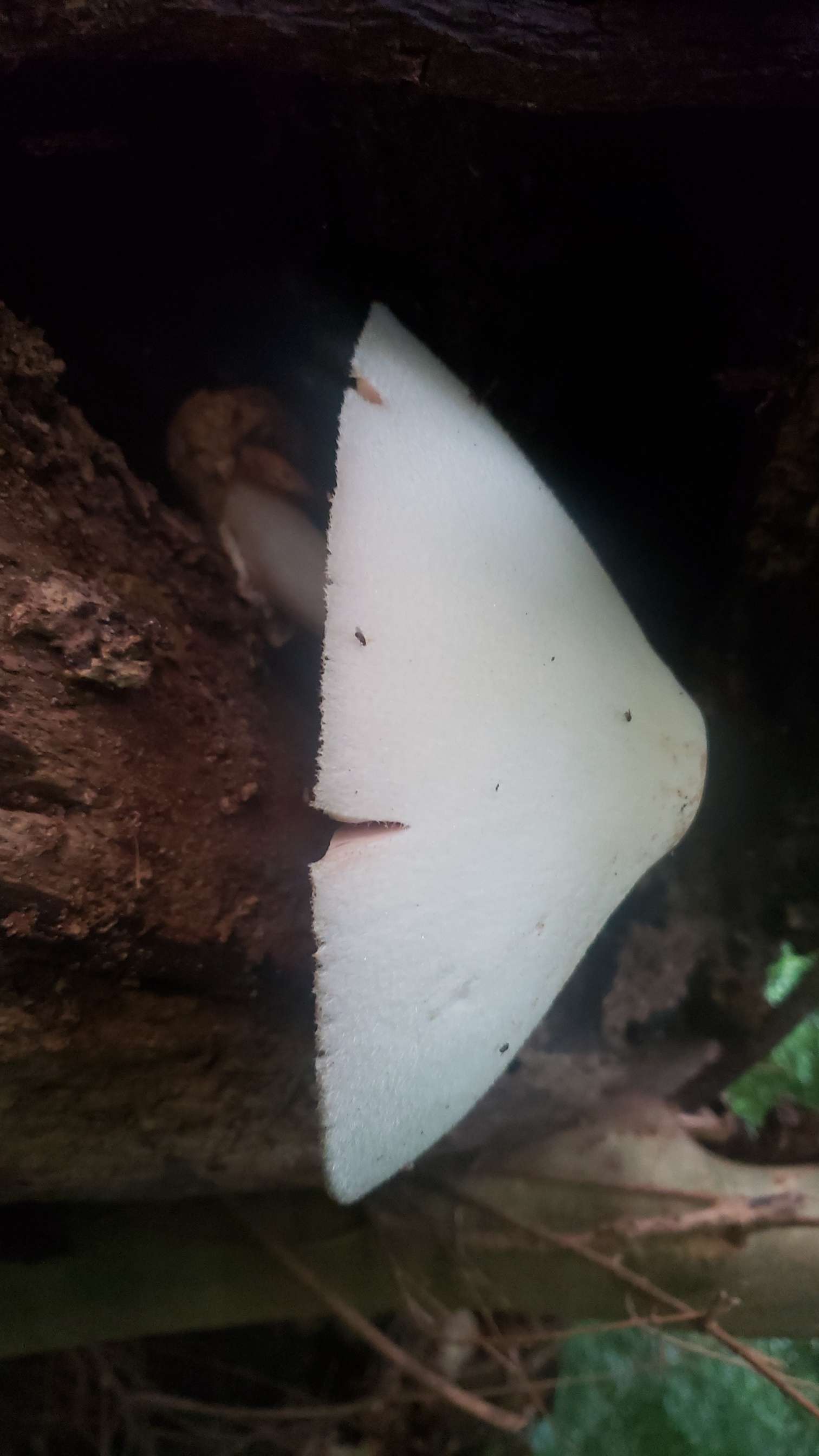
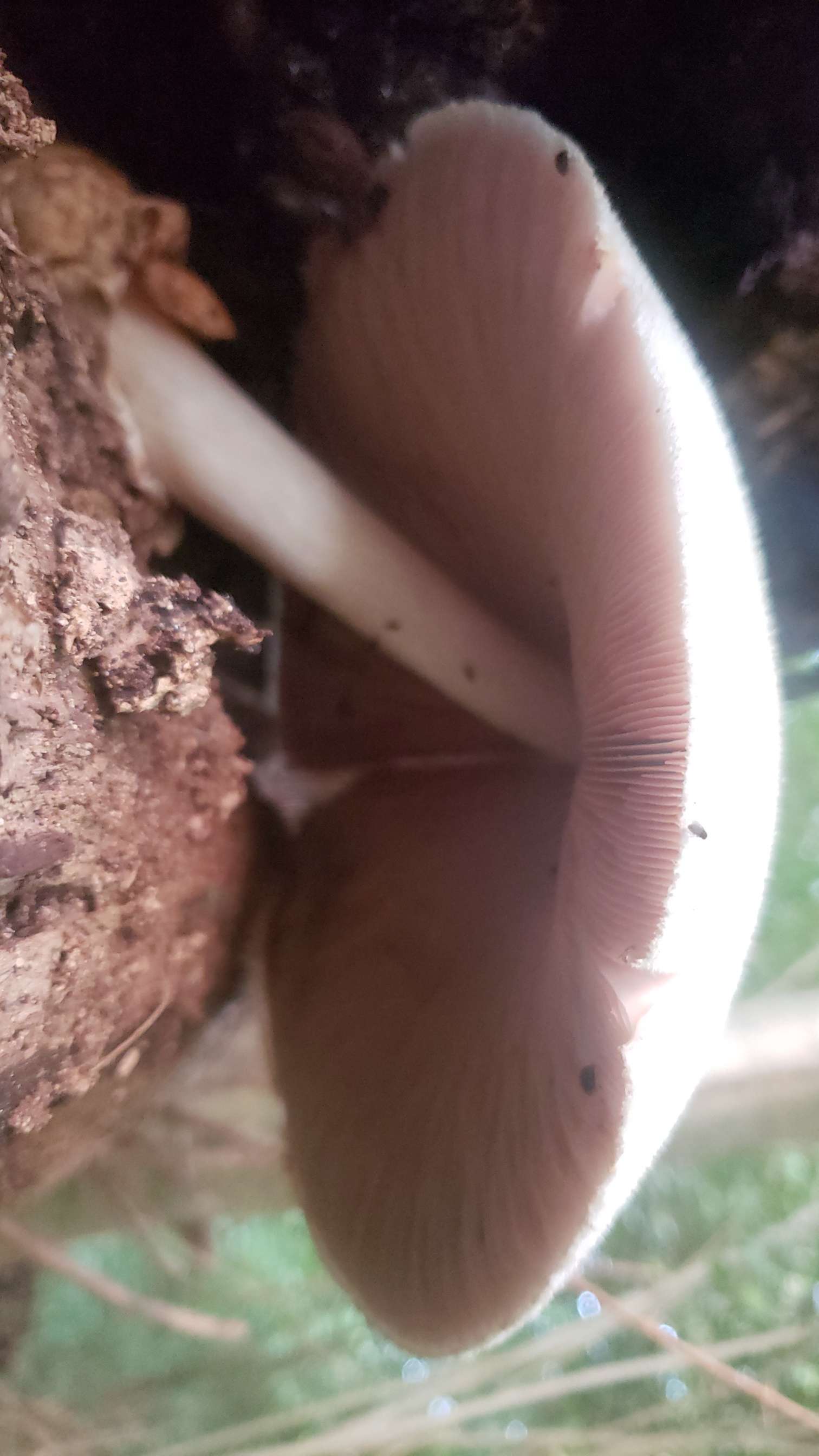
Silky Rosegills are of course named after their beautiful gills. The cap of the mushroom is white and has a fuzzy texture all over. Very much bell shaped. Grows out of wood starting from an egglike sac. They're quite big. I think I know of only two spots where this mushroom grows making it a bit elusive to me. This one also happens to grow in an dense foresty spot thats hard to get photographs in. Next year I hope to see it again for better pictures and maybe a sample to eat. A friend told me that they're delicious.
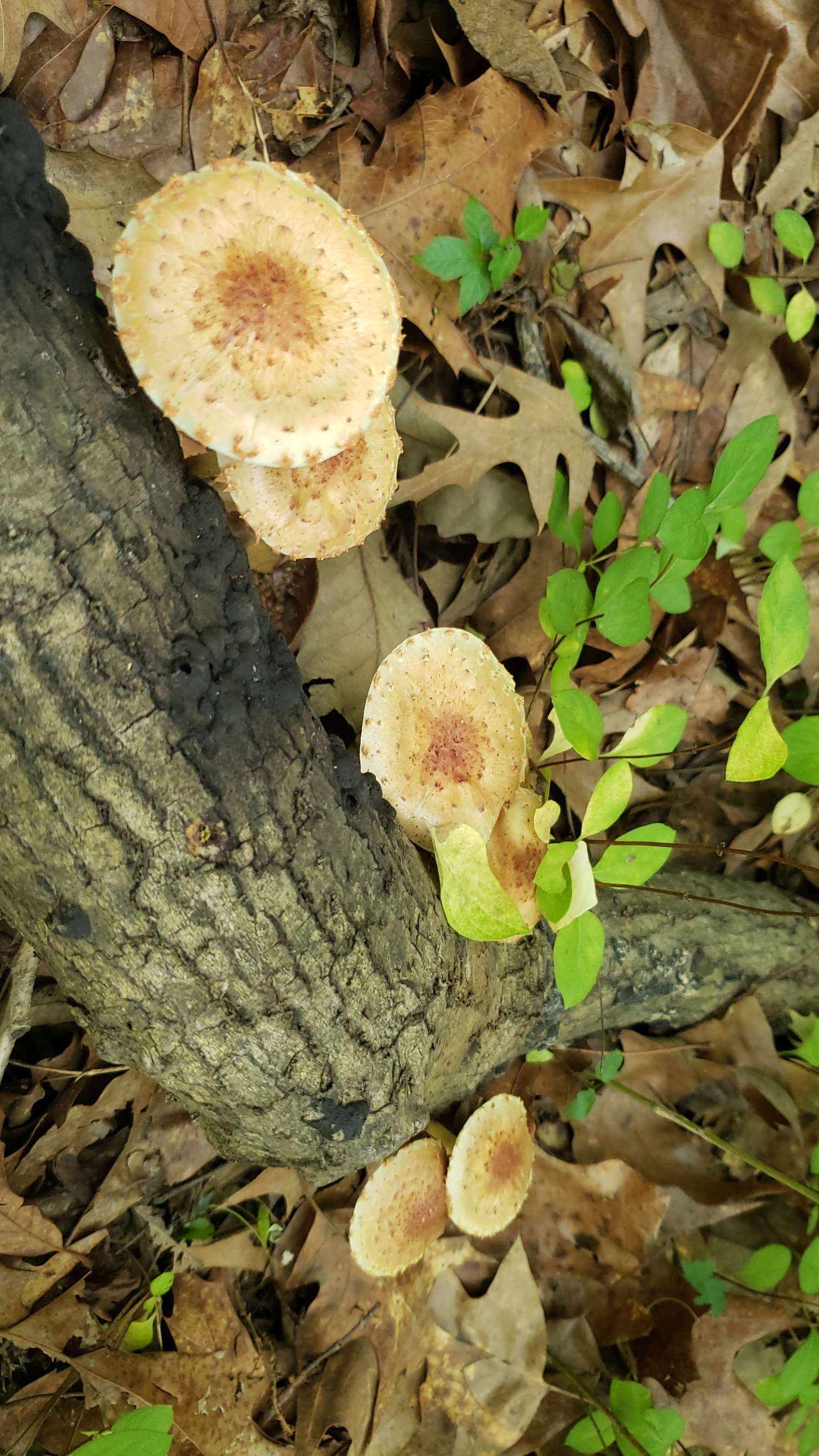
I believe this is Pholiota Squarrosa, the shaggy scalycap. This is my first time finding this mushroom. There a several different kind of pholiotas that are very similar and its said by more qualified people that a microscope might be needed for a more definite id, but this is good for now. It is growing on wood in a very densely shrubbed area with lots of native bamboo and mosquitos around it. Notably the cap reminds me a lot of a pineapple. On this specimen, the gills are whiteish yellowish and there is a ring around its stem.
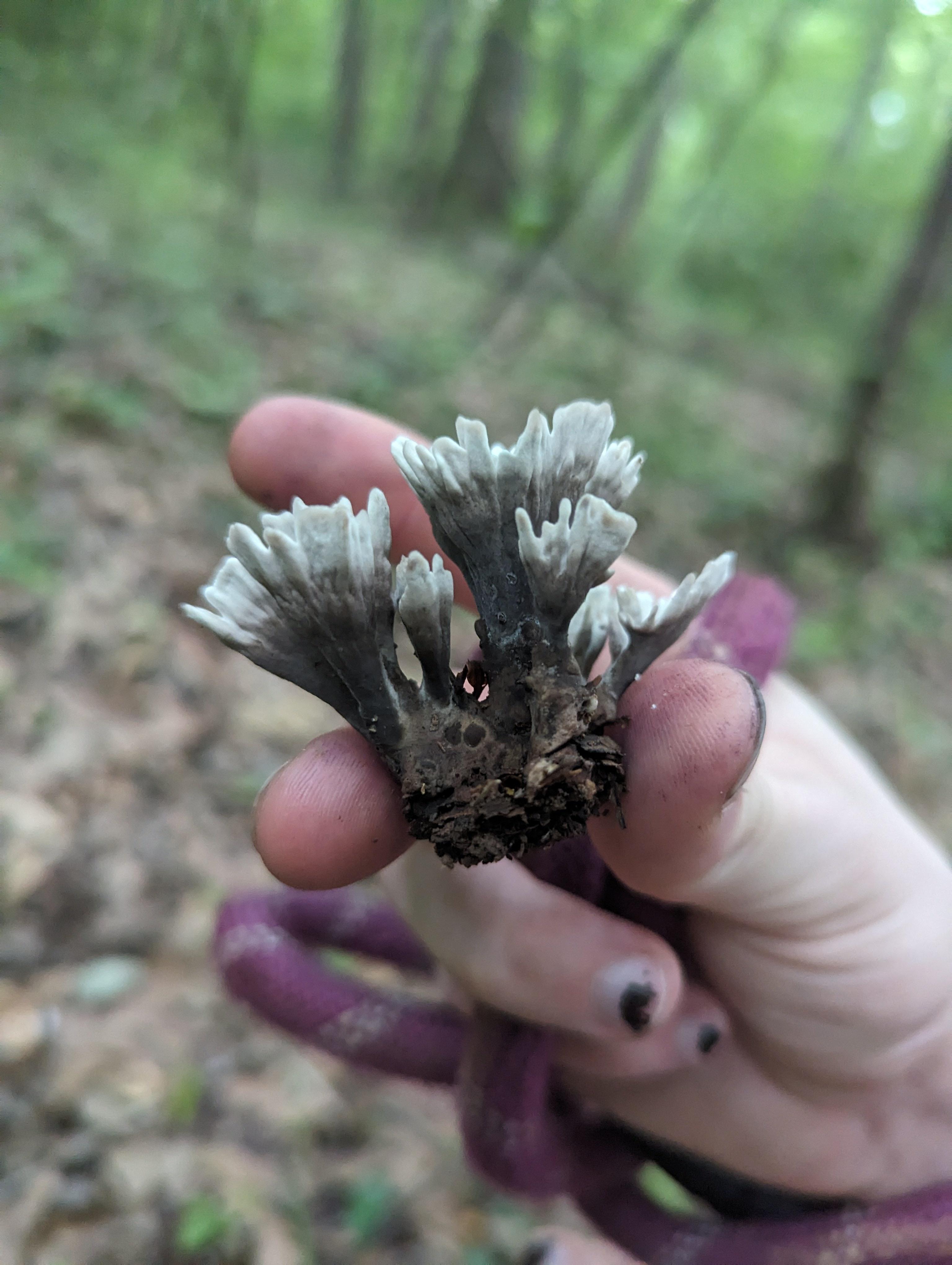
Thelephora anthocephala (stinking earthfan) is a mushroom not even listed in my field guide. So for this reason it is a little harder to feel confident saying much about it. But that's never stopped me before. Unlike a relative of this species this one does not smell strongly of garlic or like anything at all that I've noticed. It is a great indicator for the start of mushroom season though and likes to grow in these big rossettes on the ground, often in little groups. They are like flattened coral mushrooms and look like little hands reaching out of the soil.
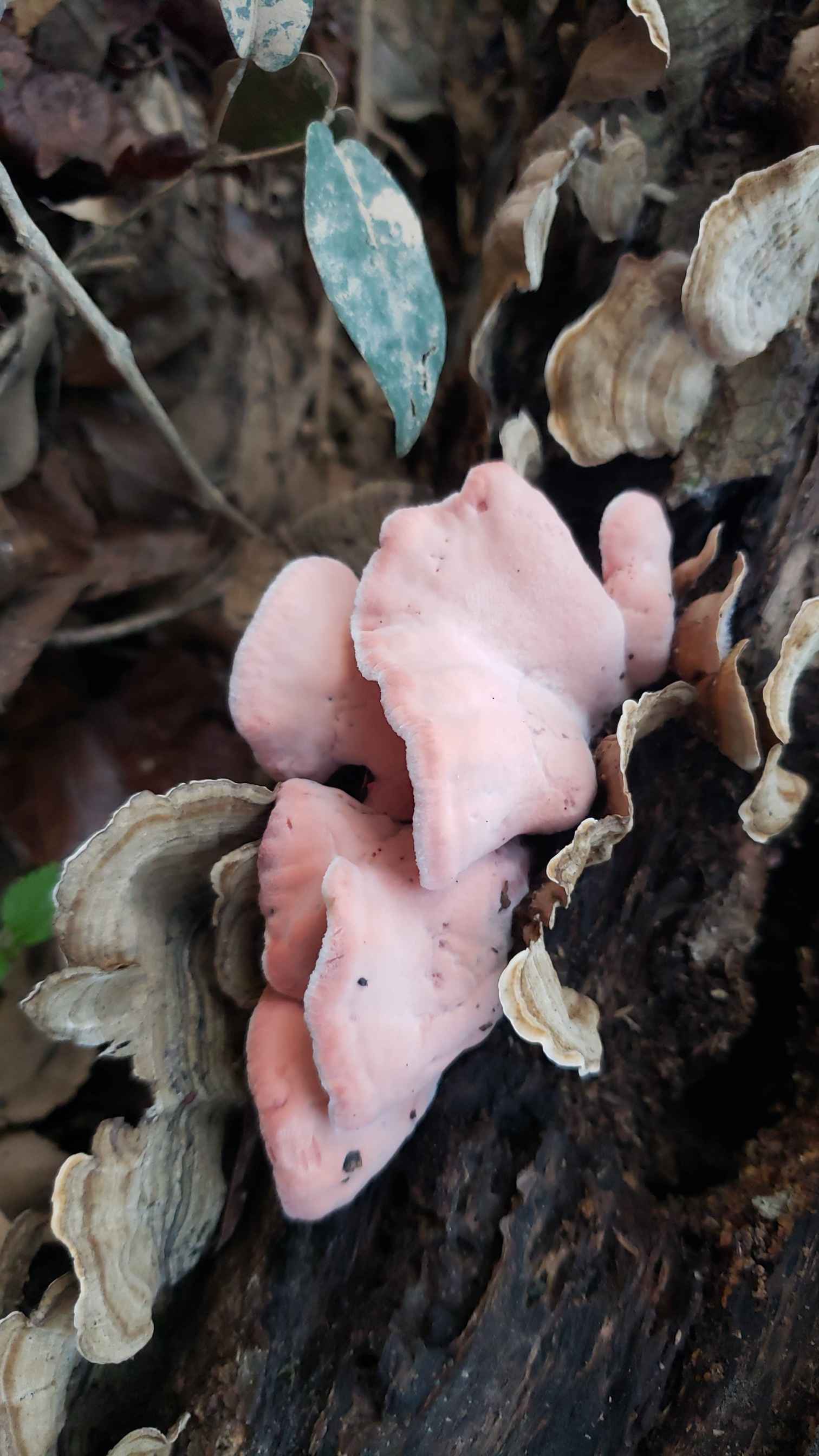
I think Phlebia Incarnata is my new favorite name for a mushroom. This wonderful pink mushroom is firm and floppy. The underside is white and has these wrinkles that aren't quite pores but sort of toothy ridges. These are often found growing with Stereum Ostrea which is the other pale mushroom in this photo. There is no definite and written scientific data to suggest a relationship between them but it is suspected from mycologist community observations. Everyone agrees they would actually be a really cute couple.
A little cluster of Tylopilus Violatincts, the pale violet bitter bolete. These are dense, usually firmly in the ground and fun to softly drum on. Like many boletes they do bruise when damaged. Flesh white. In the right lighting or when small their violet color can be much easier seen. Non edible. Too bitter. Appear somewhat ghostly in the forest.
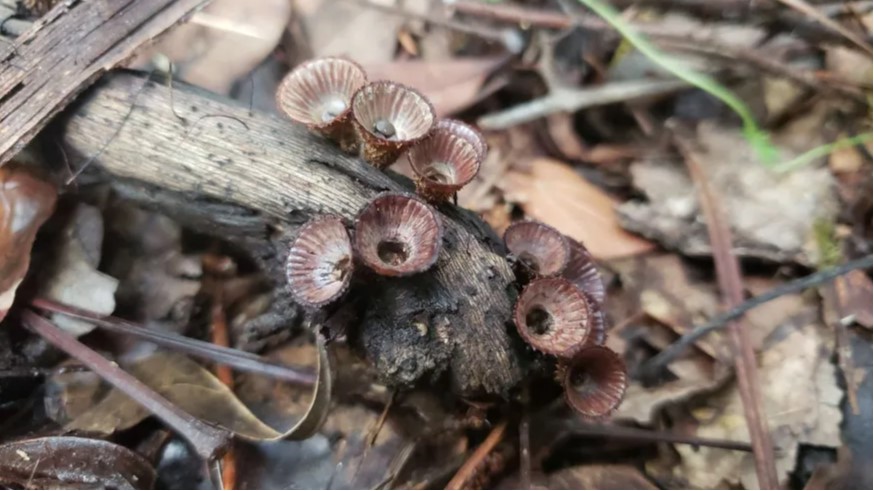
Splash cups or Cyathus Striatus is a birds nest fungi. Very small, paper thin and flimsy funneling fruiting body. Can appear year around in large amounts. My photo is unfortunately not a great example but there are 'eggs' in the center called peridioles that contain spores that are dispered from the force of rain droplets falling onto the cups.

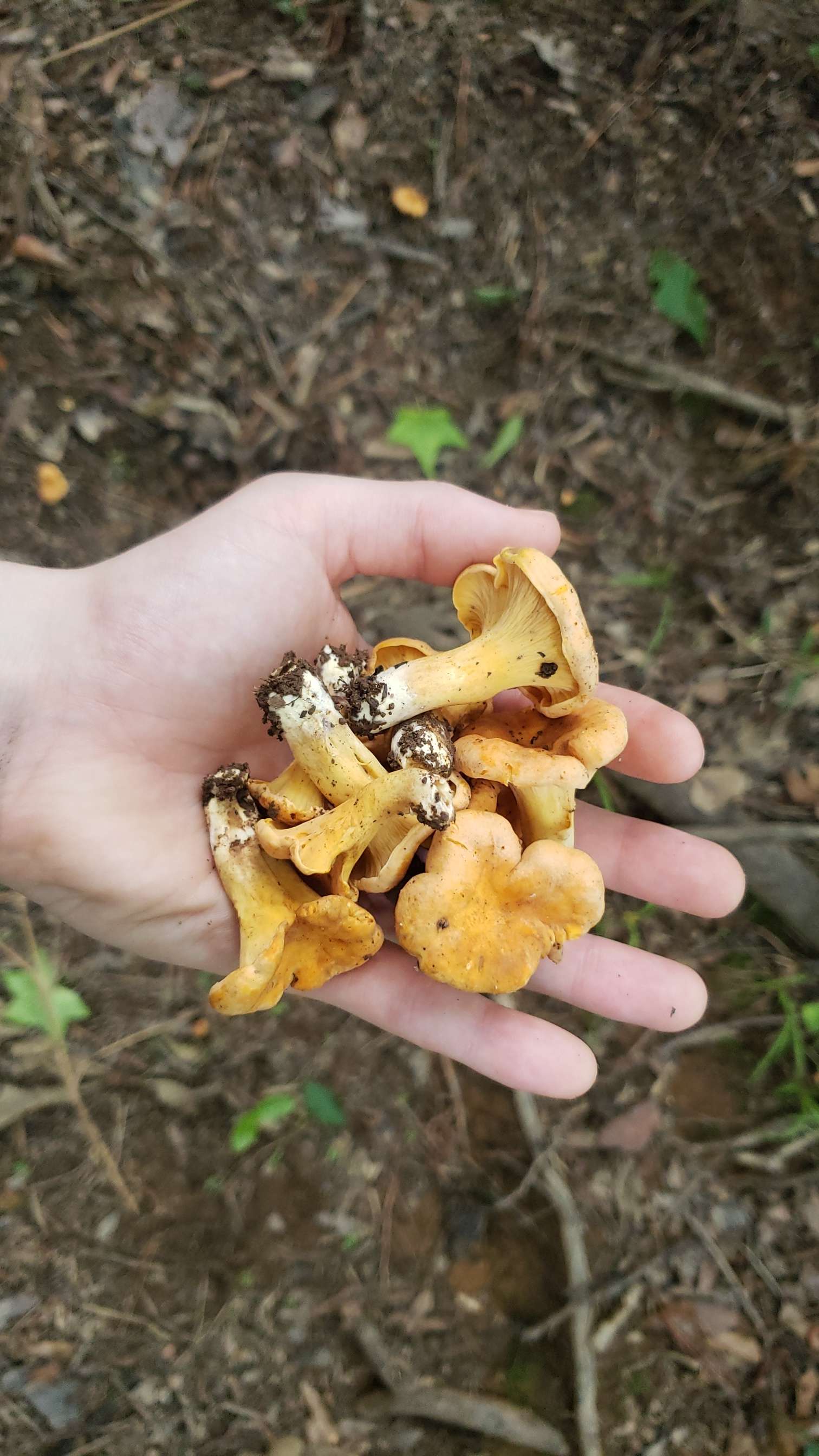
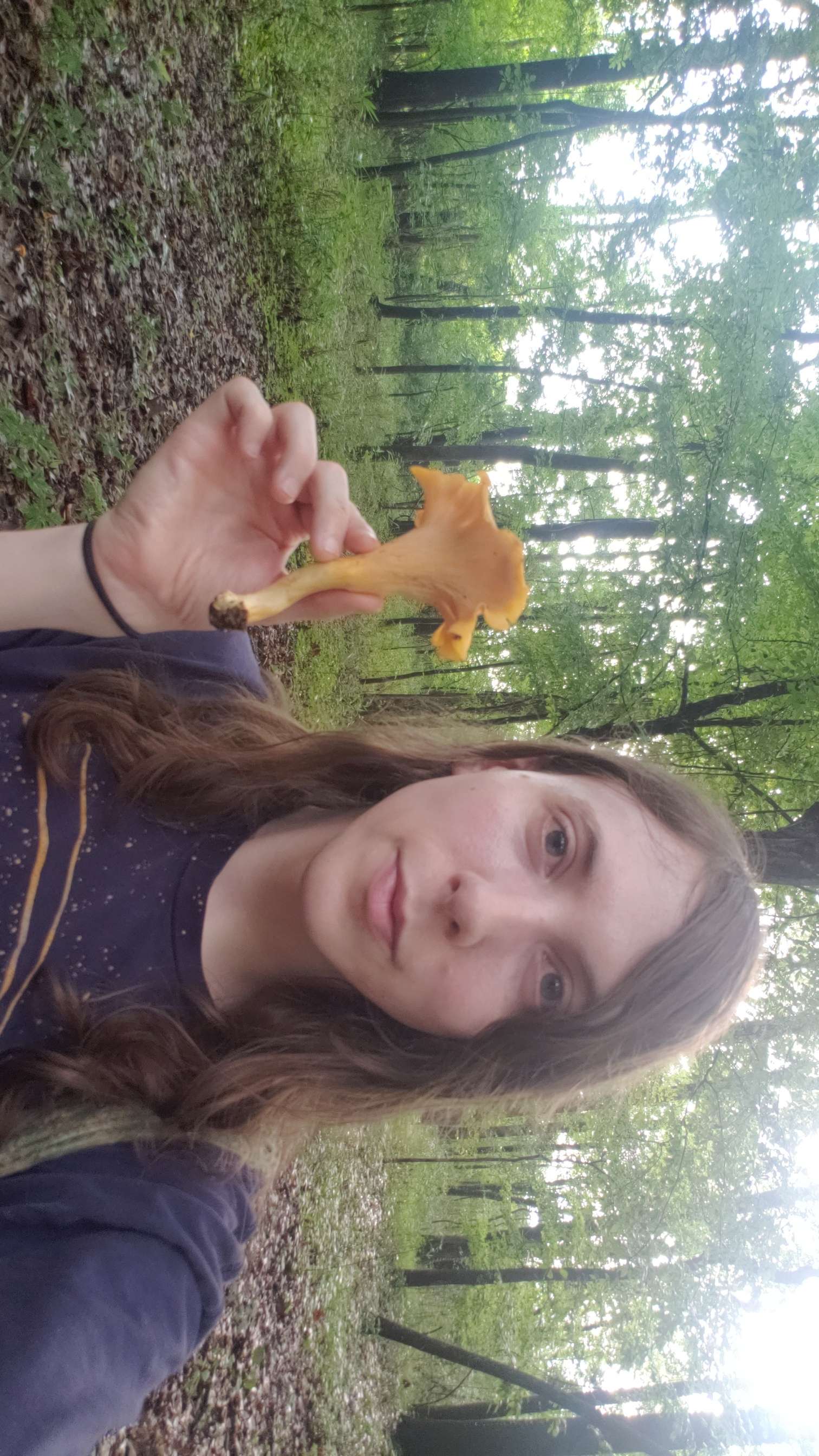
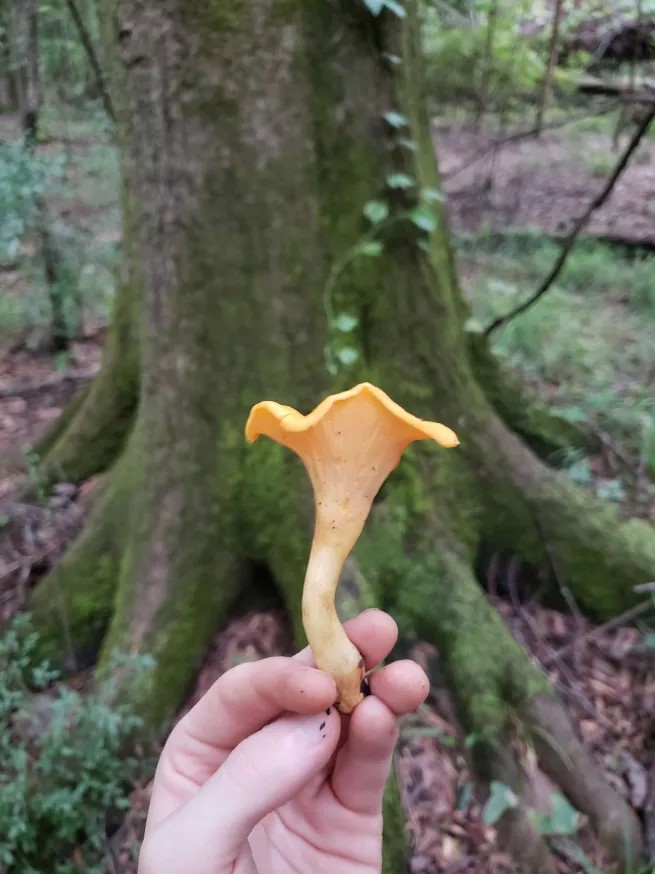
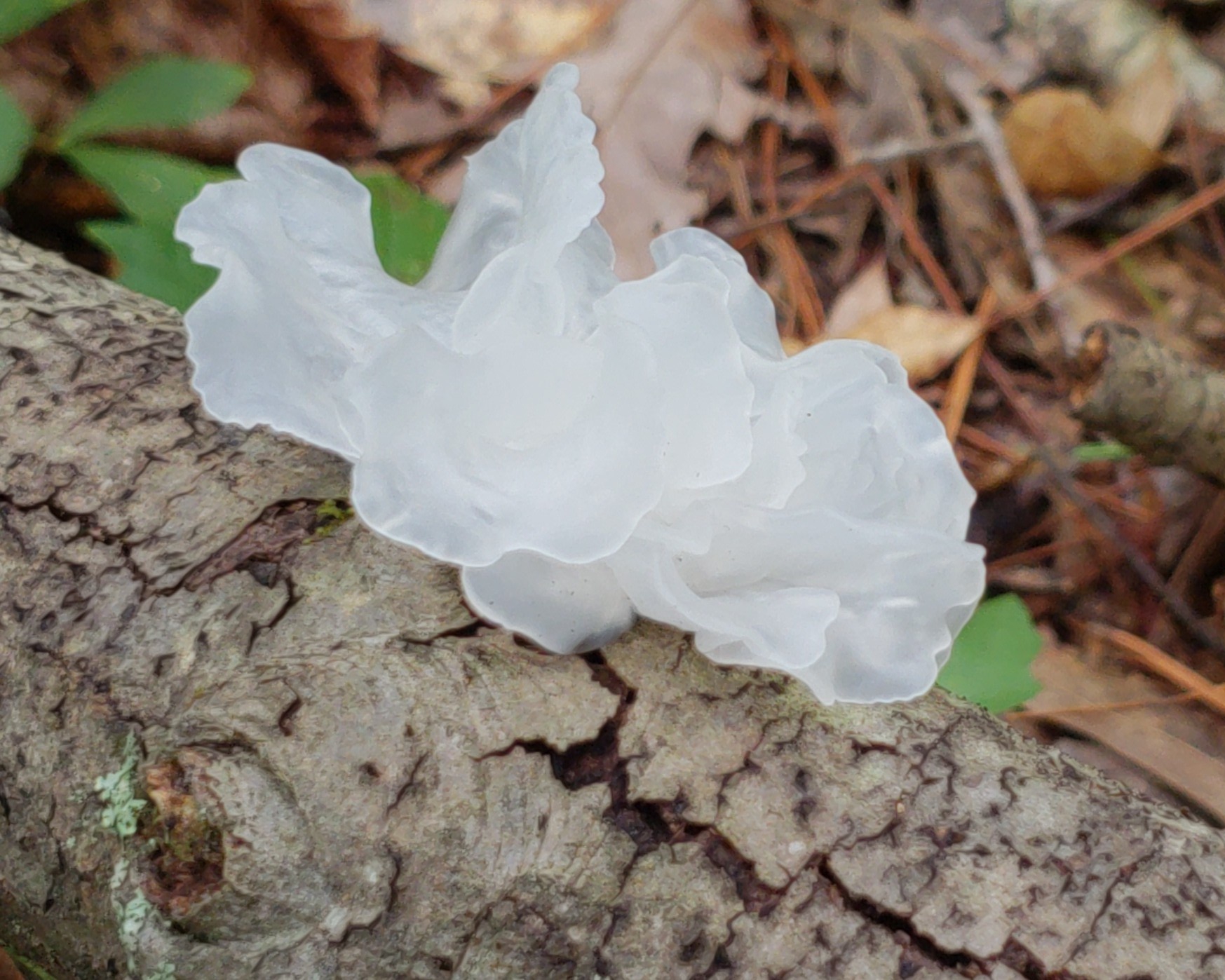
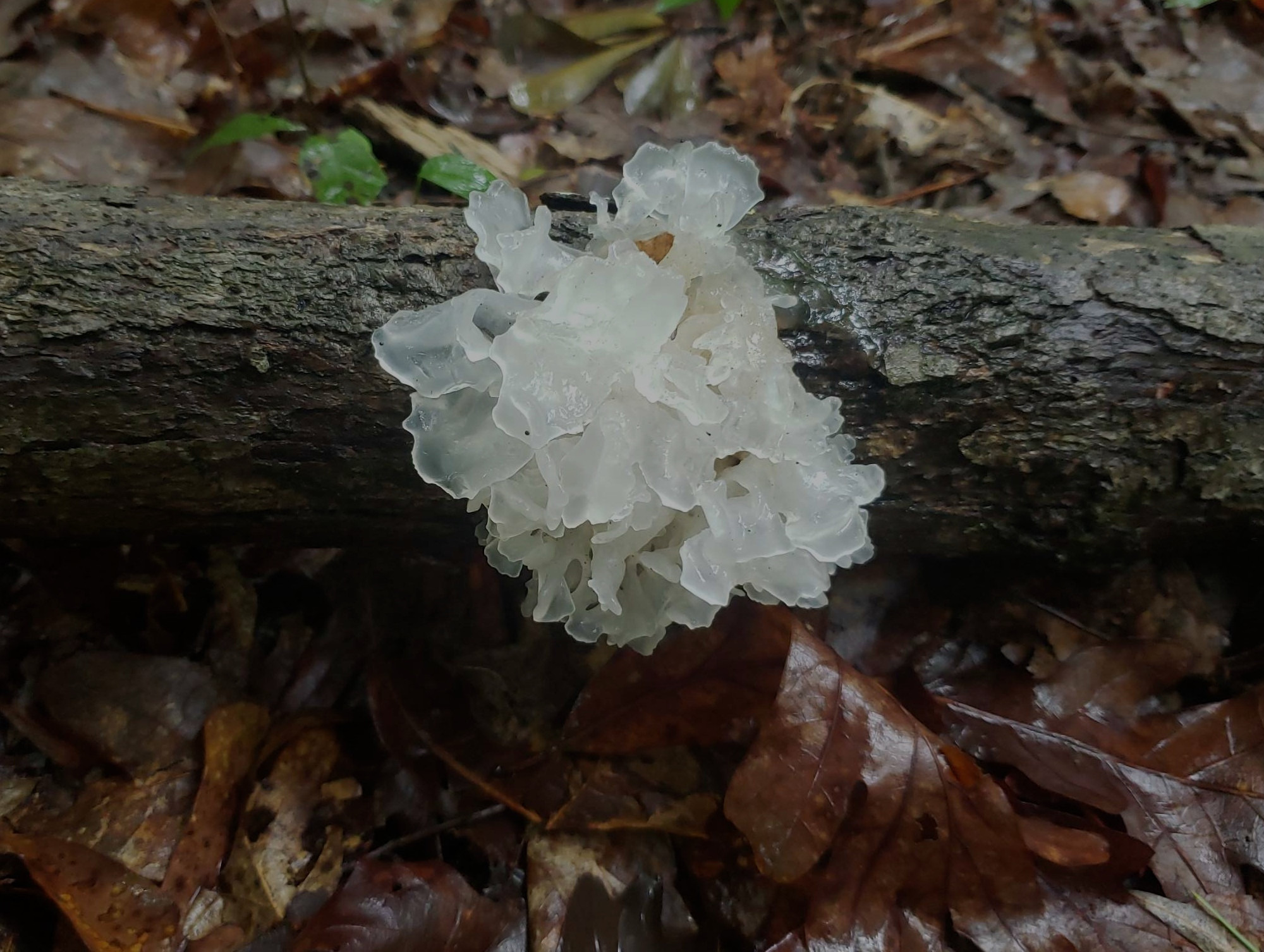







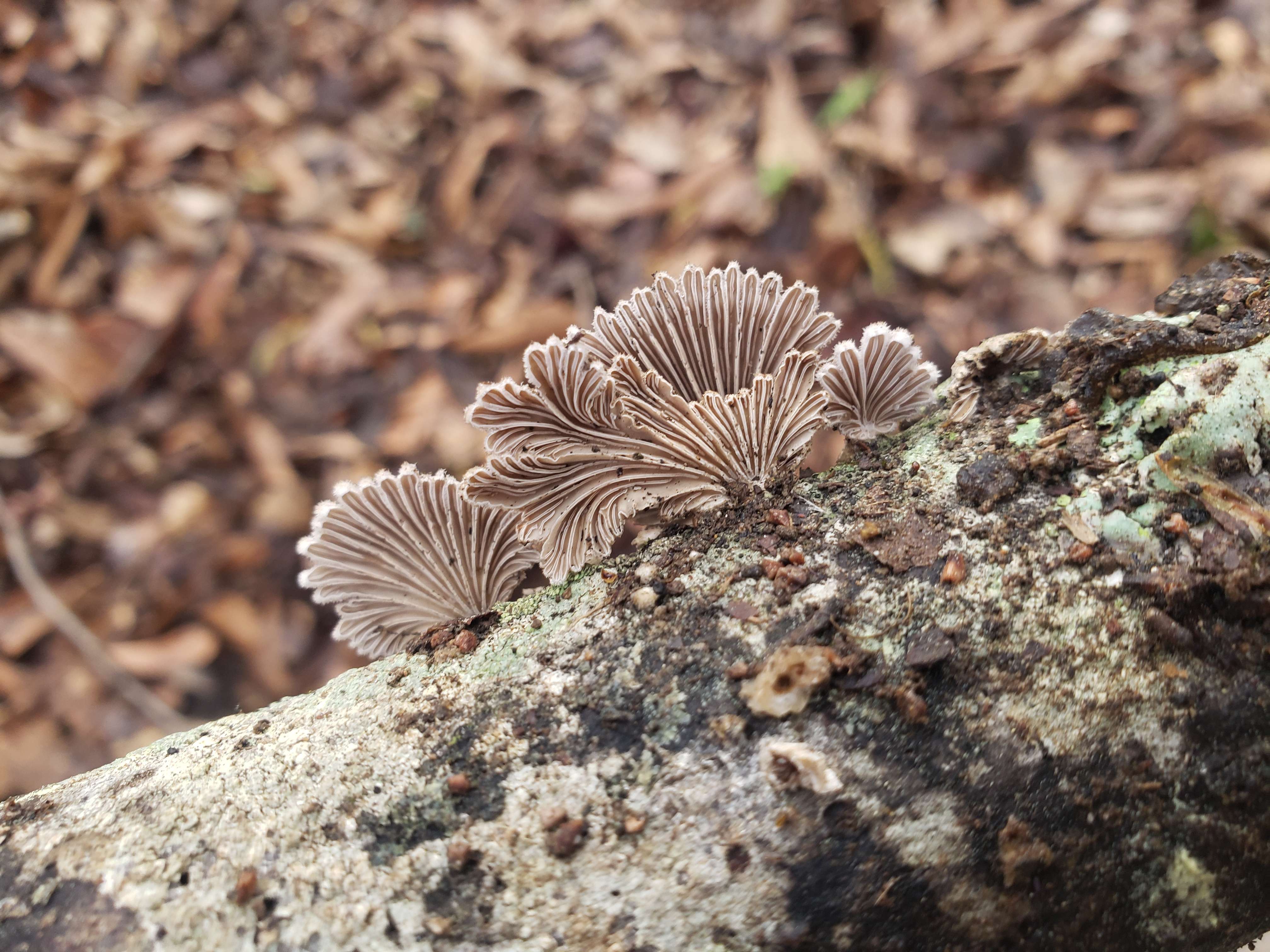
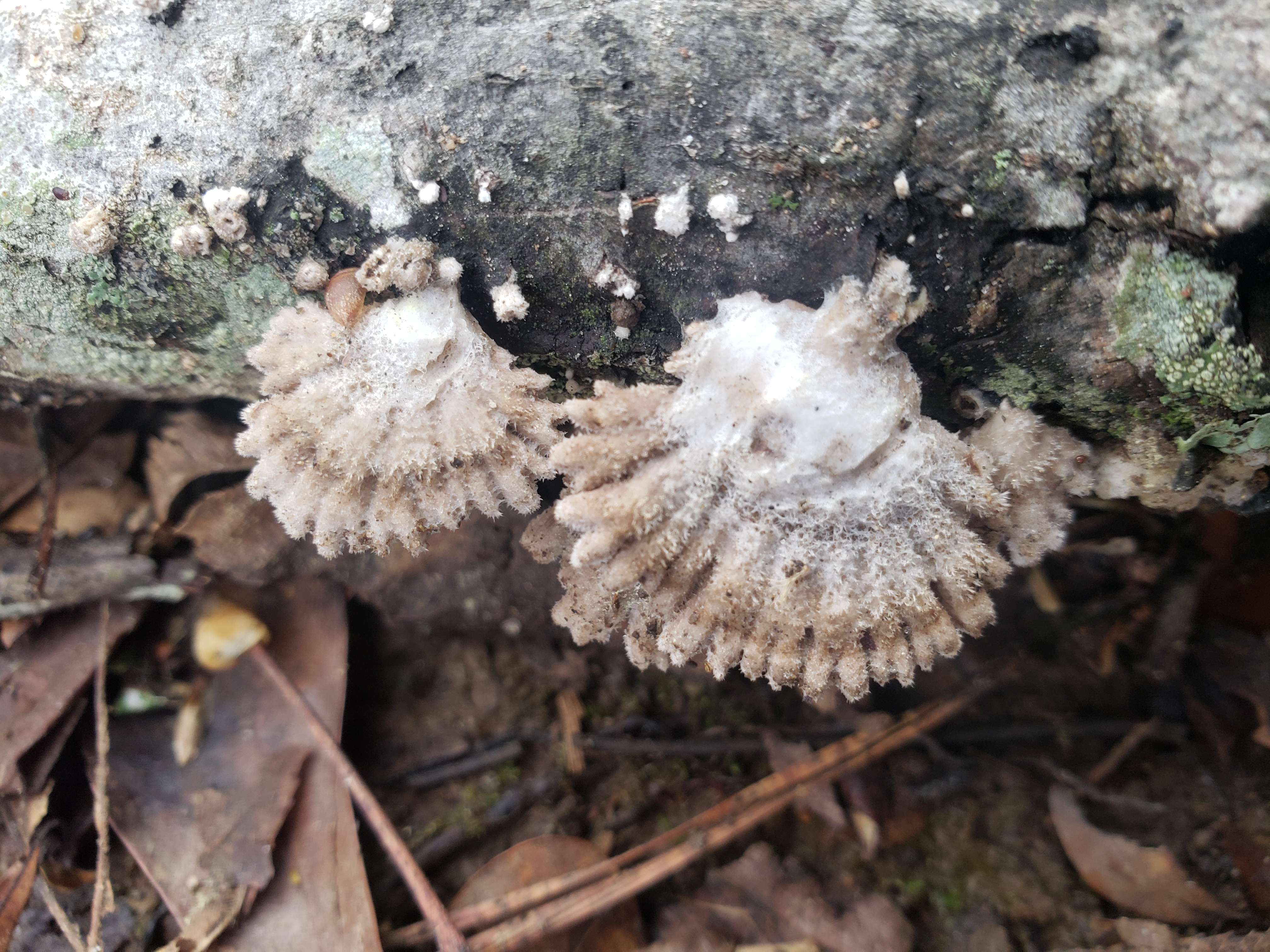



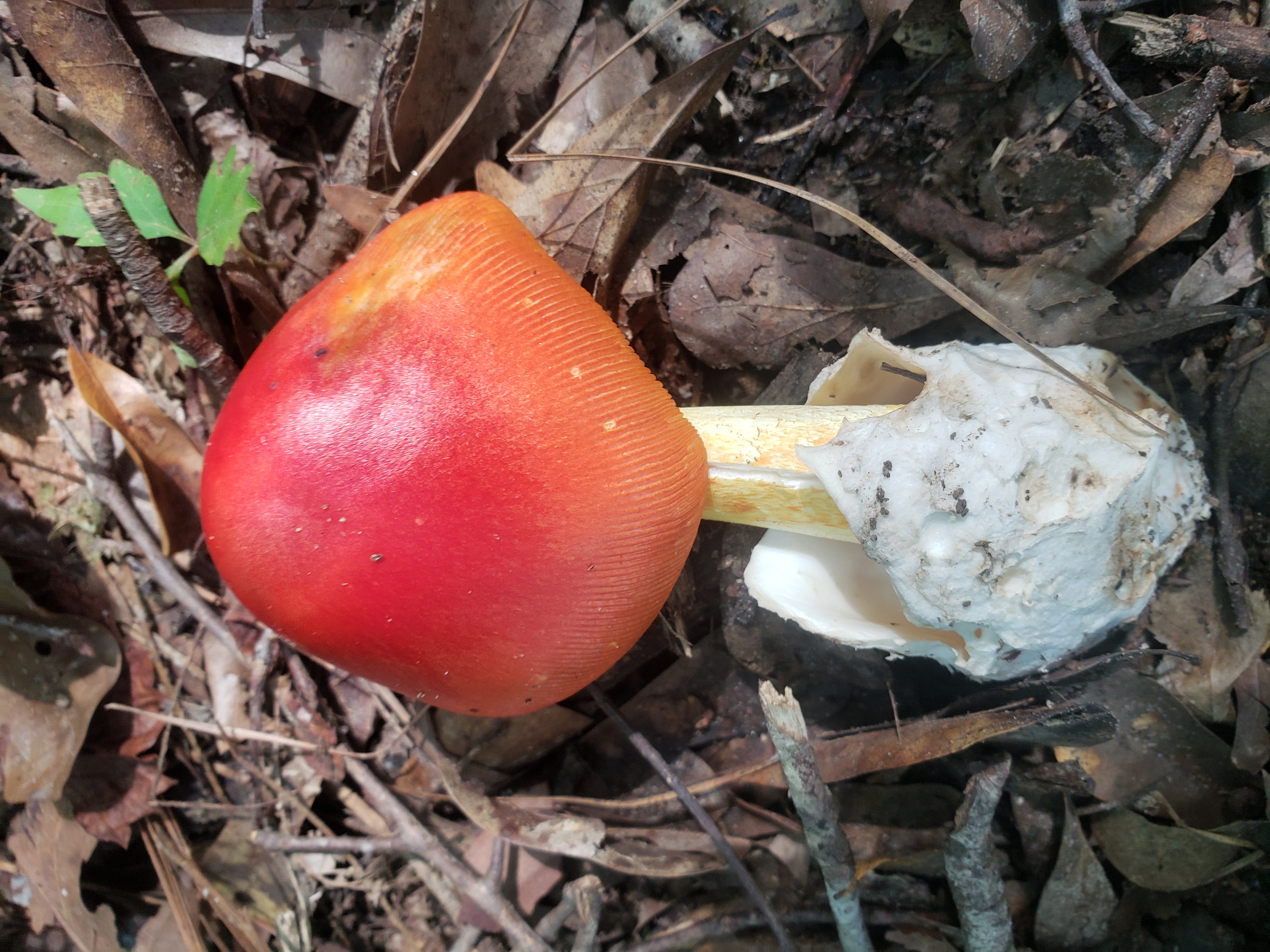
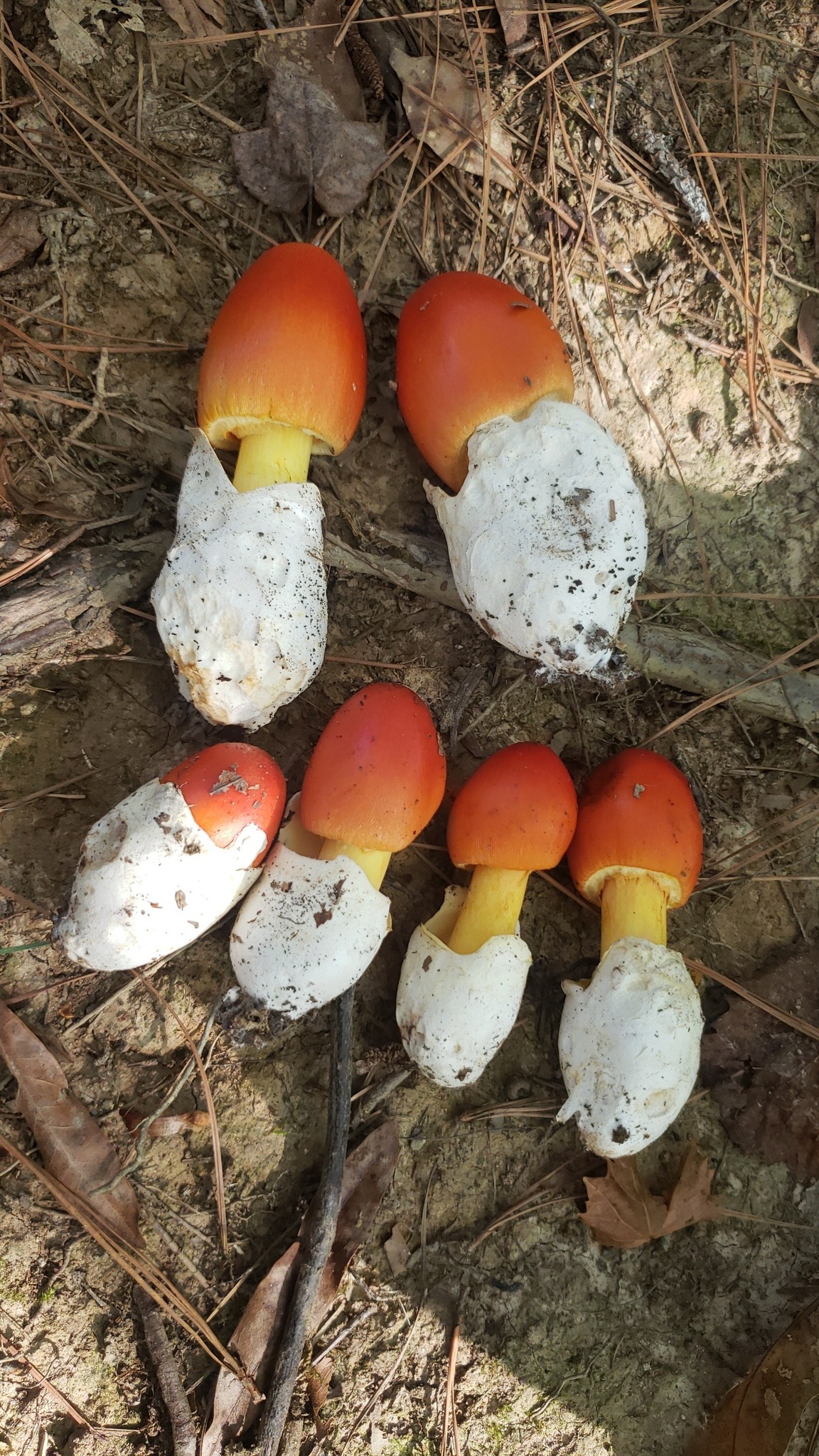
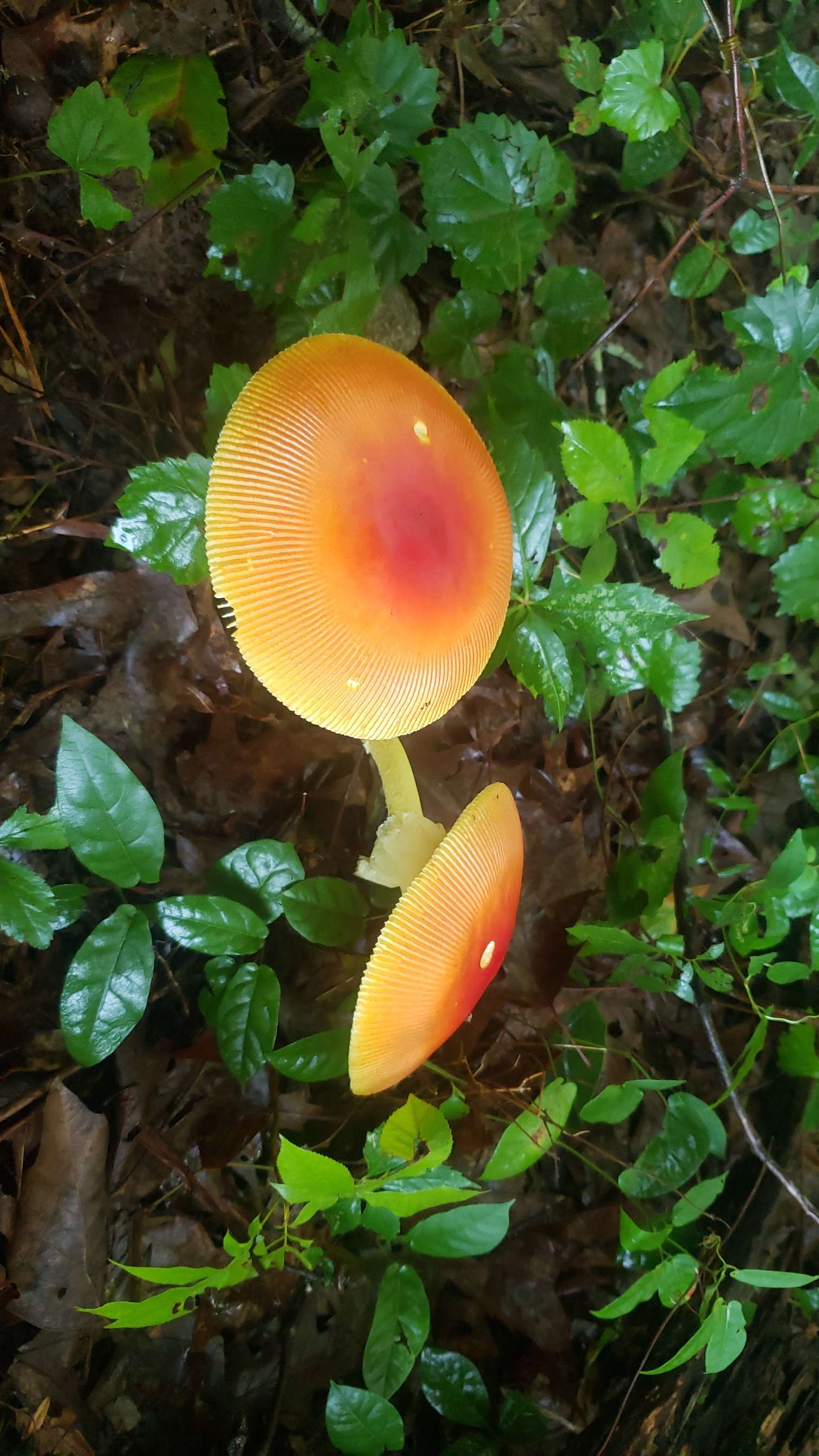














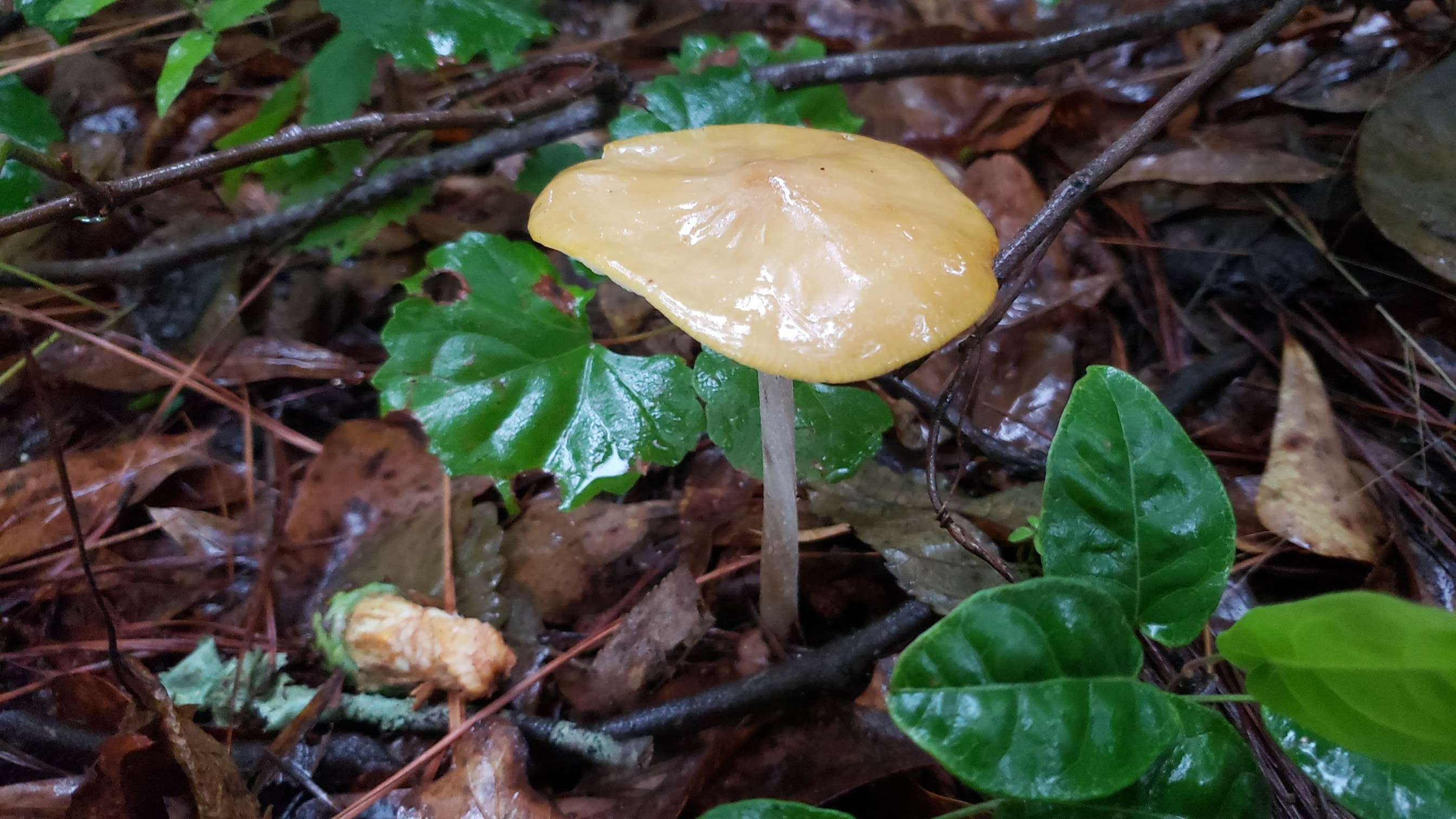
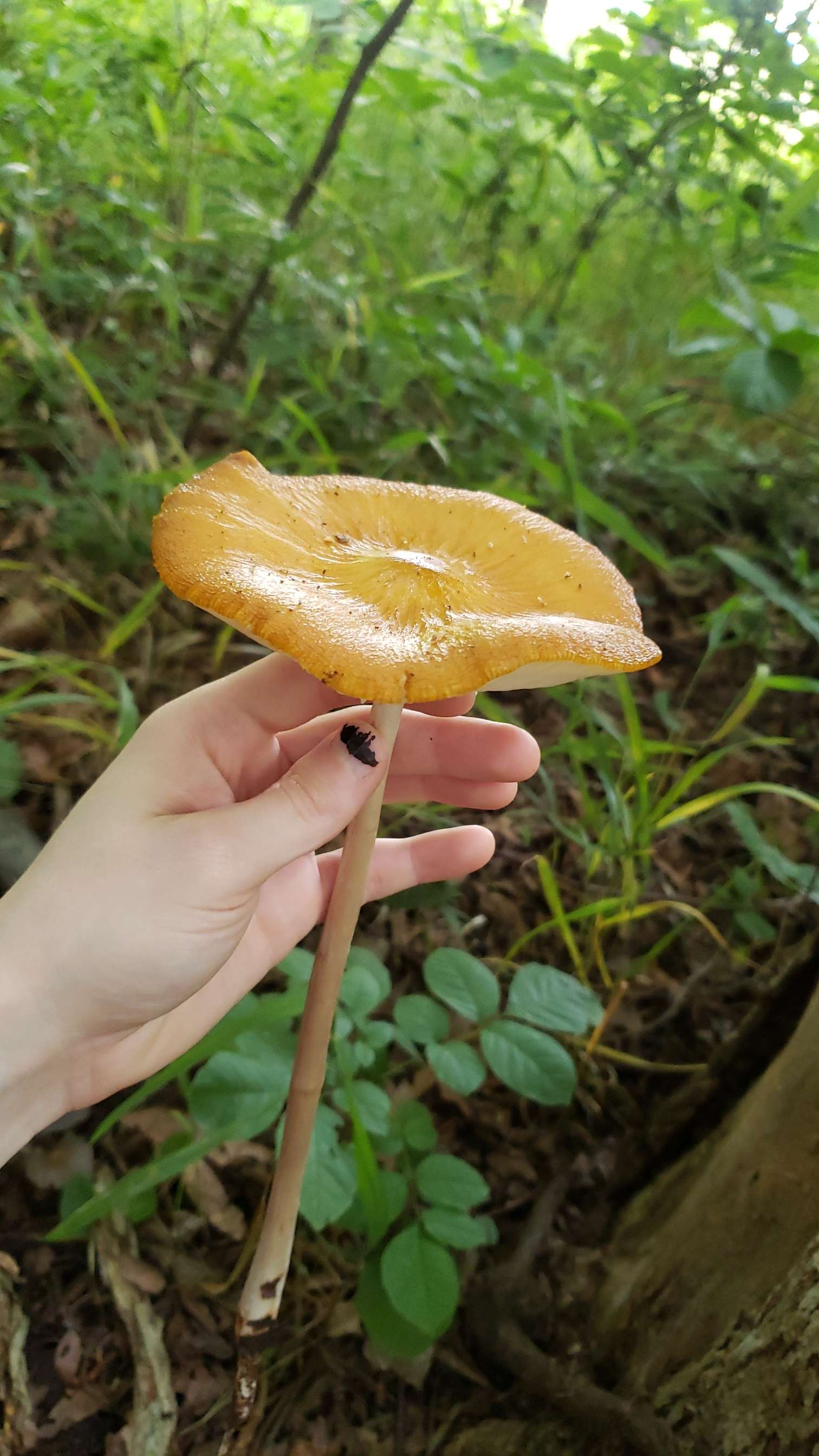
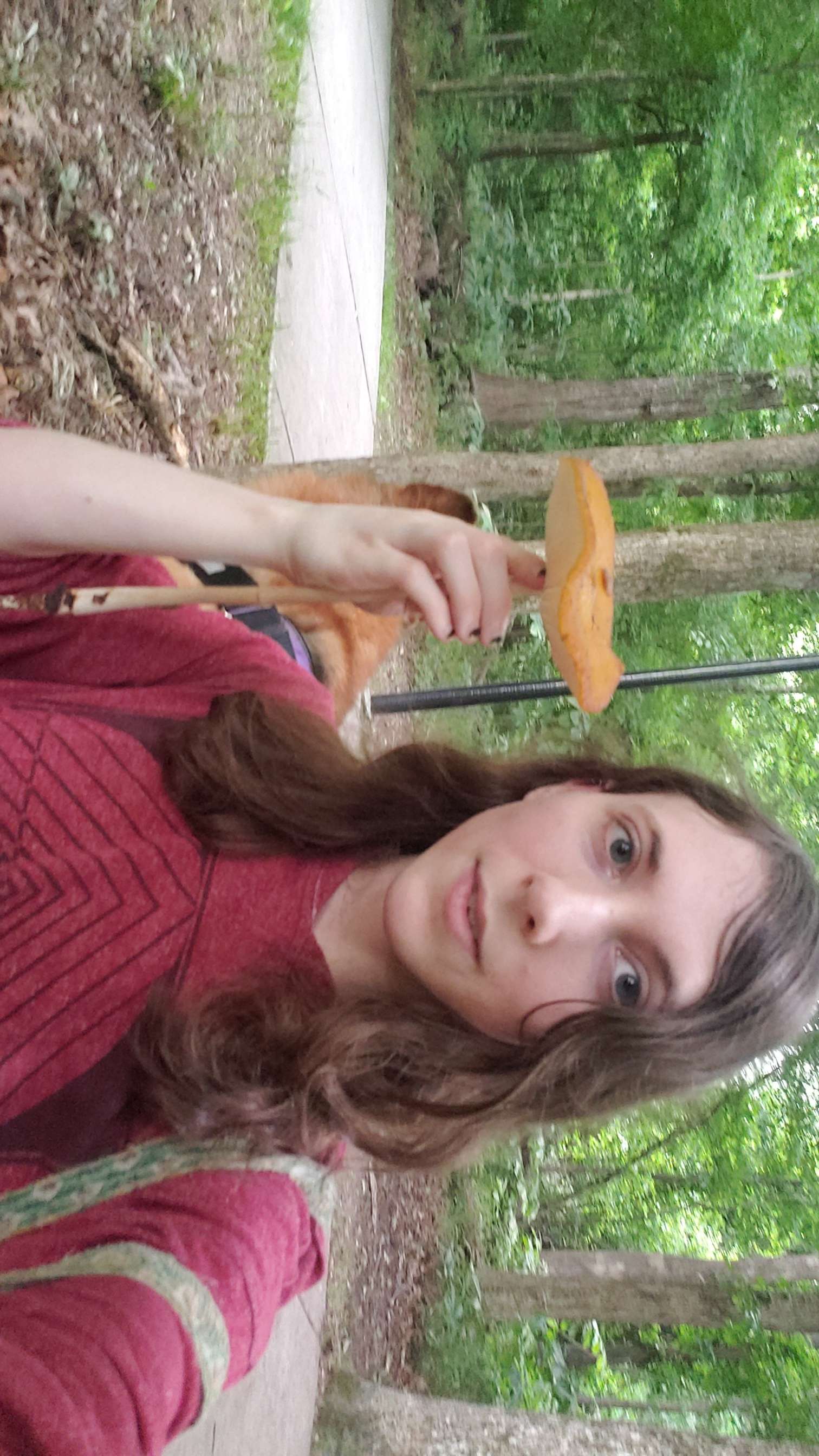







.jpg)






















